bm
BOLZANO BOZEN
MAGAZINE with APPIANO / EPPAN
LAIVES / LEIFERS
RENON / RITTEN
SAN GENESIO / JENESIEN
VAL SARENTINO / SARNTAL
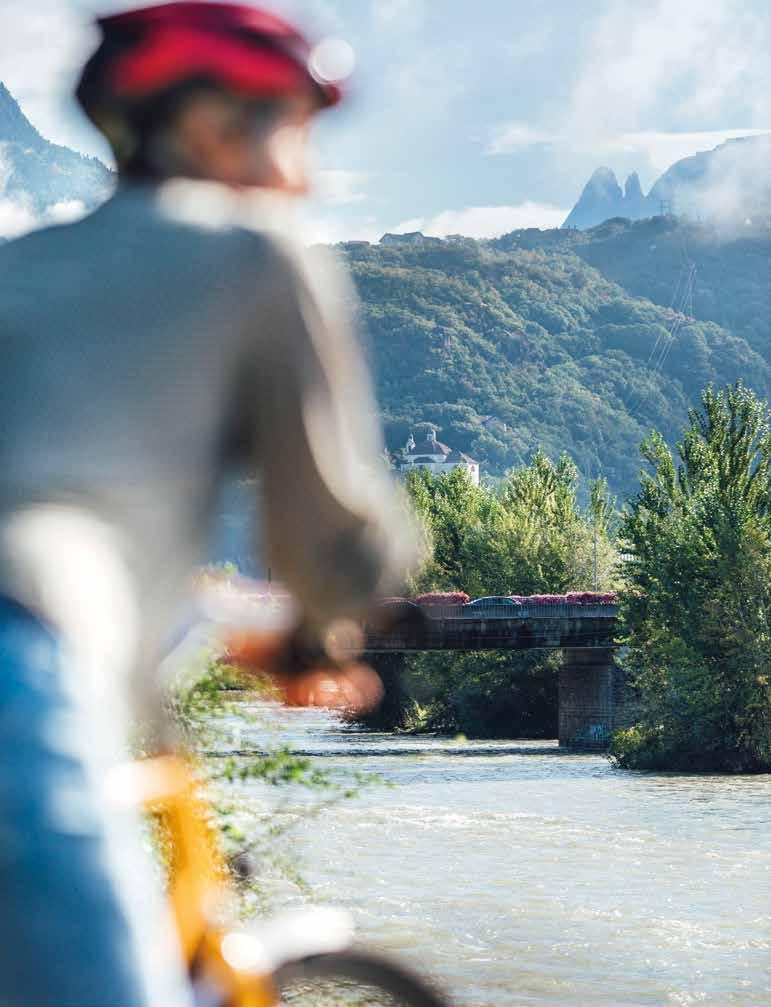
Urban Gardening
Urbane Gartenkultur
Giardinaggio urbano
Festivals & Speciale Busoni
Festivalkultur & Busoni
Music in town & Busoni
Wein & Wasser
Vino & acqua
Wine & water
E S T ATE / SOMMER / EMMUS R \ NR. 2 | 2023

Sich wohl fühlen, immer. Sentirsi bene, sempre. sparkasse.it Werbemitteilung | Messaggio pubblicitario
GENTILI lettrici e cari lettori, Le sfide del turismo diventano sempre più ambiziose e per farsi conoscere occorre capacità di comunicare, occorre cioè saper trasmettere la qualità del prodotto in modo corretto. Noi dell’Azienda di Soggiorno e Turismo di Bolzano crediamo nell’efficacia del messaggio che si ispira alla lealtà e alla correttezza e ci crediamo così tanto da affiancare, come facciamo in questo numero di bm Magazine, al fascino di Bolzano città, la magia dei suoi dintorni, dal Renon a San Genesio, da Appiano a Sarentino, arrivando sino a Laives. Una scelta, la nostra, che è stata spontanea e che risponde a una sua logica: la città si integra con i suoi dintorni che si sviluppano come naturali appendici. L’integrazione, a ben guardare, va a tutto vantaggio del turismo con le ciclabili che si insinuano in tutta la valle, con le passeggiate che sono un viaggio nella natura, con i vini che sono figli di un’arte antica, con villaggi che sono coriandoli di stupore, con la cultura multilingue che si respira ovunque. Ed è così che Bolzano continua a stupire. Buona lettura!
LIEBE Leserinnen und Leser, die Herausforderungen im Tourismus wachsen fast täglich, und um gute PR-Arbeit leisten zu können, muss kommunizieren gelernt sein. Was bedeutet, dass man in der Lage sein muss, die Qualität des Produkts auf faire Art und Weise zu vermitteln und an Frau und Mann zu bringen. Wir vom Verkehrsamt der Stadt Bozen glauben an die Wirksamkeit von Worten und Bildern, einer Botschaft - aber einer, die ehrlich ist und es ehrlich meint. Wir glauben so sehr daran, dass wir, wie in dieser Ausgabe des bm Magazins, den Charme der Stadt Bozen mit dem Zauber ihrer Umgebung verbinden, uns vom Kirchturmdenken lösen und Ritten, Jenesien, Eppan, Sarntal und Leifers mitnehmen auf unserer Vermittlungsreise. Das war eine spontane Entscheidung, die einer eigenen Logik folgt: Die Stadt bettet sich ein in ihre unmittelbare Umgebung. Wir sprechen von einer Ergänzung und Befruchtung, die bei näherer Betrachtung dem ganzen Tourismus der Gegend zugutekommt: mit den Radwegen, die sich durch die Täler schlängeln, mit den Wanderungen, die ein tiefes Naturerlebnis ermöglichen, mit den verschiedenen Weinsorten als altes Kulturgut, mit den vielen Dorfperlen der Umgebung, mit der mehrsprachigen Kultur, die man überall einatmet. Und so wird Sie Bozen, davon sind wir überzeugt, immer wieder in Erstaunen versetzen. Viel Freude und Inspiration beim Lesen!
DEAR readers, Tourism’s challenges grow almost daily, and good communication has to be learned, to achieve the best relations with our public. This means being able to convey the quality of our product fairly and getting that message across to people. We at the Tourist Office of the City of Bolzano believe in the effect of images and words, of a message - but one that is honest and sincere. To show you what we mean, in this issue of bm Magazine, we unveil Bolzano’s city charm, set in the magic of its surroundings treasures. We break out of the city limits and take you with us on a meditative journey through Ritten, Jenesien, Eppan, Sarntal and Laives. Our decision was spontaneous and follows its own logic: Bolzano city is embedded in its immediate surroundings. This is a relationship of symbiosis and cross-fertilisation, that on closer inspection, benefits all tourism in the province. Our cycle and hiking paths wind through the valleys, allowing a more profound experience of nature. There are varieties of wine that are ancient parts of our cultural heritage. Then we have our picture-postcard villages and the multilingual culture that you’re immersed in everywhere. And so we are convinced: Bolzano will leave you breathless, time and again. Wishing you an enjoyable and inspirational read!
Roberta Agosti Direttrice Reggente, Azienda di Soggiorno e Turismo Bolzano Geschäftsführende Direktorin, Verkehrsamt der Stadt Bozen Director, Tourist Board Bolzano

EDITORIAL ETATSE / SOMMER / S U M REM \ NR. 2 | 2023
1.©
12/ COVERSTORY
Bolzano Garden Culture 4.0

Giardinaggio in città
Bozens Gartenkultur 4.0
20/ CULTURE
4 gute Gründe für einen Bozner Sommer
4 valide ragioni per un’estate bolzanina
4 good reasons for a Bolzano summer

30/ PORTRAIT
Mythen erklären uns die Welt
La raccontastorie
The storyteller
38/ PHOTOSTORY
Flusslandschaften
Paesaggi fluviali Riverscapes
46/ OUTDOOR
Sarentino: Trekking ed escursioni Sarner Ausflugsparadies
Sarntal - excursion paradise
52/ KIDS
Ritten: Kinderfreundlichkeit siegt
Vince l'attenzione ai bimbi
A child-friendly triumph
60/ EXPERIENCE
S. Genesio: L’elegia dei mulini ad acqua
Geschichten von Bauernmühlen
Tales from the peasant mills
66/ BACKSTAGE
Laives: Rudys großes Fest
La grande festa di Rudy
Rudy's big party
4 INDEX 03
/ EDITORIAL 06/ GOOD NEWS
CULTURE BOLZANO BOZEN MERANO MERAN BRESSANONE BRIXEN SAN GENESIO JENESIEN VAL SARENTINO SARNTAL APPIANO EPPAN RENON RITTEN 12 COVERSTORY LAIVES LEIFERS 20 1.© 16.©
72/ PLEASURE
Eppan: Einkaufsmeile im Festkleid Miglio dello shopping
The shopping mile in festive dress
78/ GOURMET
Wein hoch drei
Etichette da scoprire
Wine times three
84/ RICETTA estiva Canederli di albicocca
86/ INSIDE OUTSIDE
Maria Teresa di Calcutta a Bolzano
90/ BOLZANO/BOZEN EVENTS
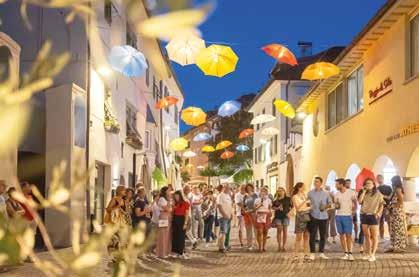
92/ EPPAN/APPIANO EVENTS
93/ LAIVES/LEIFERS EVENTS
94/ RITTEN/RENON EVENTS
95/ JENESIEN/SAN GENESIO EVENTS
96/ SARNTAL/VAL SARENTINO EVENTS

98/ IMPRESSUM
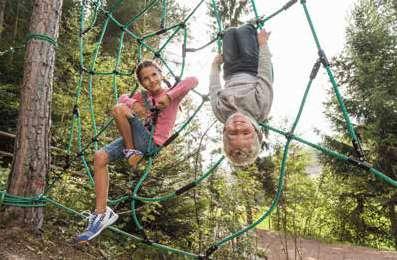
3.© 4.© 5 E STATE / SOMMER / REMMUS \
PLEASURE
KIDS 26.© 52 60 72 EXPERIENCE
GOOD NEWS
BOLZANO ART WEEKS 23

Saranno dieci i giorni di progetti espositivi, performativi, installativi e multimediali nella terza rassegna BAW – Bolzano Art Weeks, in programma in diversi luoghi della città dal 29 settembre all’8 ottobre. A curarne il ricchissimo carnet sarà il team creatosi attorno all’ideatrice Nina Stricker, per conto di Cooperativa 19 e Südtiroler Künstlerbund. La proposta artistica comprende oltre 90 eventi temporanei nelle 60 mostre adibite in oltre 70 location cittadine. Sono 100 i partner coinvolti per la kermesse d’arte più giovane di Bolzano. Si tratta di un modo inedito per far conoscere la città e il suo fermento culturale straordinario, anche ai suoi stessi abitanti. Lo sforzo organizzativo è notevole, ed è reso possibile dal sostegno delle Ripartizioni Cultura della Provincia autonoma di Bolzano, della Fondazione Cassa di Risparmio dell’Alto Adige e del Comune di Bolzano, che patrocina l’evento. Collaborano anche l’Azienda di Soggiorno e Palais Campofranco. Sono coinvolti soprattutto artisti locali ma anche nazionali attraverso una Call for artists lanciata nei mesi di giugno e luglio, con cinque vincitori selezionati dal comitato tecnico-scientifico di BAW. Ancor più marcata in questa edizione sarà la dimensione collaborativa e inclusiva, con la quasi totalità
delle istituzioni culturali coinvolte nell’inaugurare e proporre i propri progetti nell’arco temporale designato dalla rassegna: dalle grandi mostre di Museion e Fondazione Dalle Nogare ai progetti di ar/ge kunst, Südtiroler Künstlerbund, Associazione degli Artisti, Lungomare, Foto Forum e di tutte le gallerie private della città. Fra i partecipanti anche la Libera Università di Bolzano, VBB– Vereinigte Bühnen Bozen, spazi privati di associazioni e singoli/e cittadini/e, fino agli studi d’artista. E ancora: musei e tante piccole realtà sorprendenti – bar, alberghi, negozi, ristoranti, esercizi commerciali dismessi, anche molti spazi verdi della città, sia in pieno centro che nei quartieri cittadini meno conosciuti e più periferici, come Don Bosco, Europa-Novacella e Bolzano Sud. Verrà creato un circuito legato all’arte che collega i cinque quartieri di Bolzano e che porterà i partecipanti a conoscere zone forse ancora inesplorate. Lo spunto principale dell‘edizione 2023 è suggerito dalla parola chiave “Playground”, di buon auspicio per la creatività artistica del capoluogo altoatesino.
Tutte le informazioni, il programma completo e la mappa della città che segnala le location di BAW 23:
6
bolzanoartweeks.com 2.©
DIE STADT RADELND ERKUNDEN
Ein ambitioniertes Projekt der Interessensvereinigung ”Städtenetzwerk Südtirol City“ will, zusammen mit dem Institut für Public Management von Eurac Research, das Radfahren und den Radtourismus ins Rampenlicht stellen. Im Zuge der Europäischen Mobilitätswoche wird es an zwei Wochenenden im September – 16./17. und 23./24. – Initiativen im Sinne von ”Rad und Kultur“ geben, in allen sieben Städten Südtirols. In Bozen arbeitet die Stadtverwaltung an der Ideenfindung mit, sie hat bereits langjährige Erfahrung mit der Bozner Veranstaltung ”BoznerRadtag – Bolzanoinbici“. Der erste fand nämlich vor mehr als 20 Jahren statt. Der ”Bozner Radtag“ ist eine der beliebtesten Volkssportveranstaltungen der Landeshauptstadt, an der sich jährlich über 5.000 Radfahrer:innen aller Altersgruppen beteiligen. Der erste Bozner Radtag fand im Jahr 1992 statt. Radfahrer:innen können an diesem Tag die sonst vom Autoverkehr stark beanspruchten Straßen mit dem Fahrrad befahren. Die Stadt wird tagsüber für den motorisierten Verkehr gesperrt. Ziel der Veranstaltung ist es, die verschiedenen Attraktionspunkte der Stadt allen näher zu bringen und gemeinsam einen autofreien Tag auf ”zwei Rädern“ zu erleben. Der Festplatz auf den Talferwiesen ist dabei das “Herzstück” der Veranstaltung. Die Teilnehmer:innen können sich auch entlang der übergemeindlichen Radwege von Stadt zu Stadt fortbewegen und die verschiedenen urbanen Räume mit dem Rad erleben.
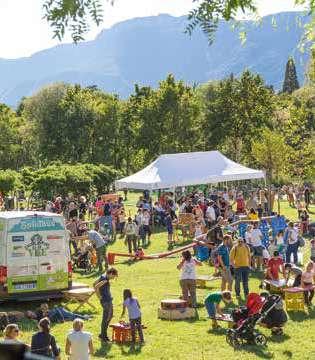

www.greenmobility.bz.it
MINIBZ 2023
For 7-14 year olds , June 19th-30th sees Children’s City - all day Mon-Fri. This year, the popular summer holiday programme turns twenty, with surprises in store! As a prelude, these include a giant role-playing game with more than 40 activities. Children's City represents a real miniature city: the children find staged areas that reproduce the most important areas of a modern city. These staged areas serve as a children’s space for play and other experiences. Since 1990, MiniBZ has been a city where the children call the shots and do the creating, and where adults have only limited access. In the children's city there is a mayor, the city council, various workshops, the employment office, the bank, its own currency (Euroghelli). There’s also a daily newspaper, television station, restaurant, hotel, taxi service and much more! In the Children's City, each child can decide for themselves to what extent and for how long they wants to get involved in the game, i.e. each child can also come and go as they please, they can try all the professions or focus on just one. Day tickets or flexible weekly subscriptions can be purchased online in advance:
hiips://minibz.vke.it
5.© 7 E STATE / SOMMER / REMMUS \
RITTNER SOMMERSPIELE FEIERN MIT POMP
Eines der traditionsreichsten Südtiroler Freilichtspiele wird 50. Seit 1973 haben die Rittner Sommerspiele jedes Jahr zwischen Ende Juli und Mitte August Scharen von Theaterfreund:innen auf den Ritten gebracht – in den Pandemiejahren 2020 und 2022 erstmals an einer neuen Spielstätte, dem stillgelegten Wieser Porphyrabbruch in Oberbozen, sonst an seinem Stammplatz in der Deutschordens-Kommende von Lengmoos. Autoren wie Johann Nestroy, William Shakespeare, Molière, Friedrich Dürrenmatt, Karl Schönherr, Ödön von Horváth, Felix Mitterer, Kay Pollack – alle wurden sie bereits mit ihren Kassenschlagern gespielt. Gegründet wurde die Kulturinstitution vom Rittner Kulturpaar Inga und Bruno Hosp gemeinsam mit dem späteren Profi-Schauspieler Peter Mitterrutzner und dem Bankangestellten Sepp Frötscher, der sich jahrelang um die Buchhaltung der Rittner Freilichtspiele kümmerte. Wunsch des Gründungskomitees war es, Spitzenleistungen im ”echten Volkstheater“ auf die Bühne des Kommende-Hofs in Lengmoos zu bringen. Über 300 Theaterbegeisterte gehörten zum Spielerstab der Rittner Sommerspiele, darunter einige der bekanntesten Gesichter der lokalen Kulturszene. Und gar manche haben den Sprung zum Film oder zum professionellen Theater geschafft, so Christine Mayn, Thomas Hochkofler, Lukas Lobis und Julian Pichler. 2023 wir das Südtiroler Ensemble mit Anleihen aus dem deutschsprachigen Ausland wie der indischstämmigen Schweizerin Gulshan Bano Sheikh den Komödienklassiker ” Pension Schöller“ von Wilhelm Jacoby und Carl Laufs aufführen, und zwar unter der Leitung von Alexander Kratzer: komisch, schräg, brillant, mit viel Wortwitz und musikalischem Klamauk. Premiere am 21. Juli, gespielt wird fast täglich bis zum 11. August
www.rittnersommerspiele.com
125 ANNI DI BANDA MUSICALE AD APPIANO
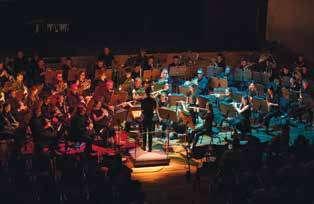
Il filo conduttore è l'entusiasmo, la gioia nel fare musica: il legame tra i circa 70 membri della Banda Musicale S. Michele/Appiano. "Ogni brano ha una sua storia", afferma Alexander Pircher. Il musicista di corno tenore gestisce la banda musicale di S. Michele in qualità di presidente. E quando guarda il foglio davanti a sé, non vede solo note ma anche la storia che c'è dietro. I 125 anni di storia di questa popolare istituzione di paese sono impressionanti: fondata nel 1898 come banda dei vigili del fuoco e consolidatasi nuovamente come banda delle associazioni nel dopoguerra, è stata ribattezzata “Bürgerkapelle” negli anni Cinquanta. È una delle quattro bande musicali che esistono nel comune di Appiano, insieme a quelle di S. Paolo, Cornaiano e Frangarto.
Che si tratti di marce o polka, di musiche da film popolari o di pezzi moderni: tutto è possibile e viene eseguito a seconda dell'occasione, sotto la direzione del giovane “Kapellmeister“ Patrick Gruber, che impugna la bacchetta da direttore d’orchestra ormai da dieci anni. "Facciamo le prove scrupolosamente due volte alla settimana", riferisce il presidente. Tra le principali esibizioni di quest’anno, spicca il concerto del 9 giugno nella sala concerti di S. Michele. In occasione della grande festa della musica (5-6 agosto), la domenica mattina ci sarà una sfilata con molte bande di paesi vicini e il coinvolgimento delle associazioni. A fine ottobre è in programma un concerto per solisti, con Sophie Pardatscher, Jonas Willhalm e Felix Trebo che mostreranno il loro particolare talento. È inoltre impossibile figurarsi questo corpo musicale senza i costumi tradizionali dell’Oltradige. Qualcosa di straordinario se si pensa che i membri che compongono la banda sono mediamente molto giovani; Pircher, con i suoi 45 anni, è quasi un veterano.
8
7.©
GOOD NEWS
SARNER SPEZIALITÄTENWOCHEN ZUM 25IGSTEN
Kircher, Restaurant Sunnolm, Bergrestaurant Pichlberg, Restaurant Bärenstube, Restaurant Pfnatschalm, Restaurant-Hotel The Panoramic Lodge. Die Jubiläumsausgabe des Sarnar Morgreti Essn findet vom 7. bis 16. Juli statt.

Putz or Stodtputz
”Morgreti“ ist ein Sarner Dialektausdruck, der abgeleitet wird vom Margarethentag aus dem katholischen Bauernkalender – ein Lostag, der am 20. Juli, in alten Kalendern am 13. Juli gefeiert wurde. Der hl. Margareta wird dabei als Schutzpatronin der Bauern gedankt. Wer in der Landwirtschaft arbeitete, und das waren bis vor fünfzig Jahren im Tal die allermeisten, der hatte Mitte Juli mit der wichtigsten Mahd rund die Hälfte der Saison hinter sich, Knechte und Mägde wurden ausgezahlt und konnten sich endlich etwas leisten. Das erklärt, warum gerade diese Zeit seit einem Vierteljahrhundert zum Sinnbild für Gaumenfreuden geworden ist, jedes Jahr im Sarner Juli. Die Auswahl beim Sarner Morgreti Essn ist reichhaltig, spielt mit den Sarner Traditionen und mit neueren Entwicklungen in der Haubenküche. Gourmetfreund:innen werden sich schwertun, eine engere Auswahl zu treffen. Vor 25 Jahren von Sepp Hochkofler vom Restaurant Sunnolm ins Leben gerufen, hat das Sarner Morgreti Essn mittlerweile einen Status erlangt, der übers Tal hinausgeht, wie der Wirt stolz verkündet. Jeder Gastbetrieb wählt seinen Küchen-Schwerpunkt, der eine Fisch, der andere Kräuter, Kalbfleisch oder andere Zutaten. Beliebt ist auch die Verlosungsaktion, die mit diesen Spezialitätenwochen verbunden ist: Wer sich nämlich in einem der fünf Betriebe von den kulinarischen Genüssen überzeugt hat, nimmt automatisch an einem Gewinnspiel mit hochwertigen Preisen teil. 2023 wird man eigene Sarner Münzen erhalten und mit dieser Lokalwährung im Tal einkaufen bzw. bezahlen können.
Teilnehmende Gaststätten: Restaurant Boutique Hotel
They usually patrol the city in pairs, earning respect through their presence, uniform and arms. They regulate the flow of traffic in times of congestion, give information, inspect restaurants, provide security and support the regular police. And yes, they also issue parking tickets if traffic education has not worked or the “sin” could have negative consequences for others. The South Tyrolean dialect word Putz means police officer and Stodt means city. Bolzano is served by 118 Stodtputz (83 men and 35 women) led by commander Fabrizio Piras. Even today, you’ll hear children use the word, when they play “Raber Putz” (cops and robbers). As a cautionary reminder, the highest number of fines in the context of road safety Bolzano last year were given for mobile phone use while driving. On the portal of the city police, you can find contact details, other useful information and even an interactive city map with statistics of traffic accidents.
hiips://opencity.comune.bolzano.it
9 E STATE / SOMMER / REMMUS \
www.sarntal.com
GOOD NEWS
PREMIO A DONNE PIONIERE

Dedicato a Agitu Ideo Gudeta, sociologa etiope e allevatrice di capre oltre che casara nella vicina valle dei Mocheni (TN), il Premio 2023 a donne
pioniere nell’agricoltura sostenibile va a Elisabeth Prugger, giovane coltivatrice di verdure della val Venosta con radici solide nell’antropologia e nell’architettura paesaggista. Premiate anche Stefania Lusuardi per la sua attività bio-sociale e Ala Adzakdia per il suo contributo solidale verso donne iraniane nella coltivazione di zafferano. Agitu era molto conosciuta a Bolzano grazie al suo stand biologico con vendita di prodotti casari e per il suo sorriso. La sua morte violenta a fine 2020 ha scosso l’Italia intera. La premiazione ha avuto recentemente luogo a Bolzano. Il premio, istituito da una rete di amiche di Agitu, vuole ricordare l’eredità della coraggiosa imprenditrice promuovendo in regione l’agricoltura sostenibile e l’impegno multifunzionale e visionario delle donne contro la crisi climatica.
VERKORKST
Was die Boznerin Evelyn Andergassen (Jahrgang 1953) in ihrem Debütroman ”Atlantikpassage“ macht, ist nicht nur eine humorvollgroteske Abrechnung mit Familie und Vergangenheit im 20. Jahrhundert, sondern auch ein Spiel mit den Leser:innen. Denn, einmal mit den Figuren identifiziert, will man schon wieder Abstand gewinnen – Empathie und Abgestoßen-Werden halten sich die Waage, wenn wir uns durchs Innenleben der Protagonist:innen wühlen. Wir begleiten ein Bozner Ehepaar 80+ auf ihrem letzten großen Abenteuer, der Atlantikpassage auf einem Luxuskreuzschiff nach New York nach einem Lotto-Gewinn und erhalten eine amüsante Lektion in Vergangenheitsbewältigung und familiäre Verstrickungen. (224 S, Edition Raetia, 2023, 21 Euro)

LAIVES: 25 ANNI DI CENTRO GIOVANILE FLY
Il Centro Giovani Fly di Laives compie gli anni con una grande festa: la piazza parrocchiale ne sarà il palcoscenico il 10 giugno 2023 per tutto il pomeriggio fino a mezzanotte. Ci sarà da mangiare e da bere, e certamente non mancherà il divertimento per tutte le età. Il programma prevede giochi, musica e attività di intrattenimento per bambini, ragazzi e adulti, quindi una giornata di svago per tutta la famiglia. Con una lunga storia alle spalle, il Centro Giovani Fly è diventato un punto di riferimento per i giovani del territorio, che qui possono incontrarsi, socializzare e partecipare ad attività e formazione. Tutto è iniziato nel 1998 come parte dei progetti di ristrutturazione della sala parrocchiale, con l'obiettivo di fornire un luogo di incontro per i giovani. In un primo momento gestito da volontari, dopo due anni il centro si è professionalizzato con l’assunzione di personale a tempo pieno. Nel corso degli anni il centro ha organizzato concerti, feste ed eventi rivolti ai giovani, diventando una vera e propria base per la promozione della diversità con i valori centrali del rispetto e della tolleranza. Ampliandosi, ora include assistenza pomeridiana e aiuto compiti, assistenza estiva e una vasta gamma di appuntamenti culturali per la città: mostre, laboratori, serate di discussione, eventi teatrali e musicali. Grazie a quest’ultimo sviluppo, il centro è diventato anche una piattaforma per gli adulti. La festa dei 25 anni rappresenta un momento importante per celebrare questo traguardo, ma anche per guardare al futuro e rinnovare l'impegno nel sostegno e nella promozione delle attività giovanili a Laives. L'invito è rivolto a tutti, grandi e piccini.
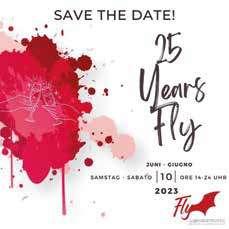
10
LUCIDO E STRUGGENTE
Hubert Messner, il fratello medico dell’alpinista forse più famoso al mondo Reinhold Messner, ha chiuso la sua lunga carriera di pioniere della neonatologia altoatesina con un libro di memorie raccolte nel reparto di terapia intensiva neonatale a Bolzano, dove si lotta per la vita dei bambini nati prematuri. La sua indole di avventuriero e montanaro, anche nei ghiacci più spietati in spedizioni o cordate al fianco del fratello, lo ha portato più volte a rischiare e a spingersi oltre i limiti nel salvare vite. Le commoventi vicende estreme fanno riflettere. “Sul filo del crinale. La vita e la morte nell’esperienza di un medico amante dell’avventura” (240 pp, raetia, 2022, euro 20 –oltre all’edizione e-book)
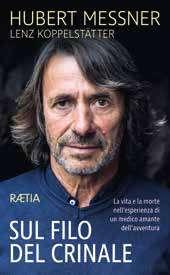
” HIRSCHEN “ PUNKTET MIT NACHHALTIGKEIT
Vor kurzem hat das Hotel & Gasthaus ”Zum Hirschen“ im Ortskern von Jenesien ganz offiziell die Auszeichnung als nachhaltig arbeitender Betrieb erhalten: Diese bisher einzige internationale Nachhaltigkeitszertifizierung wird vom Globalen Rat für Nachhaltigen Tourismus (GSTC) vergeben und betrifft sowohl den Restaurant- als auch den Wellness-Bereich. Die Hirschen-Wirtin Petra Oberkofler freut sich sichtlich über die Anerkennung: ”Unsere Weiberwirtschaft ist nicht nur dafür berühmt, dass es bei uns fröhlich und gemütlich zugeht. Nein, jetzt haben wir’s schwarz auf weiß, dass wir unser ganzes Tun und Wirtschaften so ökologisch wie möglich ausrichten. Seit Jahren sind wir schon klimaneutral, wurden seit 2022 mit dem vom Guide Michelin verliehenen ”Grünen Stern“ für nachhaltiges Kochen ausgezeichnet. Was uns hier gefällt, ist, dass der GSTC nachhaltigen Tourismus definiert durch Umweltauswirkungen, soziale Verantwortung, wirtschaftliche und kulturelle Lebensfähigkeit der entsprechenden Gemeinde und Verwaltung eines Nachhaltigkeitsprogramms. Kein geringeres als das Umweltprogramm der Vereinten Nationen hat diese weltweit geltenden Kriterien für Tourismusbetriebe ins Leben
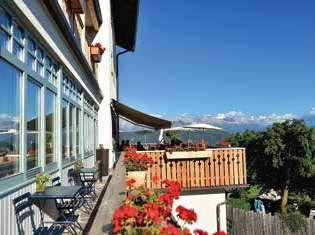
gerufen! Die Motivation ist jetzt umso größer, vielleicht auch weil unsere Familie bäuerliche Wurzeln hat und traditionell immer darauf geachtet wurde, dass die natürlichen Ressourcen, von denen wir leben, erhalten bleiben. Der Nachhaltigkeits-Gedanke hat sich nur modernisiert, die Vision ist die gleiche geblieben.“
What does MMM stand for?
a) Museum of the Mountain Man
b) Mountaineering and Mineral Museum
c) Messner Mountain Museum
Solution on page 98
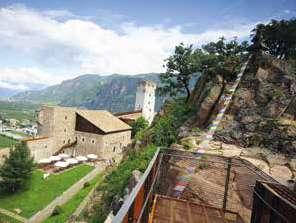
11 E STATE / SOMMER / REMMUS \
QUIZ 10.© 11.©
Museums around Bolzano
BOLZANO GARDEN
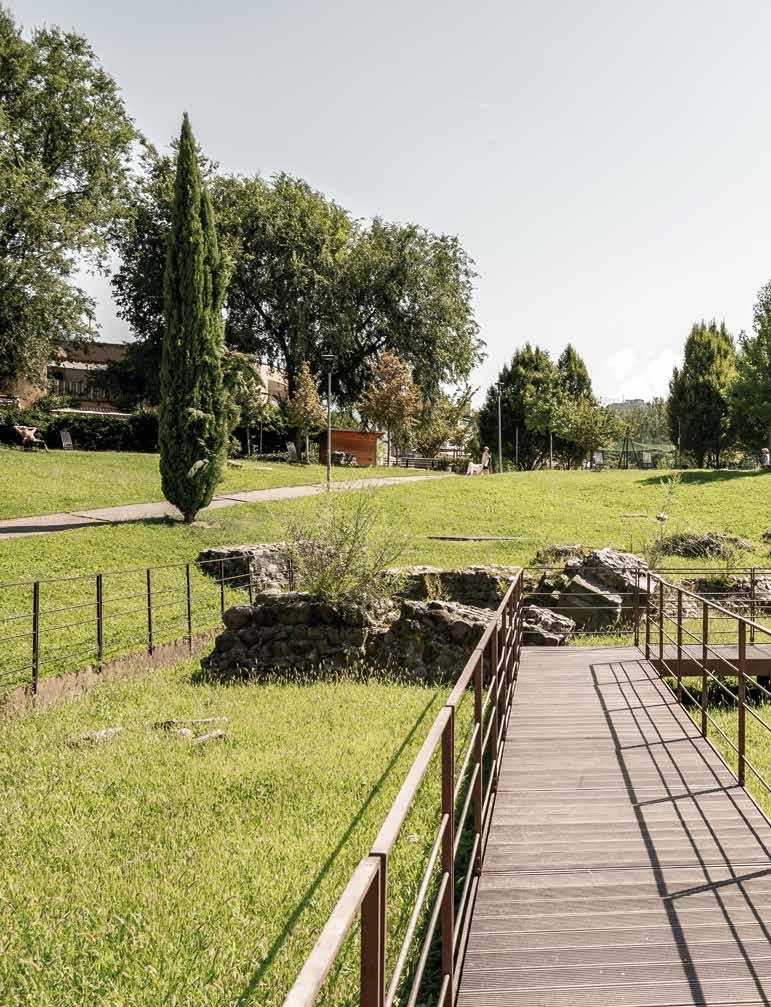
CULTURE 4.0
Greenery: in the parks, promenades and on the riverbanks. The public spaces, under the care of the municipal gardening department, are many. The allotment garden culture, the numerous garden centres and community gardens are equally as colourful and inviting; together with the even more numerous private gardeners on balconies and behind garden hedges. A reflection.
GIARDINAGGIO IN CITTÀ
p. 18
BOZENS GARTENKULTUR 4.0
p. 19
12
COVERSTORY

13 E STATE / SOMMER / REMMUS \ 1.©
This is about garden culture in the greater Bolzano area, about the joy of nature surrounding our homes and in public space. It’s about the concern for water as a resource and the challenges wrought by the Alpine region’s increasingly frequent hot spells. Ultimately, it’s about the efforts to ensure diversity of species in greening our own green spaces. bm spoke to a number of experts, including gardener Kathrin Reider (photo), district chairperson of the South Tyrolean Gardeners' Association in Bolzano. She tells of the proactive initiatives to not only beautify the city, but also to cool it down through greenery. Around thirty gardening businesses serve Bolzano – with most family-run, some now into their third generation. Among them are both pure production businesses and retail businesses with their own plant production. They all have one thing in common: they’re suffering from the 300% increase in electricity and heating costs for their greenhouses. Nevertheless, they are countering the climate crisis with a series of plans and measures.
What's next, and what are Bolzano's gardeners currently up to?

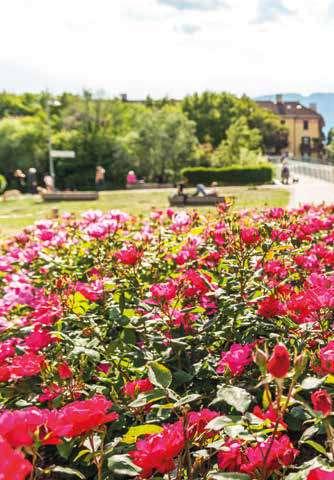

By-and-large we’re upgrading our technical equipment, to achieve optimal temperatures and ventilation, in as efficient, resource-saving and cost-effective way as possible. When it comes to watering, this means either using closed-loop systems, such as ebb and flow tables, or drip irrigation. It also means looking much more carefully at the selection of varieties when breeding.
Speaking of plant varieties, what can be done in this area, even by amateur gardeners?
Lots! When buying plants or planning gardens, we all have to favour drought-tolerant plants and those that are insect-friendly, in order to increase biodiversity. I always advise planting borders with perennials that guarantee a long flowering period, such as catnip, bluebeards and maidenhair. Among the shrubs, butterfly bushes and wild fruit trees.
5.© 14 EN/
So are nurseries increasing their focus on sustainability?
Absolutely! We have been reducing peat in plant production for a long time, using recycled and also rotting pots, avoiding plastics – even in gift packaging and garden boxes. We work with beneficial insects and on plant strengthening, no longer using preventive spraying. Chemicals are only used very selectively or not at all, but we are very choosy about what we buy and check the health of every plant before it’s welcomed into our nurseries.
What advice do you have for our greenery-loving readers?
Go wild! Experiment with greenery on your own balcony. Even with very little, you can achieve a lot: for the eye, making the cityscape inviting; but even more for the urban climate. The evaporation from your greenery considerably lowers the temperature along the walls of the house and binds greenhouse gases -which are then not released into the atmosphere. So, your desire for greenery is gift to all of us!
SOUTH TYROLEAN PLANT OF THE YEAR 2023

Südtiroler Gärtnereivereinigung - the South Tyrolean Gardeners' Association - has chosen a trio of colours from the “Vista” petunia series, by the Psenner nursery in Bolzano. It’s a combination of Vista Bubblegum, Silverberry and Paradise. The petunias in this series are prized for their early, very long-lasting and weather-resistant flowering and suitability for large bedding. They’re a real eye-catcher!
hiips://vista-petunia.com
The Arbeitskreis für Gartenkultur - or Garden Culture Working Group - was founded by a group of garden lovers who have made it their mission to pass on garden knowledge, exchange experience, promote dialogue between amateur and professional gardeners, all to awaken the joy at the diversity of the plant world. The working group strongly believe we should have the garden that suits us. To this end, they bring members together, searching for new ideas through professional educational trips and excursions to special private gardens in German and Italian-speaking countries. All of this knowledge is shared through their own digital magazine. Helga Salchegger is a member of the working group committee, while also head of the horticulture department at the Laimburg experimental centre, south of Bolzano. Her tip is: “Look beyond your
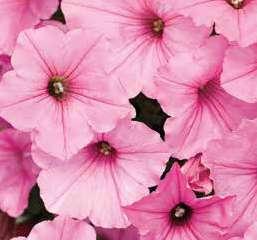
12.© 15 E STATE / SOMMER / REMMUS \ 13.©
garden fence and the fences of others. Gardening is a cultural activity and can only be done in exchange with others. A garden is a special place: it combines the useful with the beautiful, work with leisure, nature with culture.”
Founded in 2007 by garden lovers Waltraud Staudacher and Martha Canestrini, the working group operates within the framework of the South Tyrolean Education Centre. The programme of activities includes organising seed and plant exchange markets, preserving and disseminating ancient and endangered plant varieties, and conducting garden tours. News is published four times a year, with tips and advice in German for hobby gardeners of all levels. See
www.sbz.it

The municipal Schrebergärten initiative (allotment gardens), for retirees over 60 and disabled people, focuses on the joy of gardening and the eager anticipation of sampling the yield from your own vegetable patch. The municipality of Bolzano provides 12 areas, most in the south of the city, at very reasonable rental costs. The beneficiaries of these allotments are entitled to tend their plot for up to nine years, bringing home all the fruits of their labour. The aim of the municipal administration is to bring people together in the open greenery, to avoid social isolation and promote physical activity through meaningful leisure activity into old age.
It's the beginning of a sense of community. For example, there’s the intercultural Semirural Garden project , run by Donne Nissà, a Don Bosco neighbourhood association at the crossroads of via Bari and via Alessandria. Since 2010, people from the neighbourhood and beyond have been toiling in this garden, the heart of a multicultural residential community. The “experiment” is coordinated by an anthropologist, supported by volunteers, the municipality and state administration. Around 100 gardeners come here with their families, to give life to this multicultural urban community garden.
www.nissa.bz.it
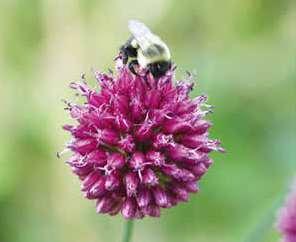

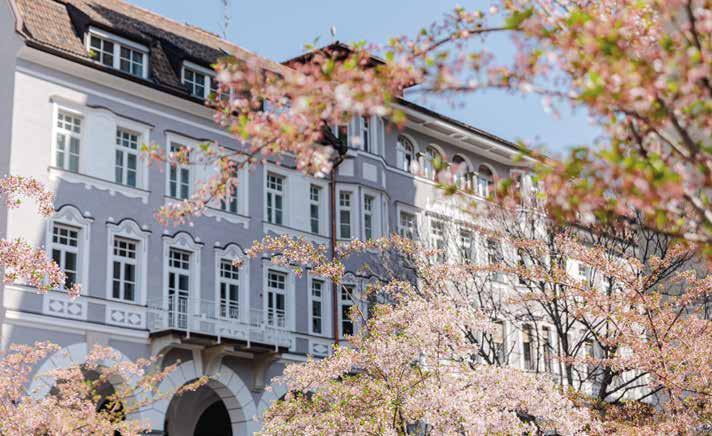
5.© 16
15.©
The public green spaces in Bolzano are an open invitation to get moving, to walk, run and jog! You can maximise your health, fitness, mood, even the climate through a little exercise. If you haven't tried it yet, perhaps now’s the time. The benefits come pretty quickly. Joint, heart and lung problems can be avoided, the metabolism stimulated, and the risk of cancer, dementia and diabetes reduced. Even walking has a mood-lifting effect. Office workers in particular benefit from persistent walking, relieving their eyes, backs and stress levels. Around the Bolzano basin, promenades gently wind up the verdant hills, while the extensive green spaces enrich the five city districts. Countless paths lead from the city centre and meander the hilly landscape and foothills. Iconic among these is Prati del Talvera. Known as Bolzano’s “green lung”, it’s literally made for a stroll. Or else there’s the historic Guncina and Osvaldo promenades, rich in Mediterranean flo -
BOLZANO'S PUBLIC GREEN SPACES
133 hectares of green space over 52 km2 of the city
3 historic promenades above the roofs of the city - Guncina, Osvaldo promenade and Passeggiata del Virgolo
1,300 m2 of flowerbeds; planted three times a year by the city gardening department
30 multi-purpose playgrounds and 10 workout areas in the 5 city districts
12,120 trees (340 different tree species) in public spaces
1 Bioenergetic park on the banks of the Isarco river www.archibio.it/en (bioenergetic landscapes Bolzano)
1 Garden of Religions after Ponte Loreto on the Isarco river www.gdr.bz.it
24 dog runs
38 gardeners and 5 technicians from the city administration to take care of the urban greenery


ra. South of the city, is the Passeggiata del Virgolo. Runners have eleven different routes for various disciplines along these Bolzano walking paths. Finally, there’s an almost 17km walking trail in six stages that encircles the entire city. All in all, that’s a total of 100 km of running or walking trails!
www.bolzano-bozen.it (ar/pb)
1.©
17 E STATE / SOMMER / REMMUS \
1.©
GIARDINAGGIO IN CITTÀ
RIVE FLUVIALI CON GIARDINI, PARCHI STORICI, PASSEGGIATE. A CIÒ SI AGGIUNGONO
UNA STORICA VOGLIA DI COLTIVARE VERDURE E FRUTTA NEL PROPRIO ORTICELLO, CON
GLI ORTI COMUNALI A POCHI PASSI, E L'IMPEGNO DELLE GIARDINERIE DI BOLZANO PER UNA CITTÀ DAVVERO VERDE.
Parliamo della cultura del giardinaggio in un‘area urbana, quella di Bolzano, della gioia di molti di godersi la flora attorno a casa e negli spazi pubblici, ma anche dell‘emergente preoccupazione per l'acqua come risorsa che scarseggia, delle sfide dei sempre più frequenti periodi di caldo nella regione alpina. bm ha parlato con la giardiniera Kathrin Reider, presidente del distretto bolzanino dell'Associazione Giardinieri dell'Alto Adige. La città conta circa 30 aziende, la maggior parte delle quali a conduzione familiare, alcune arrivate alla terza generazione. Tutti questi vivai hanno una cosa in comune: stanno affrontando la crisi climatica con una serie di considerazioni.
Che cosa si prospetta e come si stanno muovendo attualmente i giardinieri di Bolzano?
La maggior parte di noi sta aggiornando le proprie attrezzature tecniche per ottenere temperature e ventilazione ottimali, e per farlo in modo efficiente e risparmiando risorse. Questo significa utilizzare sistemi di circolazione chiusi, come i tavoli per vassoio di flusso e riflusso, o l'irrigazione a goccia. Significa anche prestare molta attenzione alla selezione delle varietà nella coltivazione.
A proposito di assortimento: cosa si può fare in questo campo, anche per chi si diletta in giardino?

Molto. Quando si acquistano le piante o si progettano i giardini, tutti dobbiamo privilegiare le piante che tollerano la siccità e quelle che sono amiche degli insetti, per aumentare la biodiversità. Io dico sempre di creare bordure con piante perenni che garantiscano un lungo periodo di fioritura, come l’erba gattaria, varie caryopteris e coreopsis, e tra gli arbusti, Buddleja davidii per farfalle e alberi da frutto selvatici.
Che consiglio ha per tutti coloro che amano il verde? Scatenatevi, anche sul vostro balcone. Anche con poco si ottiene molto, per l'occhio, ma ancor più per il clima urbano: l'evaporazione del verde abbassa no-
tevolmente la temperatura lungo le pareti di casa e lega i gas serra, che poi non vengono immessi nell'atmosfera.
L'iniziativa bolzanina "orti comunali" per gli over 60 in pensione e per le persone con disabilità si concentra sulla voglia di giardinaggio e sull'attesa del raccolto nel proprio orto. Il Comune di Bolzano mette a disposizione 12 appezzamenti di terreno in città per una quota annuale irrisoria, la maggior parte dei quali nella zona sud della città. E poi c'è il progetto interculturale "Orto Semirurale" dell'associazione Donne Nissà nel quartiere Don Bosco. Dal 2010, persone del quartiere e non solo si prendono cura del giardino, cuore di una comunità residenziale, in una dimensione multiculturale.
www.nissa.bz.it
Il verde pubblico di Bolzano è letteralmente un invito a mettersi in cammino, a muoversi, passeggiare e fare jogging: salute, forma fisica, umore e persino clima ne traggono il massimo beneficio. Intorno alla conca di Bolzano, le passeggiate si snodano sulle colline, mentre ampi spazi verdi arricchiscono i cinque quartieri della città. Particolarmente adatti a questa sana attività di svago sono il polmone verde di Bolzano, ovvero i prati del Talvera, le storiche passeggiate di Guntschna e di S. Osvaldo con la loro flora mediterranea, ma anche la passeggiata al Virgolo nella zona sud della città. Lungo questi sentieri di Bolzano sono stati sviluppati undici diversi percorsi per corridori di varie discipline. Inoltre, c'è un percorso a piedi di quasi 17 km di lunghezza in sei tappe che circonda l'intera città - per un totale di 100 km di percorsi per mettersi in cammino.
www.bolzano-bozen.it
IT/ 18
1.©
BOZENS GARTENKULTUR 4.0
UFERGRÜN,
PARKGRÜN, PROMENADENGRÜN. DANEBEN EINE BUNTE SCHREBERGARTENKULTUR, GEMEINSCHAFTSGÄRTEN UND DIE BEMÜHUNGEN DER BOZNER GÄRTNEREIBETRIEBE FÜR EINE GRÜNE STADT.

Die Rede ist von der Gartenkultur im Großraum Bozen, von der Freude an der Flora rund ums Haus und im öffentlichen Raum, von der Sorge um die Ressource Wasser, von den Herausforderungen der häufiger werdenden Hitzeperioden im Alpenraum. bm hat mit der Gärtnerin Kathrin Reider gesprochen, der Bozner Bezirksobfrau der Südtiroler Gärtnervereinigung. Rund 30 Gärtnereibetriebe hat die Stadt, die meisten familiär geführt, einige davon in dritter Generation. Eines haben sie alle gemeinsam: Sie begegnen der Klimakrise mit einer Reihe von Überlegungen.
Was steht an, und wie bewegen sich Bozens Gärtner:innen derzeit?
Die meisten von uns rüsten bei ihrer technischen Ausstattung auf, um optimale Temperaturen und Lüftung zu erreichen und dies effizient und ressourcenschonend. Das heißt, entweder auf geschlossene Kreislaufsysteme wie Ebbe-Flut-Tische zu setzen oder auf Tröpfchenbewässerung. Auch heißt es bei der Züchtung, viel genauer auf die Sortenauswahl hinzuschauen.
Apropos Pflanzensortiment: Was lässt sich in dem Bereich machen, auch von Hobbygärtner:innen?
Viel. Beim Pflanzeneinkauf oder bei der Gartenplanung müssen wir alle, trockenverträgliche Pflanzen bevorzugen und solche, die insektenfreundlich sind, um die
Biodiversität zu steigern. Ich sag immer, gern Rabatte anlegen mit Stauden, die eine lange Blütezeit garantieren wie die Katzenminze, diverse Bartblumen, Mädchenauge, bei den Sträuchern Schmetterlingsflieder und Wildobstgehölze.
Was raten Sie allen, die Lust auf Grün haben?
Toben Sie sich aus, auch am eigenen Balkon. Schon mit sehr wenig erreichen Sie viel, fürs Auge, aber noch viel mehr fürs Stadtklima: Durch die Verdunstung Ihres Grüns wird die Temperatur entlang der Hausmauern beträchtlich gesenkt, und es werden Treibhausgase gebunden, die dann nicht an die Atmosphäre abgegeben werden.
Auf die Freude an der Gartenarbeit und die Vorfreude auf den Ertrag im eigenen Gemüsebeet setzt die Bozner Initiative ”Schrebergärten“ für Menschen ab 60 im Rentenstand und für Menschen mit Beeinträchtigung. Die Gemeinde Bozen stellt dazu ganze 12 Areale im Stadtraum um einen sehr sozialen Jahreszins zur Verfügung, die meisten im Süden der Stadt. Und da wäre noch das interkulturelle Projekt ”Semirurale Garten“ der Vereinigung Donne Nissà im Stadtviertel Don Bosco. Seit 2010 kümmern sich Menschen der Nachbarschaft und darüber hinaus in einer multikulturellen Dimension um den Garten, das Herzstück einer Wohngemeinschaft.
www.nissa.bz.it
Das öffentliche Grün in Bozen ist förmlich eine Einladung zum Aufbruch, zum Gehen, Walken und Joggen: Gesundheit, Fitness, Stimmung, auch Klima – sie profitieren in höchstem Maß davon. Rund um den Bozner Talkessel schlängeln sich Promenaden die sanften Hügel empor, während weit angelegte Grünanlagen die fünf Stadtviertel bereichern. Besonders geeignet für diese gesunde Freizeitbetätigung ist Bozens grüne Lunge, nämlich das Talferbett bzw. die Talferwiesen, die historischen Spazierwege Guntschna- und Oswaldpromenade mit ihrer mediterranen Flora, aber auch die Virglpromenade im Süden der Stadt. Entlang dieser Bozner Spazierwege wurden elf verschiedene Strecken für Läufer:innen der verschiedenen Disziplinen entwickelt. Hinzu kommt ein Spazierweg von fast 17 km Länge in sechs Etappen, der die gesamte Stadt umrundet – insgesamt 100 km Lauf- oder Spazierparcours.
www.bolzano-bozen.it
DE/ 19 E STATE / SOMMER / REMMUS \
1.©
4 VALIDE RAGIONI PER UN’ESTATE BOLZANINA
Restare sintonizzati con i grandi festival estivi di Bolzano: come ogni estate che si rispetti, la città di Bolzano è pronta ad accogliere un ricco programma musicale all’insegna dell’intrattenimento e della sperimentazione.
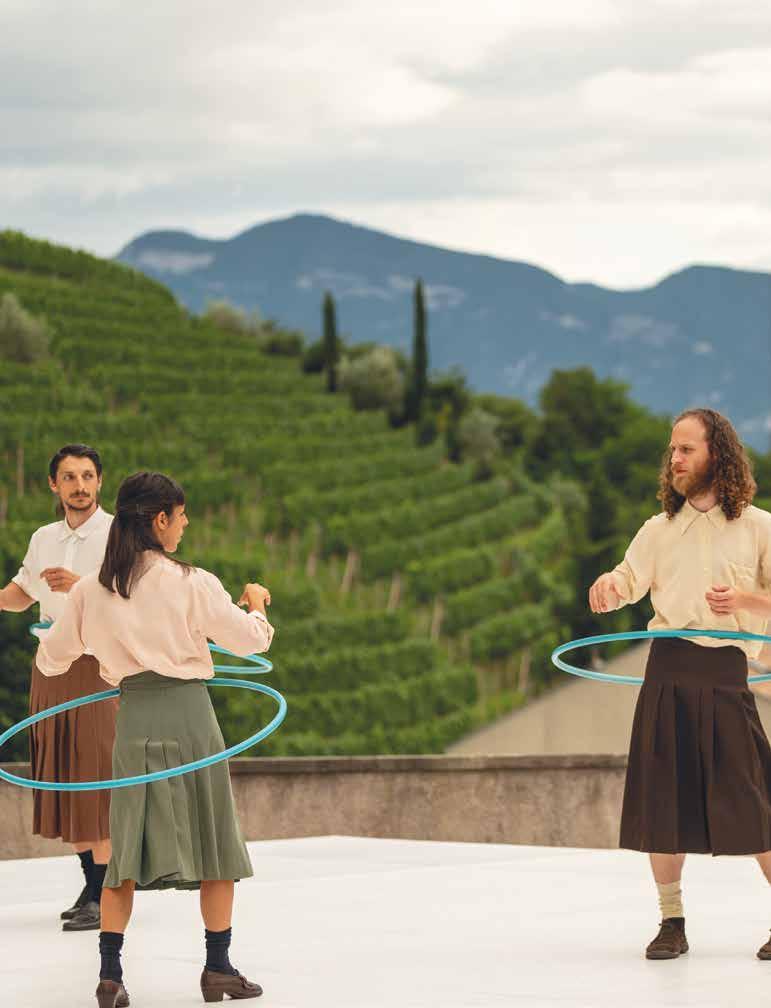
20 CULTURE
Vale perciò la pena restare aggiornati sulle numerose iniziative che durante tutto il periodo estivo si irradieranno dal centro urbano fino alla periferia, grazie a una tradizione festivaliera ormai pluridecennale. Non mancheranno i grandi nomi internazionali del jazz, della musica classica e della musica antica, con la world music e le sonorità provenienti dai luoghi più remoti del mondo. Ma anche con uno dei più grandi festival di danza d'Europa, che offre anche workshop per amatori di tutte le età. Senza dimenticare il prestigioso appuntamento del “Busoni International Piano Competition”, giunto all’attesissima finale. Ecco allora quattro valide ragioni per restare sintonizzati con Bolzano e dintorni durante i mesi del Music Festival. Ma procediamo per ordine.
Prima valida ragione:
IL FESTIVAL JAZZ DELL'ALTO ADIGE


DAL 30 GIUGNO AL 9 LUGLIO 2023
“Il jazz unisce il continente”: si sente ancora l’eco di questo incoraggiante slogan risuonare per le piazze, i teatri e locali in cui si è celebrato un anno fa il 40° anniversario del Südtirol Jazzfestival Alto Adige. Per conoscere i momenti salienti delle esplorazioni musicali in Europa degli ultimi dieci anni, non ci resta quindi che contare i giorni che ci separano all’inizio della manifestazione, seguendo il ricco programma, insieme al countdown che compare al centro della pagina web
www.suedtiroljazzfestival.com
21 E STATE / SOMMER / REMMUS \
IT/ 16.©
Das Palais Campofranco befindet sich im Herzen von Bozen direkt am Waltherplatz. Auf mehreren Etagen finden die Gäste und Kunden Restaurants, Cafés, Bars, Geschäfte sowie einen Coop Supermarkt und jede Menge Geschichte und Kultur.
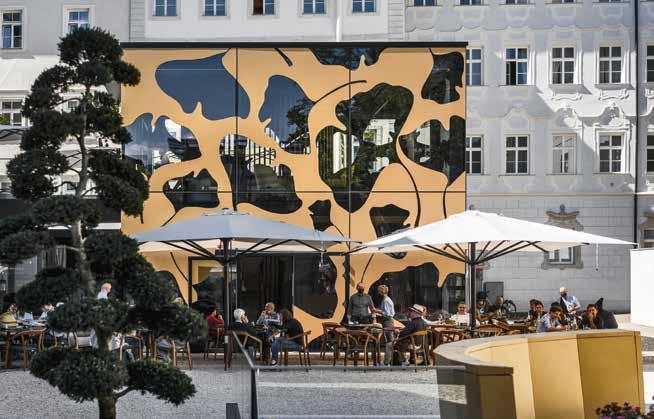
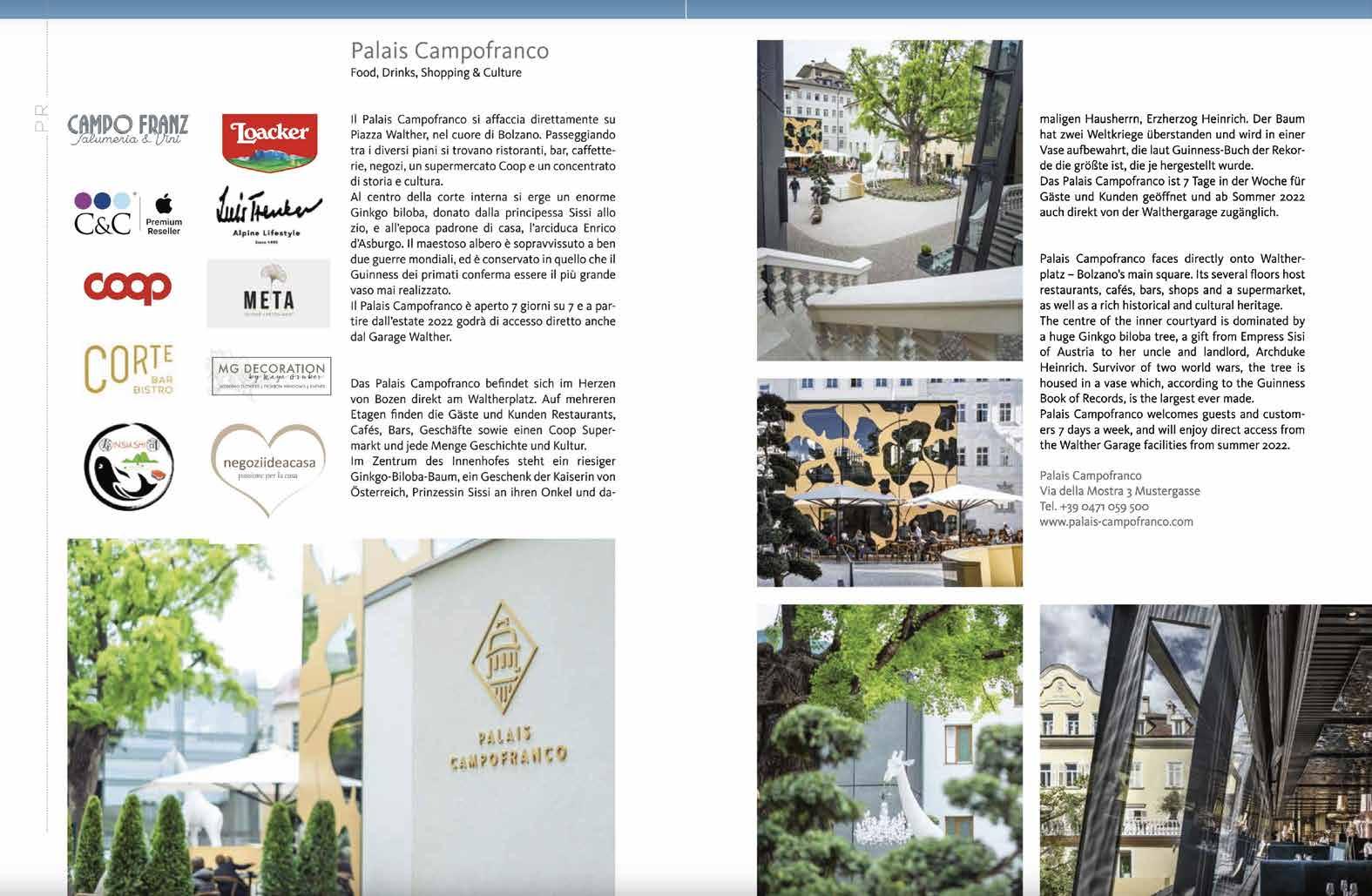
Im Zentrum des Innenhofes steht ein riesiger Ginkgo-BilobaBaum, ein Geschenk der Kaierin von Österreich, Prinzessin Sissi an ihren Onkel und damaligen Hausherrn, Erzherzog Heinrich. Der Baum hat zwei Weltkriege überstanden und wird in einer Vase aufbewahrt, die laut Guinness-Buch der Rekorde die größte ist, die je hergestellt wurde.
Das Palais Campofranco ist 7 Tage in der Woche für Gäste und Kunden geöffnet und auch direkt von der Walthergarage zugänglich.
Il Palais Campofranco si affaccia direttamente su Piazza Walther, nel cuore di Bolzano. Passeggiando tra i diversi piani si trovano ristoranti, bar, caffetterie, negozi, un supermercato Coop e un concentrato di storia e cultura. Al centro della corte interna si erge un enorme Ginkgo biloba, donato dalla principessa Sissi allo zio, e all’epoca padrone di casa, l’arciduca Enrico d’Asburgo. Il maestoso albero è sopravvissuto a ben due guerre mondiali, ed è conservato in quello che il Guinness dei primati conferma essere il più grande vaso mai realizzato.
Il Palais Campofranco è aperto 7 giorni su 7 e ha un accesso diretto anche dal Garage Walther.
®
restaurant
skybar by META cocktails by META
Palais Campofranco faces directly onto Waltherplatz –Bolzano’s main square. Its several floors host restaurants, cafés, bars, shops and a supermarket, as well as a rich historical and cultural heritage.

The centre of the inner courtyard is dominated by a huge Ginkgo biloba tree, a gift from Empress Sisi of Austria to her uncle and landlord, Archduke Heinrich. Survivor of two world wars, the tree is housed in a vase which, according to the Guinness Book of Records, is the largest ever made.
Palais Campofranco welcomes guests and customers 7 days a week, and has a direct access from the Walther Garage.
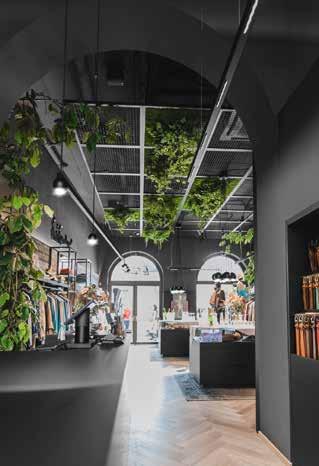

Seconda valida ragione:
IL FESTIVAL BOLZANO DANZA
DAL 14 AL 28 LUGLIO 2023
Balletto, teatrodanza, contemporaneo, vari stili e coreografie - spettacoli di compagnie ed ensemble provenienti da tutto il mondo, anche in prima mondiale per il 39° anniversario di questo grande evento. Una sfida per gli organizzatori del Festival eguagliare i numeri dell’edizione 2022, all’insegna del motto “No Limits”. Quasi 40 eventi in appena due settimane, coinvolgendo più di 200 artisti in un progetto che si è sviluppato tra palcoscenico, natura e sport. Una cosa però è certa: la fiducia accordata dal pubblico a questo Festival porterà a un nuovo entusiasmante viaggio nel multiverso della danza contemporanea. Perciò, come ricorda il sito
www.tanzbozen.it
Quarta valida ragione:
stay tuned!
Terza valida ragione:
KLANGFESTE/FESTE MUSICALI
DAL 22 GIUGNO AL 13 LUGLIO 2023
Come ogni anno, lo spettro è ampio: dalla musica classica al jazz, dalla musica popolare contemporanea alla world music, dai suoni della chitarra blues alle soavi melodie della cetra, dal canto a cappella ai suoni della tromba. Il filo conduttore è la sorprendente naturalezza della musica presentata. La suggestiva atmosfera di Castel Roncolo fa da cornice a ciascuna delle serate musicali.

www.klangfeste.org
IL BOLZANO FESTIVAL BOZEN

DAL 31 LUGLIO AL 3 SETTEMBRE
E LE FINALI DEL BUSONI

DAL 23 AGOSTO AL 3 SETTEMBRE 2023
Musica classica internazionale protagonista assoluta: La European Union Youth Orchestra e la Gustav Mahler Jugendorchester, le principali orchestre giovanili europee fondate da Claudio Abbado, sono simbolo di un pensiero condiviso fra i popoli, e da anni hanno trovato a Bolzano la loro residenza. Il BFB intreccia i concerti delle orchestre giovanili guidate dai fuoriclasse del podio, alla cultura musicale bolzanina irradiandosi per tutta la città con cinque rassegne, tra le quali il concorso e festival Busoni - quest’estate nella sua 64ª edizione.
Ma per avere qualche anticipazione sulla finalissima di quest’anno, sentiamo cos’hanno da dirci
24
16.©
www.bolzanofestivalbozen.eu
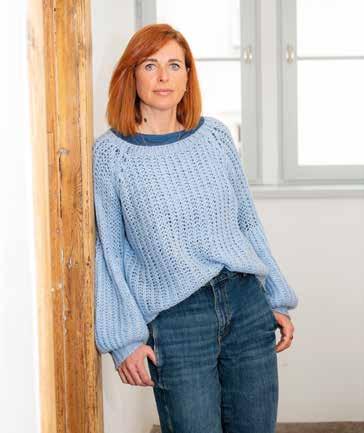
www.busoni-mahler.eu
Quali sono le novità di queste finali?
ST: “Anzitutto l’orario. Quest’anno per avere la diretta con l’Asia la finale si terrà di domenica mattina. Tenendo conto della durata delle esibizioni, dalle 2 alle 3 ore, questo consentirà a tutto il pubblico di godere con maggiore attenzione dello spettacolo. Un’altra importate novità riguarda le finali cameristiche, che si svolgeranno in tre serate anziché due, con l’esibizione di due finalisti per volta, ai quali sarà chiesto di prodursi anche in una performance solista in più rispetto alle edizioni precedenti. Insomma, più impegno per i candidati ma anche più musica per il pubblico”.
Un programma che s’infittisce, quindi, in risposta a un’audience più esigente?
ST: “Esigente ma soprattutto vogliosa di riprendere a vivere eventi come il Festival Busoni in totale libertà, senza più restrizioni. Grazie a una preselezione che ha coinvolto numerosi paesi stranieri, siamo certi di aver costruito un percorso festivaliero degno della sua tradizione, capace di convincere anche i più reticenti a partecipare alle sue finali”.
Cosa dobbiamo aspettarci da queste finali?
PPK: “Oltre al binomio esibizione solista ed esibizione cameristica, i finalisti devono preparare tre concerti per piano, tra cui poi verrà scelto quello per la finalissima. In un certo senso, come ha già detto la mia collega, il programma cresce, oserei dire raddoppia, in vista di un prime time con un pubblico vastissimo come quello asiatico”.
A tal proposito, come vede il futuro del festival?
PPK: “Guardare in avanti e prima degli altri, confermando la posizione di prestigio di questo festival, certo, ma impegnandosi anche a coinvolgere un pubblico sempre più vasto. L’Asia permette di immaginare asset totalmente nuovi che dovrebbero rilanciare il festival in termini organizzativi e di visibilità prima impensabili”.
Oltre a questa, qual è la sfida più grande da affrontare nelle prossime edizioni?
PPK: “Dare reali prospettive professionali ai vincitori. Un conto è il premio in soldi, un conto è creare i presupposti per una carriera che rispecchi l’impegno e il merito che vengono riconosciuti a questi pianisti. Un concorso internazionale come il Busoni, uno dei cinque più importanti al mondo, ha un’importante responsabilità che con il lavoro di tutto il team organizzativo dovremo trasformare in una grande opportunità per il futuro”. (rm)

25 E STATE / SOMMER / REMMUS \
Silvia Torresin e Peter Paul Kainrath, rispettivamente coordinatrice del progetto Concorso Busoni e direttore artistico dell’Accademia Gustav Mahler e del Concorso Busoni.
5.© 1.© 1.©
4 GUTE GRÜNDE FÜR EINEN BOZNER SOMMER
WIE VOR JEDEM SOMMER, DER ETWAS
AUF SICH HÄLT, IST DIE STADT BOZEN IN DEN STARTLÖCHERN BEIM AUSTRAGEN EINES REICHHALTIGEN MUSIKPROGRAMMS VOLLER EXPERIMENTIERFREUDE.
Guter Grund Nr. 1: DAS SÜDTIROL JAZZFESTIVAL 30. JUNI BIS 9. JULI 2023
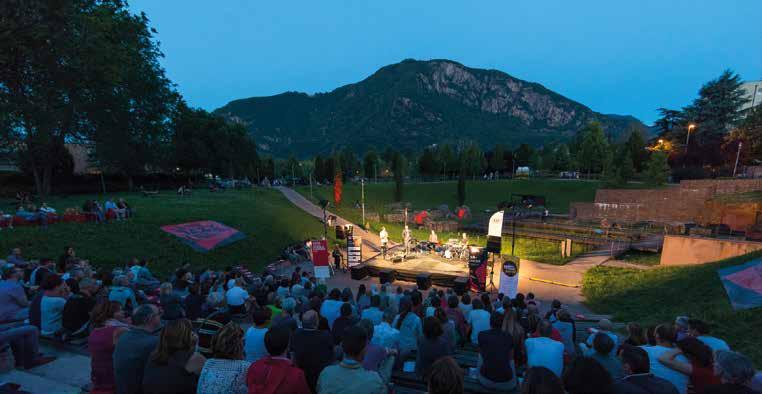
Jazz verbindet den Kontinenten: Das Echo dieses ermutigenden Slogans schallt noch immer über die Plätze, Theater und Veranstaltungsorte, an denen vor einem Jahr das 40-jährige Jubiläum des Südtirol Jazzfestivals gefeiert wurde. Um die Höhepunkte der musikalischen Entdeckungsreisen durch Europa der letzten zehn Jahren kennen zu lernen, muss man nur die Tage bis zum Beginn der Veranstaltung abwarten, indem man das bunte Programm über die sozialen Medien verfolgt oder sich vom Countdown auf der Webseite
www.suedtiroljazzfestival.com
inspirieren lässt.
Guter Grund Nr. 2: DAS FESTIVAL TANZ BOZEN
VOM 14. BIS 28. JULI 2023
Ballett, Tanztheater, Zeitgenössisches, verschiedene Stile und Choreografien - Darbietungen von Kompanien und Ensembles aus der ganzen Welt, darunter auch Weltpremieren zum 39-jährigen Jubiläum dieser großen Veranstaltung. Eine Herausforderung für die Organisatoren des Festivals, die Zahlen der Ausgabe 2022 zu toppen, die unter dem Motto "No Limits" stand. Fast 40 Tanz-Termine in nur zwei Wochen, mit mehr als 200 Künstler:innen in einem Projekt, das sich zwischen Bühne, Natur und Sport entwickelt.
www.tanzbozen.it
Guter Grund Nr. 3: KLANGFESTE
22. JUNI BIS 13. JULI 2023
Das Spektrum ist breit: von der Klassik bis zum Jazz, von der zeitgenössischen Volksmusik bis zur Weltmusik, von den Klängen der Bluesgitarre bis zu den sanften Melodien der Zither, vom A-cappella-Gesang bis zu den Klängen der Trompete. Die malerische Atmosphäre von Schloss Runkelstein bildet den Rahmen für jeden der musikalischen Erlebnisse.
www.klangfeste.org
26
DE
16.©
/
4. triftiger Grund:

DAS BOLZANO FESTIVAL BOZEN

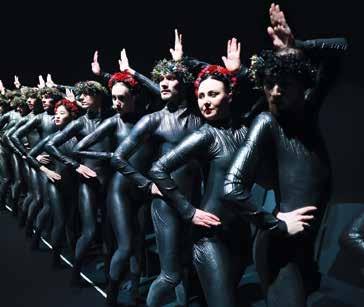
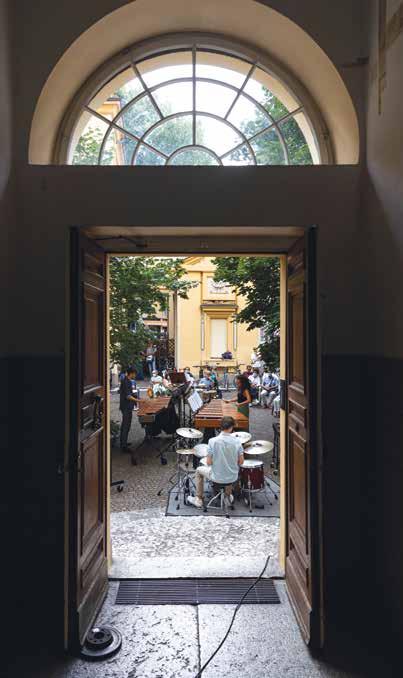
31. JULI BIS 3. SEPTEMBER 2023
MIT DEM 64. BUSONI-FINALE
Internationale klassische Musik im Fokus: Das European Union Youth Orchestra und das Gustav Mahler Jugendorchester - Europas führende Jugendorchester, gegründet von Claudio Abbado - sind Symbole des völkerverbindenden Denkens und haben in Bozen ihre Heimat gefunden. Der BFB verwebt die Konzerte dieser von Podiumsstars geleiteten Jugendorchester mit der Bozner Festivalkultur in ihrer ganzen Fülle, darunter auch dem Busoni-Wettbewerb.
www.bolzanofestivalbozen.eu
www.busoni-mahler.eu
27 E STATE / SOMMER / REMMUS \
17.©
3.© 17.©
FOUR GOOD REASONS FOR A BOLZANO SUMMER
AS SUMMER PUTS ON ITS FINEST, THE CITY OF BOLZANO IS READY TO MEET IT, WITH A RICH MUSICAL PROGRAMME BOTH ENTERTAINING AND INNOVATIVE.
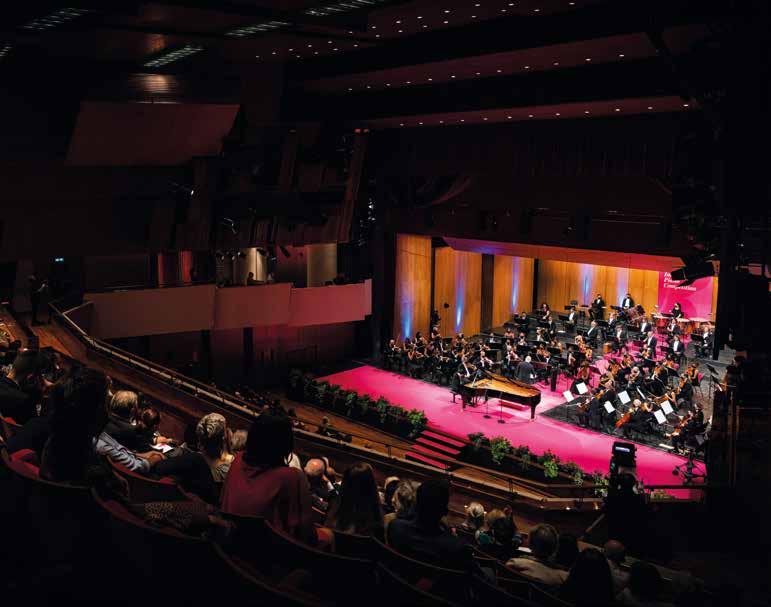
Reason no. 1:
SÜDTIROL JAZZ FESTIVAL
30TH JUNE TO 9TH JULY, 2023
'Jazz unites the continent': a joyous affirmation that can still be heard echoing through the squares, theatres and venues from last year’s Südtirol Jazz Festival’s - its 40th anniversary! For the rich programme of musical exploration and development in Europe over the last ten years, start counting the days. For the online countdown see:
www.suedtiroljazzfestival.com
Reason no. 2: BOLZANO DANCE FESTIVAL FROM 14TH TO 28TH JULY, 2023

Dance: ballet, theatre-dance and contemporary. To celebrate this 39th edition, this great event hosts various styles and choreographies, with performances by companies and ensembles from all over the world - including world premieres. A challenge for the festival organisers has been to match the numbers of the 2022 festival, under the slogan No Limits. Almost 40 events in just two weeks, involving more than 200 artists, in a project developed between stage, nature and sport
www.tanzbozen.it
28
EN/
Reason no. 3:
KLANGFESTE MUSIC FESTIVAL
22ND JUNE TO 13TH JULY, 2023
The spectrum is broad: from classical to jazz, from contemporary folk to world music, from blues guitar to the zither’s gentle melodies, from a cappella singing to the sounds of trumpets. The picturesque atmosphere of Castel Roncolo provides the setting for each musical evening.


www.klangfeste.org
Reason no. 4:
BOLZANO FESTIVAL BOZEN & BUSONI INTERNATIONAL PIANO COMPETITION 31ST JULY TO 3RD SEPTEMBER, 2023

International classical music at its best: the European Union Youth Orchestra and the Gustav Mahler Youth Orchestra - Europe's leading youth orchestras, founded by Claudio Abbado - are symbols of international unity and have found their home in Bolzano. The BFB interweaves the concerts of these youth orchestras led by podium stars with Bolzano’s festival culture in all its fullness, including the Busoni Competition.
www.bolzanofestivalbozen.eu
www.busoni-mahler.eu

5.© 16.© 16.© 29 E STATE / SOMMER / REMMUS \
MYTHEN ERKLÄREN UNS DIE WELT
Ein Besuch bei der erfolgreichen Bozner Autorin und Volkskundlerin Brunamaria Dal Lago Veneri.

30
PORTRAIT
”Die Schriftstellerin und Übersetzerin Brunamaria Dal Lago Veneri ist ein bisschen Magierin, ein bisschen Hexe, sie schaut hinter die Wörter, entlüftet deren Geheimnisse und tut dies an der Grenze zwischen Italienisch, Deutsch und Ladinisch“, schrieb kürzlich Paolo Ghezzi über sie. Die 88-jährige Grande Dame der Dolomiten-Sagenwelt schaut gern zurück, aber ebenso gern nach vorn, denkt laut nach über den Zauber und die Widersprüchlichkeiten unserer Gegenwart. Wir haben sie in ihrer Wohnung im Stadtteil Zwölfmalgreien besucht und uns erzählen lassen von ihrer Kunst, den Schätzen aus der Mythologie und den Entdeckungen, die sie in der Welt der Wörter gemacht hat.
BRUNAMARIA
DAL LAGO VENERI
Jahrgang 1935. Sie ist dreisprachig aufgewachsen, mit Vorfahren aus allen Teilen des ehemaligen Österreich-Ungarn und auch aus Ladinien. Studium an der Bocconi in Mailand. Danach lebt sie ihre Leidenschaft, die Volkskunde, aus, indem sie – als Schülerin des großen Schriftstellers Italo Calvino – mythologische und epische Stoffe aus ihren Heimaten verarbeitet. Die Bozner Autorin, Publizistin und Übersetzerin (von Hermann Hesse, Thomas Mann, H.C. Artmann und der Grimm-Brüder) hat an die 50 Bücher und unzählige Gastkommentare veröffentlicht. 2014 wurde sie mit dem Verdienstkreuz des Landes Tirol ausgezeichnet.

1.© 31 E STATE / SOMMER / REMMUS \
DE/
Ist die Liebe zu den Sprachen und zur Mehrsprachigkeit eine Familienangelegenheit?
Tatsächlich bin ich das Produkt einer sehr bunten Familie: Mein Urgroßvater väterlicherseits war Norweger, seine Frau Ungarin. Mein Großvater mütterlicherseits war ein Trentiner k.u.k. Offizier aus Primör, der nach Innsbruck abkommandiert wurde, so dass meine Mutter in einem deutschsprachigen Kontext aufwuchs. Nach dem Ersten Weltkrieg zog die Familie nach Bozen. Mein Vater war aus dem Trentino, genauer aus dem Fleimstal, nach Bozen gekommen. Mein Mann war ein deutschsprachiger Südtiroler aus Branzoll, ein kunstaffiner Architekt, und wir sprachen daheim immer sowohl Deutsch als auch Italienisch, je nach Situation und Laune. Unsere vier Kinder sind in diesem sprachlichen Umfeld aufgewachsen. Ich habe außerdem eine Zeitlang Italienisch als Zweitsprache an deutschsprachigen Oberschulen unterrichtet. Und
so waren Sprachen für mich von klein auf ein faszinierendes Instrument, ein Vehikel, um Geschichten vermittelt zu bekommen und später zu erzählen. Die feinen Unterschiede, das Unübersetzbare, die Klänge der verschiedenen Sprachen, mit denen ich konfrontiert war, ihre Musikalität, haben mich immer magisch angezogen.
Du bist zwar in Bozen geboren, doch einen Teil deiner Pflichtschuljahre hast du in Rom und Cavalese verbracht, weil dein Vater als Handelskammer-Direktor oft versetzt wurde.
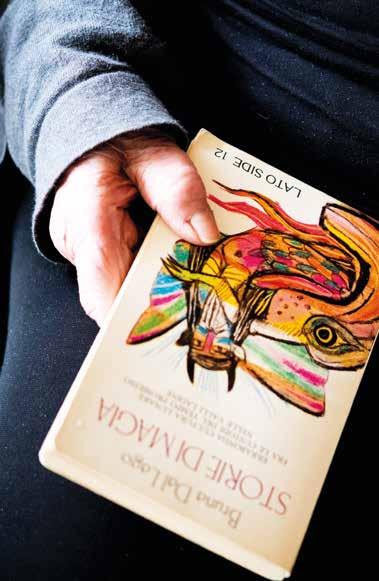
Gegen Ende des Zweiten Weltkriegs kehrte meine Familie nach Bozen zurück, und ich besuchte das Wissenschaftliche Gymnasium in italienischer Sprache, dann studierte ich Fremdsprachen in Mailand, schloss mein Studium in England ab und kehrte wieder nach Bozen zurück. Ich habe die Mehrsprachigkeit immer gepflegt und daraus Kraft geschöpft, im
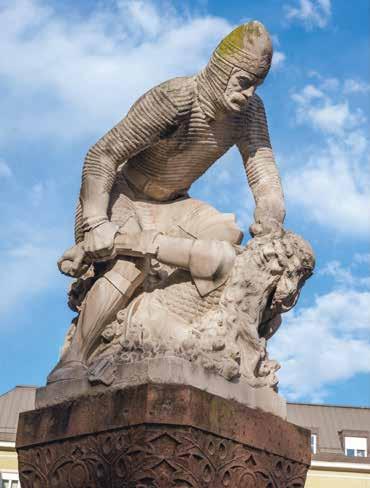
32
1.© 1.©
Szene aus der Sage "König Laurins Rosengarten", verewigt in einer Skulptur von 1907, heute am Silvius-MagnagoPlatz vor Palais Widmann
Alltag genauso wie im Beruf, und ich habe Sprachen unter die Lupe genommen und im Ohr wirken lassen. Wieso ich das sage? Weil der Klangkörper der ladinischen Sprachen meiner Meinung nach der klangliche Ausdruck einer Landschaft ist.
Was hat das Aufwachsen in Südtirol, in dieser Dolomiten-Gegend, für dich bedeutet?
Es hat bei mir die Türe zur Volkskunde, zu den Traditionen und zur Oral History eröffnet, vor allem die Zeit bei meiner Oma Tresl in Cavalese. Ich hatte immer den Eindruck, dass die Natur und vor allem die Bergwelt mir viel zu erzählen haben. Geschichten verarbeiten die Wirklichkeit durch Fantastisches, sie sind eine Möglichkeit, die Wirklichkeit zu überwinden. Der Kern der Literatur ist genau das: eine Realitätsbewältigung. Meine erste Buchveröffentlichung 1979 war eine Geschichtensammlung aus der Dolomiten-Tradition. Es folgten Erzählungen und Essays für die italienischen Verlage Newton Compton, Mondadori, Adelphi und später für die lokalen Häuser Folio, Raetia und
HÖCHSTER APFELGENUSS
Unser Genussladen am Ritten
Inmitten von Apfelgärten in der herrlichen Bergluft am Ritten, wachsen unsere Äpfel und entsteht unser Bergapfelsaft. Eine feine Erfrischung für Zwischendurch und ein zeitgemäßer Speisenbegleiter. Apfelsaft, wie Sie ihn so noch nicht genossen haben. Überzeugen Sie sich selbst und kommen Sie in unseren Genussladen in Unterinn am Ritten, nicht weit von Bozen. Ein lohnendes Ausflugsziel für Reisende, die auf der Suche nach einem Geschmackserlebnis sind. Wir freuen uns auf Ihren Besuch!
Geöffnet von Montag bis Freitag von 8 bis 17 Uhr Führung mit Verkostung auf Anfrage!
PURO PIACERE DI MELA
La nostra Bottega dei Sapori sul Renon
Nella nostra tenuta immersa nei meleti esposti all’aria di montagna dell’altopiano del Renon, crescono le nostre mele e nasce il succo di mela di montagna. I nostri succhi rappresentano un piacevole momento di benessere e un sorprendente abbinamento in cucina e a tavola. Scopritelo e passate nella nostra bottega dei sapori ad Auna di Sotto sul Renon, poco distante da Bolzano. Una scappata proficua per viaggiatori in cerca di gustose novità! Vi aspettiamo!

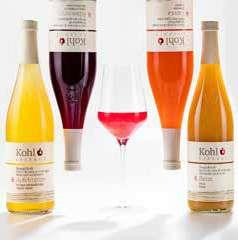
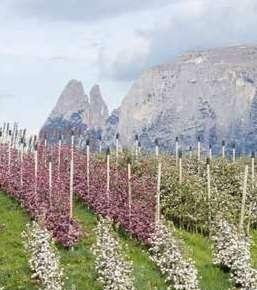
Aperto da lunedì a venerdì dalle ore 8 alle 17 Visite guidate con degustazione su richiesta!
PURE APPLE DELIGHT
Our deli farm shop on the Ritten
On our farm, surrounded by apple orchards in the wonderful mountain air on the Ritten, is where the apples grow and our mountain apple juice is produced. Refreshing treats for in-between and the modern approach to food pairing. Apple juices such as you have never tasted before. Convince yourself and come to our deli farm shop on the Ritten, not far from Bolzano. A worthwhile destination for travelers in search of a new taste experience. We are looking forward to your visit!
Open Monday to Friday from 8 a.m. to 5 p.m. Guided tours with tasting on request!
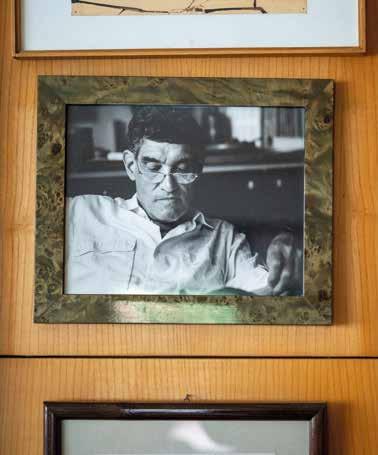
Kohl Bergapfelsäfte | Succhi di mela di montagna 39054 Unterinn am Ritten, Hauptstraße 35 39054 Auna di Sotto sul Renon, Via Pricipale 35 tel. +39 0471 359 442 | kohl@kohl.bz.it | www.kohl.bz.it
1.©
alphabeta. Zum Übersetzen literarischer Texte bin ich durch Hermann Hesse gekommen, eine wichtige Fügung in meinem Leben. Die Begegnung im Tessin ergab sich durch Hesses Enkel, der im Architekturstudio meines Mannes sein Praktikum absolvierte. Später übersetzte ich Gedichte Hesses ins Italienische. Die nächste wichtige Begegnung war die Freundschaft mit Italo Calvino, der mich ermutigte, eigene Geschichten zu veröffentlichen.
Warum faszinieren Mythen und Legenden? Was verkörpern die Sagen aus dem Dolomitenreich der Fanes und des Laurin?
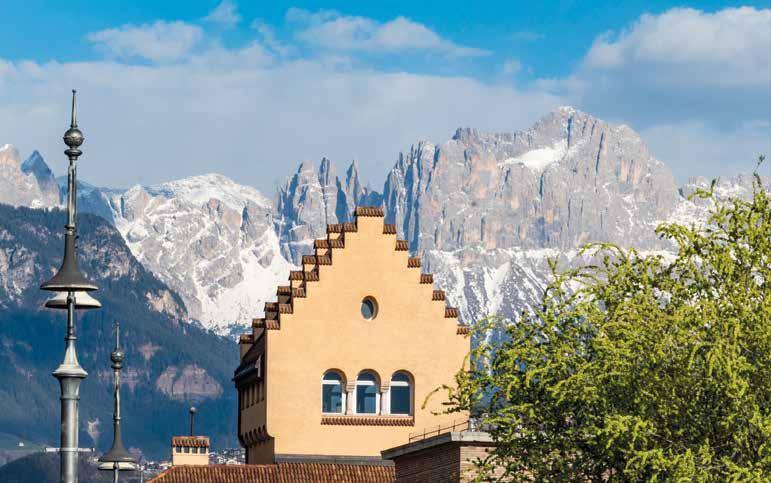
Sagen und Legenden sind eine sehr alte Form der mündlichen Erzählung und gehören zum kulturellen Erbe aller Völker, sie vermischen das Reale mit dem Wunderbaren. Ich war und bin oft am Fuß der Rosengarten-Gruppe in Vigo di Fassa, und dort ist die Sage um König Laurin allgegenwärtig, in der Natur- und Kulturlandschaft. Die mythischen Fanes-Geschichten verkörpern den Übergang von einer matriarchalen Gesellschaft in eine patriarchale; sie enthalten spannende Figuren mit vielen Facetten, die uns auch das Heute erklären. Und diese Personifizierungen offen -
baren einiges von dieser Zwischenwelt, vom Eingeklemmt-Sein zwischen der Welt von Pflanzen, Tieren und Mineralien und jener bekannteren Dimension der Menschen. Die Geschichten sind durchwoben von Wasserwesen, Feuer- und Steinwesen, von zwiespältigen Kreaturen wie den Nörggelen – Zwerge, die das Haus beschützen -, die nicht nur im alpinen Raum vorkommen, sondern von den archaischen Wurzeln aller Völker erzählen, von den Ursprüngen des Lebens.
Warum sich mit ihnen beschäftigen?
Weil Geschichten zwei Funktionen haben, sie helfen uns unsere tiefsten Ängste zu überwinden: den Hunger, Krankheit und Tod und den Krieg. Und sie stillen unser Bedürfnis nach Spiel - als Spiegelbild unserer Seele.
(ar)
LEKTÜRETIPP
Brunamarias letztes Buch auf Deutsch: Basilisken, Einhörner und Sirenen.
Panoptikum der fantastischen Wesen (folio Verlag, 2019)
34
Blick auf den Turm des Bozner Stadtmuseums und dahinter das Rosengartenmassiv
LA RACCONTASTORIE
VISITA ALLA PROLIFICA SCRITTRICE E ANTROPOLOGA BOLZANINA BRUNAMARIA DAL LAGO VENERI.
“Scrittrice e traduttrice, Brunamaria Dal Lago Veneri è un po’ maga, un po’ strega, esploratrice delle parole e dei loro misteri sul confine tra italiano, tedesco e ladino“ – ha scritto di lei ultimamente Paolo Ghezzi. L’esperta di leggende dolomitiche, 88 anni, ama riflettere ad alta voce sulla magia e sulle contraddizioni del nostro presente.
BRUNAMARIA DAL LAGO VENERI
nata nel 1935 e cresciuta (anche) a Bolzano. È trilingue, con antenati provenienti da tutte le parti dell'ex Impero austro-ungarico e anche dalla Ladinia. Ha studiato alla Bocconi di Milano, dopo di che ha vissuto la sua passione, la scrittura, adattando il materiale mitologico ed epico delle sue terre d'origine - come allieva del grande scrittore Italo Calvino. Autrice, pubblicista e traduttrice bolzanina (anche di Hermann Hesse, Thomas Mann e dei fratelli Grimm) ha pubblicato circa 50 libri. Nel 2014 le è stata conferita la Croce al Merito del Land Tirol.
L'amore per le lingue e il multilinguismo è una questione di famiglia?
In effetti, sono il prodotto di una famiglia vagabonda: il mio bisnonno paterno era norvegese, sua moglie ungherese. Mio padre è cresciuto in Trentino, più precisamente nella Val di Fiemme. Mio nonno materno era un ufficiale trentino dell’Impero austro-ungarico, distaccato a Innsbruck, quindi mia madre è cresciuta in un contesto di lingua tedesca. Dopo la prima guerra mondiale, la famiglia si trasferì a Bolzano. Mio marito era un altoatesino di lingua tedesca, architetto con un'inclinazione per l'arte, e in casa abbiamo sempre parlato sia tedesco che italiano, a seconda della situazione e dell'umore. I nostri quattro figli sono cresciuti così. Fin da piccola, le lingue sono state per me uno strumento affascinante, un veicolo per trasmettere e poi raccontare storie. Le sottili differenze, l‘intraducibile, i suoni delle diverse lingue con cui mi sono confrontata, la loro musicalità, mi hanno sempre attratto magicamente.
CONSIGLI DI LETTURA
Il 1° libro di Brunamaria Dal Lago Veneri: Storie di magia. Errabonda cultura lunare fra le custodi del tempo promesso nelle valli ladine (Lato Side, 1979)
Uno dei libri più cari alla scrittrice: Dodici incontri. Una vita (alphabeta, 2012)
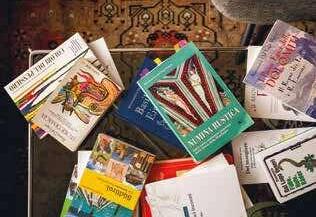
L’ultima uscita (assieme a Rosetta Infelise Fronza): Oltre le soglie (Reverdito Editore, 2022)
Cosa rappresentano le leggende del regno dolomitico di Fanes e di re Laurino?
Le leggende sono una forma di narrazione orale molto antica che fa parte del patrimonio culturale di tutti i popoli, mescolano il reale al meraviglioso. Sono stata spesso ai piedi del Catinaccio, e lì la leggenda di Re Laurino è onnipresente. Le storie mitiche del regno di Fanes incarnano il passaggio da una società matriarcale a una di stampo patriarcale; contengono figure con molte sfaccettature che hanno un che di universale. E tali personificazioni rivelano qualcosa di questa realtà intermedia molto complessa, dell'essere in bilico tra il mondo delle piante, degli animali e dei minerali e la dimensione più familiare degli esseri umani.
Perché occuparsi di loro?
Perché le storie hanno una duplice funzione: ci aiutano a superare le nostre paure più profonde: la fame, la malattia, la morte e la guerra. E soddisfano il nostro bisogno di giocare e fantasticare.
35 E STATE / SOMMER / REMMUS \
IT/
1.© 1.©
IN CONVERSATION
WITH THE PROLIFIC BOLZANO WRITER AND ANTHROPOLOGIST, BRUNAMARIA DAL LAGO VENERI.
'Writer and translator Brunamaria Dal Lago Veneri is a bit of a sorceress, a bit of a witch, an explorer of words and their mysteries, on the border between Italian, German and Ladin' – Paolo Ghezzi wrote of her recently. The 88-year-old expert on Dolomite legends loves to reflect aloud, on magic and the contradictions of our present.

BRUNAMARIA DAL LAGO VENERI
Born in 1935, growing up partly in Bolzano. She is trilingual, with ancestors from all parts of the former Austro-Hungarian Empire, including Ladinia. She studied at the Bocconi University, Milan, after which she lived her passion: writing, adapting mythological and epic material from her homeland - as a student of the great writer, Italo Calvino. As an author, publicist and translator (including Hermann Hesse, Thomas Mann and the Brothers Grimm), she has published around 50 books. In 2014, she was awarded the Cross of Merit of the Land Tirol.
Does the love of languages and multilingualism run in the family?
I am, in effect, the product of a wandering family. My paternal great-grandfather was Norwegian and his wife Hungarian. My father grew up in Trentino, Val di Fiemme to be precise. My maternal grandfather was a Trentino officer in the Austro-Hungarian Empire who was posted to Innsbruck, so my mother grew up in a German-speaking environment. After the First World War, the family moved to Bolzano. My husband was a German-speaking South Tyrolean, an architect with a flair for art, and at home we always spoke both German and Italian, depending on the situation or mood: our four children grew up that way too. Languages have fascinated me since I was very young, as tools or vehicles for transmitting and then telling stories. The
subtle differences, the untranslatable, or the sounds of the different languages I’ve been confronted with, their musicality – these things have always magically attracted me.
What do the legends of the Dolomite kingdom of Fanes and King Laurin represent?
Legends are an ancient form of oral narration and part of the cultural heritage of all peoples, mixing the real with the fantastic. I’ve often been to the foot of the Catinaccio, where the legend of King Laurin is omnipresent. The mythical stories of the Kingdom of Fanes embody the transition from a matriarchal to a patriarchal society; they contain multi-facetted characters that have something universal about them. These personifications reveal something of this very complex intermediate world, of being positioned between the kingdoms of plants, animals and minerals and the more familiar realm of people.
Why are they so important to you?
Because of the dual function stories have in helping us overcome our deepest fears: hunger, illness, death and war - and they also satisfy our need for play and fantasy.
36
STORYTELLER EN/
THE
1.©
VINO E ARTE WEIN UND KUNST WINE AND ARTS
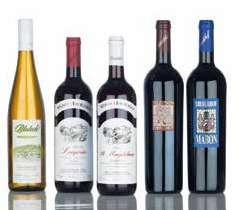

La storica tenuta Eberlehof a Santa Maddalena sopra Bolzano merita un visita. Oltre a vini di qualità pluripremiati e alla possibilità di trascorrere le proprie vacanze nella tenuta, l’Eberlehof offre anche la possibilità di partecipare, su prenotazione, alle visite guidate ai vigneti e alle cantine, oltre a interessanti degustazioni Dall’uva della tenuta Eberlehof vengono prodotti,secondo l’antica tradizione di famiglia, il Santa Maddalena classico, il Lagrein Riserva, il Merlot Riserva, il Cuvée Mabon, il vino rosato e il Blaterle bianco.
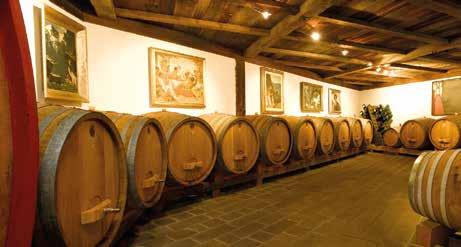
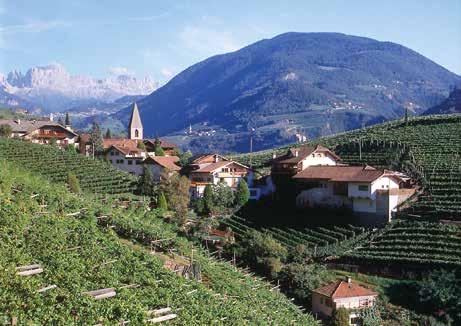

Ein Besuch am historischen Weingut Eberlehof in St. Magdalena über Bozen lohnt sich allemal. Neben prämierten Qualitätsweinen und Urlaub auf dem Weingut, bietet der Eberlehof, nach Voranmeldung, auch Weinbergsführungen, Kellerbesichtigungen und Weinverkostungen an. Nach alter Familientradition werden aus eigenen Trauben der Klassische St. Magdalener, Lagrein Riserva, Merlot Riserva, Cuvée Mabon, Roséwein und der Weißwein Blaterle erzeugt.
The historic Eberlehof Winery, located on the hill of Santa Maddalena, in Bolzano, is worth a visit. Not only does the winery offer an excellent range of award-winning quality wines and holiday accommodation, but it also gives the opportunity of participating in guided tours of the vineyards and wine cellars followed by interesting wine tastings (upon reservation). According to the ancient family tradition, the grapes of the winery Eberlehof are used to produce the classic Santa Maddalena, the Lagrein Riserva, the Merlot Riserva, the Cuvée Mabon, the rosé wine and the white wine Blaterle.
37 E STATE / SOMMER / REMMUS \
Weingut Eberlehof, Fam. Zisser 39100 Bolzano/Bozen - Santa Maddalena 26 St. Magdalena - Tel. 0471 981918 info@weingut-eberlehof.it - www.weingut-eberlehof.it
FLUSSLANDSCHAFTEN
Drei Flüsse fließen durch Bozen und begünstigen die Stadtlage: Talfer, Eisack und Etsch. Sie ergeben natürliche Oasen für Mensch, Tier und Pflanzenwelt, kühlen ab, versorgen mit Nutzwasser und wurden früher sogar als Transportwege genutzt. Von den wertvollen Uferlandschaften entlang dieser Flüsse.
PAESAGGI FLUVIALI
Tre fiumi attraversano Bolzano e favoriscono la posizione della città: Talvera, Isarco e Adige. Essi costituiscono delle oasi naturali per l'uomo, gli animali e la flora, rinfrescano, forniscono acqua utilizzabile e in passato furono utilizzati come vie di trasporto. Cosa ci raccontano i preziosi paesaggi ripariali lungo questi fiumi?
RIVERSCAPES
Three rivers flow through Bolzano and favour the city's position: the Talvera, Isarco and Adige. As natural oases for people, plants and animals they refresh, provide usable water and in the past, were even used for transport. These precious riverside landscapes tell us so much.

38 PHOTOSTORY

39 E STATE / SOMMER / REMMUS \ 1.©
Der Eisack, der zweitlängste Fluss Südtirols, mündet südlich der Altstadt in die Etsch. Im Mittelalter sorgte der vom Brenner kommende Fluss immer wieder für erhebliche Überschwemmungen des Stadtgebietes. Heute schützen Uferschutzmauern und ein breites Flussbett zwischen Loreto- und Reschenbrücke vor Hochwasser. In diesem Bereich hat die Stadt die Uferböschungen zu einem großen Freizeitpark gestaltet, mit Promenaden, einem Bioenergetischen Garten und Radwegen.
L'Isarco, il secondo fiume più lungo dell'Alto Adige, sfocia nell'Adige a sud del centro storico. Nel Medioevo, il fiume proveniente dal Brennero causò più volte notevoli inondazioni. Oggi i muri di protezione degli argini e l'ampio letto del fiume tra i ponti di Loreto e Resia proteggono dalle inondazioni. In quest'area, la città ha trasformato gli argini in un grande parco ricreativo, con passeggiate, un giardino bioenergetico e piste ciclabili.
South Tyrol’s second longest river, the Isarco, flows into the Adige south of the city centre. In the Middle Ages, the river caused considerable flooding on many occasions as it meandered its way south from the Brenner Pass. Today, the wide embankment walls and river bed between the Loreto and Resia bridges protect against flooding. On this stretch, the city has transformed the embankments into a large recreational park, with promenades, a bioenergy garden and cycle paths.

40
1.©
Der Talferbereich ab Schloss Runkelstein bis zur Mündung in den Eisack ist Bozens historische grüne Lunge. In seinem Uferbereich kommen Bozner:innen zusammen, zum Spazieren, Sonnenbaden, Quatschen, Spielen, Sporteln, auch Picknicken und Hunde ausführen.
L'area del Talvera, da Castel Roncolo alla foce del fiume Isarco, è lo storico polmone verde di Bolzano. Qui i bolzanini si ritrovano per passeggiare, prendere il sole, chiacchierare, giocare, fare ginnastica o jogging, godersi un picnic e portare a spasso il cane.
The Talvera area, from Roncolo Castle to the mouth of the River Isarco, is Bolzano's historic green lung and a meeting place for locals. People-watching, you’ll see them strolling, jogging, rambling, walking the dog, sunbathing, sharing a picnic – or even just chatting on a bench with friends.
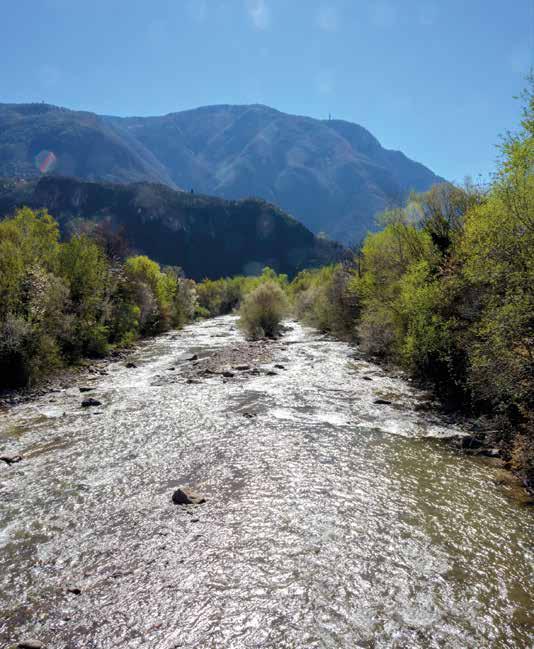
41 E STATE / SOMMER / REMMUS \
1.©
Der längste Fluss Südtirols, die Etsch, entspringt am Reschen und fließt durch Vinschgau und Etschtal, bevor er südlich von Bozen in der Frizzi Au mit dem Eisack zusammenfließt. Ab diesem Abschnitt galt die Etsch traditionell als schiffbar und zwar bis zur Adria-Mündung.
L'Adige, il fiume più lungo dell'Alto Adige, nasce a Resia e scorre attraverso la Val Venosta e la Val d'Adige prima di unirsi all'Isarco a sud di Bolzano. Da questo tratto in poi è tradizionalmente considerato navigabile fino alla foce nel Mare Adriatico.
The longest river in South Tyrol is the Adige. It begins in Reschen, flows through the Vinschgau and Adige valleys, before joining the Isarco, south of Bolzano. Historically, from here onwards, it’s considered navigable all the way to the Adriatic Sea.
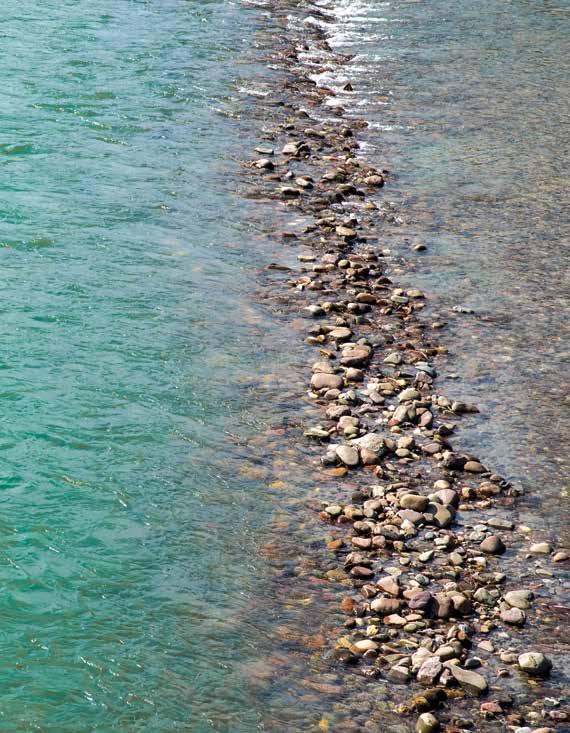
42
1.©
Flüsse sind Lebensadern. Menschen siedelten überall auf der Welt bevorzugt an Flüssen und Bächen. Diese spendeten Trink- und Nutzwasser für den Alltag, gaben Schutz und waren oft der einzige Transportweg. Der fruchtbare Boden entlang der Wasseradern ermöglichte in der Bozner Gegend schon früh den Anbau von Wein und Obst.
I fiumi sono fonti di vita. Le popolazioni di tutto il mondo hanno sempre preferito stabilirsi lungo fiumi e torrenti. Forniscono acqua potabile, offrono protezione e spesso sono l'unico mezzo di trasporto. Il terreno fertile lungo le vene d'acqua ha permesso già in tempi remoti di produrre vino e coltivare frutta nella zona di Bolzano.
Rivers are a source of life. People around the world have always settled along rivers and streams. They provide drinking water, offer protection and are often the only means of transport. The fertile soil flanking the waterways in the Bolzano area has enabled wine production and fruit growing since ancient times.
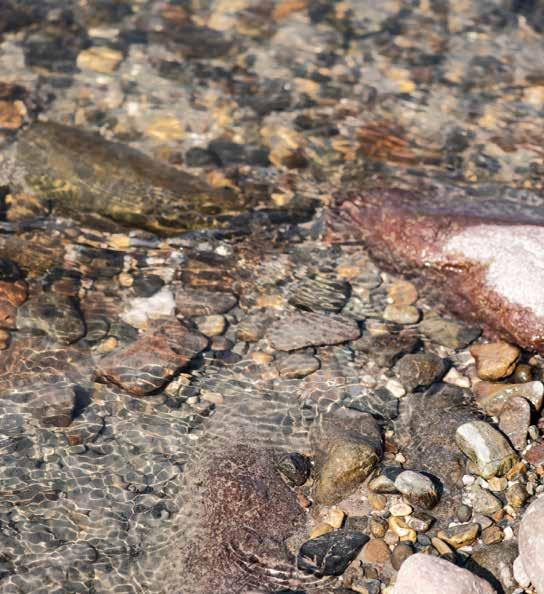
43 E STATE / SOMMER / REMMUS \
1.©
Wasser bietet die Voraussetzung für die wirtschaftliche und kulturelle Entwicklung einer gesamten Region. Die Schönheit von Flusslandschaften hat, neben ihrem Nutzen und Naturerlebnis, Menschen schon immer bewegt.

L'acqua è il presupposto per lo sviluppo economico e culturale di un'intera regione. La bellezza dei paesaggi fluviali, oltre alla loro utilità e all'esperienza naturale che permettono, ha sempre emozionato le persone.
Water is the prerequisite for the economic and cultural development of an entire region. The beauty of riverscapes goes far beyond their utility, allowing a closeness to nature that always touches us.
44
1.©
Bergsommer im Sarntal
Estate in montagna in Val Sarentino
Mountain Summer in the Sarntal Valley
Sarntal ...
der Sommertipp nur 16 km von Bozen entfernt, und doch eine völlig andere Welt…
Frische Bergluft und weite Panoramablicke im Tal der 6 Millionen Bäume, 500 km Wanderwege mit über 40 bestens bewirtschafteten Alm- und Schutzhütten laden ein, den Bergsommer zu genießen.
Spaß und Abenteuer für die ganze Familie auf dem Urlesteig und Sagenweg. Mit dem Wanderbus Sarntal und der Kabinenbahn Reinswald bequem die Sarner Bergwelt genießen.
Val Sarentino...
la punta estiva a soli 16 km da Bolzano, eppure un mondo completamente diverso...
Aria fresca di montagna e ampie viste panoramiche nella valle dei 6 milioni di alberi, 500 km di sentieri escursionistici con oltre 40 malghe e rifugi ben gestiti invitano a godersi l’estate in montagna.
Divertimento e avventura per tutta la famiglia sui sentieri naturalistici-didattici Urlesteig e Sagenweg.
Godetevi le montagne in Val Sarentino in tutta comodità col Trekking Bus e la cabinovia di Reinswald.
Sarntal Valley...
the summer tip just 16 km from Bolzano, yet a completely different world...
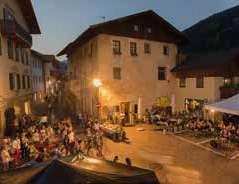
Fresh mountain air and wide panoramic views in the valley of 6 million trees, 500 km of hiking trails with more than 40 well-maintained alpine huts and refuges invite you to enjoy summer in the mountains.
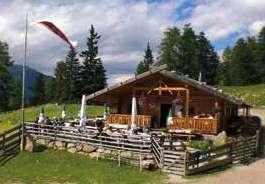
Fun and adventure for the whole family on the Urlesteig and Sagenweg nature trails.

Enjoy the mountains in Val Sarentino in comfort with the Trekking Bus and Reinswald cable car.

45 E STATE / SOMMER / REMMUS \
Grafik: crossbone-designs.com Fotos: Tourismusverein Sarntal, Carmen Moser, Alberto Campanile, Reinswalder Bergbahnen, Almschank Waldrast INFO Tourismusverein Sarntal | Ass. Turistica Sarentino Tel. 0471 623091 | info@sarntal.com www.sarntal.com
TREKKING ED ESCURSIONI A GOGO
Con la sua rete di sentieri che coprono 500 km, la chiamano anche la valle delle escursioni. La Val Sarentino stupisce per il suo potenziale sportivo (e non solo) all’aperto.

46 OUTDOOR
Il gruppo montuoso delle Alpi Sarentine nel cuore dell’Alto Adige avvolge la valle a forma di ferro di cavallo. E, infatti, può essere esplorato in sette giorni sull’Alta Via Hufeisentour (vedi pag. 49). Mentre a sud il paesaggio tende ad assomigliare a un altopiano pianeggiante – quello del Renon, la parte settentrionale è formata da alte vette di ca. 2.500 m: a ovest c’è il Corno Bianco di Pennes, a est l’Alpe di Villandro e nella parte meridionale il Corno del Renon. Questa posizione fa della Val Sarentino un punto di ritrovo e di partenza per tutti i tipi di escursionismo, sia ludico-familiare che impegnativo, con grandi dislivelli, anche per grandi camminatori e per chi ama scalare e sa muoversi e destreggiarsi bene in alta quota. E poi ci sono sia l’impianto di risalita di Reinswald con un’agevole cabinovia che porta a quota 2.130 m alla malga Pichlberg, sia un bus navetta (trekking bus) attrezzato per gli escursionisti e in circolazione durante tutta la bella stagione. Questo simpatico mezzo accompagna i piccoli e grandi camminatori fino ai più bei punti di partenza per gite in montagna.
Chi in montagna ci vive, o meglio, ha fatto della montagna un mestiere, come la guida escursionistica Judith Tobanelli, una degli addetti ai sentieri per conto dell’Alpenverein AVS (il corrispettivo del CAI in lingua tedesca), ne conosce i pregi nel minimo dettaglio: la varietà dei sentieri di montagna per tutte le esigenze ed età, l’attenzione con cui si effettua la manutenzione e cura dei sentieri, anche la loro segnaletica. Tobanelli coordina il gruppo di lavoro che se ne occupa, un gruppo misto che comprende la Forestale come il Comune di Sarentino, l’Associazione Turistica Val Sarentino e la stessa AVS con molti volontari. A coordinare invece il gruppo di volontari che effettuano regolarmente i piccoli lavori di manutenzione e che si occupano di perfezionare la segnaletica pennellata su sassi o tronchi, di aggiustare panchine o di sostituire i tipici cartelli informativi di legno lungo i sentieri se danneggiati dal vento, dalla pressione della neve oppure dalle frane, è Albert Marzoner, il “custode sentieri” dell’AVS. Sono una ventina le persone coinvolte nel loro tempo libero che si impegnano a intervenire da oltre 20 anni e che curano, a chiamata e secondo dei criteri stabiliti, la bellissima
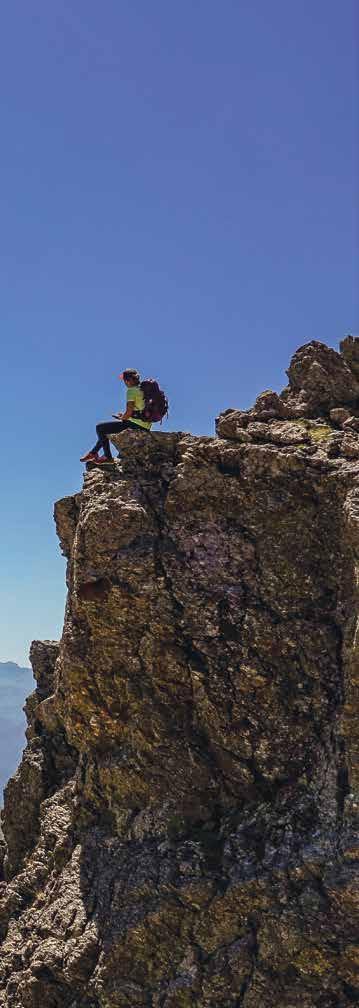
47 E STATE / SOMMER / REMMUS \
IT/ 18.©
rete di sentieri montani. In Comune a Sarentino lavora l’assessore Richard Kienzl, il responsabile comunale proprio dei sentieri della valle e quindi in qualche modo il committente. Il suo compito è nato dal lavoro di squadra circa 20 anni fa. “C ’è un continuo scambio tra i partner su quali misure debbano essere adottate e quando, uno scambio che è la base per la perfetta tenuta dei sentieri. E poi, e di questo andiamo fieri, è grazie a questo lavoro che la valle ha sviluppato la sua reputazione escursionistica e la sua oasi di pace e di ricreazione nel comune geograficamente parlando più esteso di tutto l’Alto Adige”. Mentre dei lavori di manutenzione più grossi o di predisporre nuovi sentieri, scavati o spianati nel terreno boschivo o di alta montagna si occupa la Forestale provinciale e comunale con i suoi uomini e macchinari. Sono Provincia, Comune e Ass. Turistica in accordo a pagare le spese che ne derivano.
Chi ama la montagna non solo la rispetta e la conquista con la forza delle proprie gambe e del fiato, ma di solito ama anche i suoi rifugi e la cultura dell’accoglienza tipicamente montana, con abbuffate di piatti tipici di malga, pietanze contadine dal sapore antico, e con i suoi alloggi semplici ma curati nei dettagli, i racconti degli osti e le amicizie che si sviluppano durante serate trascorse nei rifugi a raccontarsi la propria vita in pochi minuti. L’ospitalità dei 40 locandieri e osti nei rifugi della valle è leggendaria, tanto che le eccellenze vengono rego -
larmente premiate, come quella del rifugio Auener Alm – Malga dei Prati a 1.798 m che alla fine della scorsa estate è stata premiata con l’ambita targa di un quotidiano altoatesino, fra tutti i rifugi altoatesini, per la sua popolarità fra la gente del posto. Thomas Mahlknecht, oste del rifugio dal 2020 con la sua famiglia, se ne rallegra soprattutto per il team che ci lavora; infatti, il rifugio-malga è stato premiato per la sua cordialità, i risultati in cucina, la pulizia unita a una perfetta accoglienza.
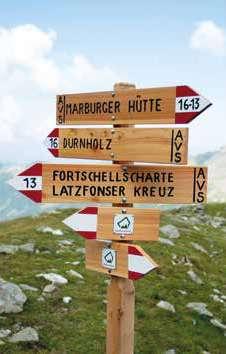
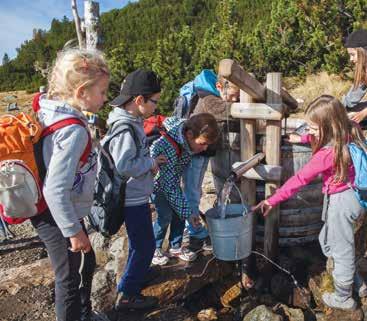
(ar)
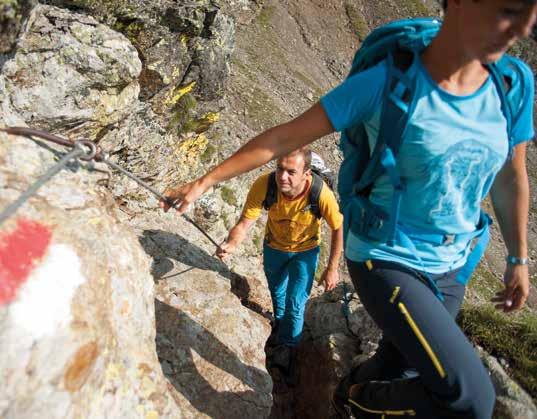
48
19.©
IL PERCORSO NATURALISTICO “URLESTEIG” A REINSWALD

a misura di famiglia per gli amanti dell’acqua, delle arrampicate e della natura. Il sentiero naturalistico è diviso in sei diversi tratti con possibilità di scelta per quanto riguarda il dislivello che varia da 70 a 560 metri, tutti in discesa. Il punto di partenza è comodamente raggiungibile dalla stazione a monte della cabinovia di Reinswald.
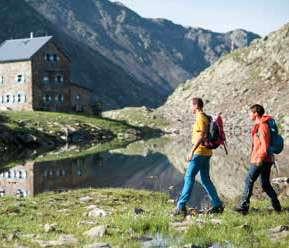
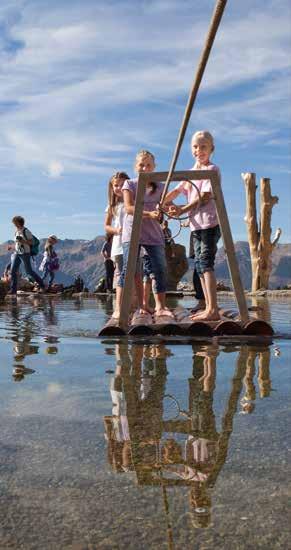
I bambini possono sperimentare, arrampicarsi sulla libellula gigante, perdersi nel fienile dei giochi al Sunnolm, scivolare con la zattera sulla superficie di un piccolo specchio d'acqua e cercare la via d'uscita nel labirinto di pino mugo, ascoltare i racconti dei pastori e la storia degli “Urlelockn”, scoprire interessanti dettagli sulla flora e sulla fauna della zona.
LA VIA DELLE LEGGENDE DI SONVIGO con i più piccoli
Queste leggende sono state tramandate fin dai tempi più antichi e ci raccontano ancora il nostro mondo con i suoi segreti più profondi. La Val Sarentino è ricchissima di saghe e leggende. Ecco perché insegnanti e alunni della scuola elementare Aberstückl/Sovigo hanno creato un percorso che parte dal maso Wippinger sopra al piccolo paese di Sonvigo e attraversa un sentiero avventuroso (n. 13) fino alla malga Durr. Un quiz sulle saghe del posto introduce tutta la famiglia agli argomenti trattati: depliant da ritirare prima della partenza al maso Wippinger o presso l’Associazione Turistica Val Sarentino oppure da stampare dal sito
www.sarntal.com
Tempo di percorrenza: 45 min., dislivello: 70 m

L'ALTA VIA HUFEISENTOUR per atleti ed escursionisti esperti
Sono sette le tappe giornaliere per completare l'intero percorso “Hufeisentour” (Ferro di Cavallo), su un suggestivo sentiero che si snoda tra i Monti Sarentini attraverso paesaggi incontaminati di prati, pascoli, crinali e valici. Chi è impegnato nel cammino potrà scoprire l'essenza dell'avventura, in un viaggio non solo fisico, ma anche spirituale, su sentieri poco frequentati. La vista mozzafiato sulle Dolomiti, patrimonio naturale dell’umanità UNESCO, rincuora l’animo; a completare lo scorcio sulle Alpi dello Zillertal, dello Stubai, dell’Ötztal e sul gruppo dell’Ortles e del Brenta. Le sette tappe vanno percorse preferibilmente in senso antiorario. Si accede al sentiero da diverse località, per esempio dal Corno del Renon o dal Passo Pennes.
E STATE / SOMMER / REMMUS \ 49 3 METE CONSIGLIATE
19.©
20.©
19.©
20.©
SARNER AUSFLUGSPARADIES
MIT SEINEM 500 KM LANGEN WEGENETZ
WIRD DAS SARNTAL VON DEN EINHEIMI -
SCHEN AUCH DAS WANDERTAL GENANNT. ES VERBLÜFFT MIT SEINEM OUTDOOR-POTENZIAL.
Die Bergkette der Sarntaler Alpen im Herzen Südtirols umschließt das Tal in Form eines Hufeisens. Und tatsächlich lässt es sich auf einem Höhenweg als Hüttenwanderung in sieben Tagen erkunden (siehe Kasten). Im Süden hingegen gleicht die Landschaft eher einer flachen Hochebene. Diese Lage macht das Sarntal zu einem Treffpunkt und Ausgangspunkt für alle Arten von Wanderungen, ob gemütlich oder anspruchsvoll, mit kleinen und mit großen Höhenunterschieden. Und dann gibt es da noch die Reinswald-Bahn mit ihrer bequemen Gondel, die bis auf 2.130 m nach Pichlberg bringt, und es gibt einen Shuttlebus, der für Wanderer:innen ausgestattet ist und den ganzen Sommer über fährt.
Für die Instandhaltung und Pflege der zahlreichen Wege und für deren Beschilderung ist eine gemischte Arbeitsgruppe zuständig, die sich aus dem Forstamt sowie der Gemeinde Sarntal, dem Tourismusverein und dem Alpenverein mit seinen vielen Freiwilligen zusammensetzt. Albert Marzoner, Wegewart des AVS, koordiniert die Gruppe der Freiwilligen, die regelmäßig kleinere Arbeiten ausführt und für die perfekte Instandhaltung der Wege mit ihrer rot-weiß-rot Markierung, für Reparaturen an den Bänken und für den Ersatz der typischen hölzernen Hinweisschilder entlang der Wege zuständig sind, wenn diese durch Wind, Schneedruck oder Erdrutsche beschädigt wurden. Rund 20 Personen engagieren sich seit über 20 Jahren in ihrer Freizeit und betreuen auf Abruf das wunderschöne Bergwegenetz, nach festgelegten Kriterien. Der Forstdienst der Landesverwaltung kümmert sich mit seinen Männern und Maschinen um die größeren Instandhaltungsarbeiten und um die Vorbereitung neuer Wege, die im Wald oder im Hochgebirge ausgehoben oder planiert werden.
Dazu kommt die legendäre Gastfreundschaft der 40 Hüttenwirte des Tals. Regelmäßig werden Auszeichnungen eingeheimst, wie jene, die Ende der Saison 2022 an das Team der Auener Alm auf 1.798 m vergeben wurde und die unter allen Südtiroler Hütten von der Beliebtheit der Hütte bei Einheimischen wie Gästen zeugt.
3 EMPFEHLENSWERTE AUSFLUGSZIELE
Der familienfreundliche Naturlehrpfad Urlesteig in Reinswald
Der Naturlehrpfad ist in sechs verschiedene Abschnitte unterteilt, mit unterschiedlichen Höhenunterschieden von 70 bis 560 Metern, die alle bergab führen. Startpunkt ist in der Nähe der Bergstation der Kabinenbahn Reinswald.
Der Sagenweg für die Kleinen
Das Sarntal ist reich an Sagen und Legenden. Deshalb haben Lehrer:innen und Kinder der Volksschule in Aberstückl einen Weg geschaffen, der beim Wippingerhof oberhalb des kleinen Dorfes beginnt und über einen Erlebnisweg (Nr. 13) zur Durr Alm führt. Ein Sagenquiz führt die ganze Familie in die Thematik ein: Das entsprechende Heft kann vor der Abfahrt auf der Wippingeralm oder beim Tourismusbüro abgeholt oder unter

www.sarntal.com
gefunden und ausgedruckt werden.
Die Hufeisentour für erfahrene Sportler:innen
In sieben Tagesetappen kann die gesamte "Hufeisentour" absolviert werden. Der eindrucksvolle Weg schlängelt sich durch die Sarntaler Berge, durch unberührte Landschaften mit Wiesen, Weiden, Graten und Pässen. Der Weg kann von verschiedenen Orten aus begangen werden, z.B. ab dem Rittnerhorn oder vom Penserjoch aus.
DE/ 50
SARNTAL - EXCURSION PARADISE
WITH ITS 500 KM LONG NETWORK OF PATHS, THE SARNTAL IS ALSO CALLED THE HIKING VALLEY BY LOCALS. ITS OUTDOOR POTENTIAL IS STAGGERING.
The Alpine range of the Sarntal, in the heart of South Tyrol, encircles the valley in the shape of a horseshoe. And indeed, it can be explored on a high-altitude trail hike – mountain hut to mountain hut - in seven days (see box). In the south, however, the landscape is given to a flat plateau. This location makes the Sarntal both a meeting point and starting point for all kinds of hikes: whether leisurely or challenging, with small and large differences in altitude. The Reinswald cable car, with its comfortable gondola, can get you up to Pichlberg, at 2,130 m, together with a shuttle bus equipped for hikers that runs all summer long.
The maintenance and upkeep of the numerous paths and their signposting is the responsibility of a mixed working group. It includes the forestry office, as well as the municipality of Sarntal, the tourist association and the South Tyrolean Alpine Club AVS, with its many volunteers. Albert Marzoner, AVS trail manager, coordinates the group of volunteers who regularly carry out smaller jobs. They include maintenance of the trails with their red-white-red markings, repairs to the benches, and replacing the typical wooden signs along the trails when damaged by wind, snow pressure or landslides. Around twenty people are involved, and have been generously donating their spare time for over 20 years - on call to look after the beautiful network of mountain paths, according to set criteria. The provincial forestry service, with its staff and machinery, takes care of the major maintenance work and the preparation of new paths, which are excavated or levelled in the forest or in the high mountains.
Then there is the legendary hospitality of the valley's forty mountain hut owners. They regularly win awards, such as the one awarded to the team of the Auener Alm at 1,798 m, at the end of the 2022 season, as the most popular of all South Tyrolean huts - among locals and guests alike.
3 RECOMMENDED EXCURSION DESTINATIONS
The family-friendly Urlesteig nature trail, Reinswald
The nature trail is divided into six different sections, with varying differences in altitude from 70 to 560 m, all leading downhill. The starting point is near the Reinswald cable car mountain station.
The legend trail for the little ones: The Sarntal valley is rich in myths and legends. That is why teachers and children from the primary school in Aberstückl have created a trail that starts at the Wippingerhof farm, above the small village, and leads along adventure trail no. 13 to the Durr Alm. A legend quiz introduces the whole family to the theme: The corresponding activity booklet can be picked up at the Wippingeralm, at the tourist office before setting off or even downloaded from
www.sarntal.com
The Horseshoe Tour for Experienced Hikers
The Horseshoe Tour can be completed in seven daily stages. This impressive trail winds through the Sarntal Alps, through untouched landscapes with meadows, pastures, ridges and passes. The trail can be accessed from various points, e.g. from the Rittnerhorn or the Penserjoch.
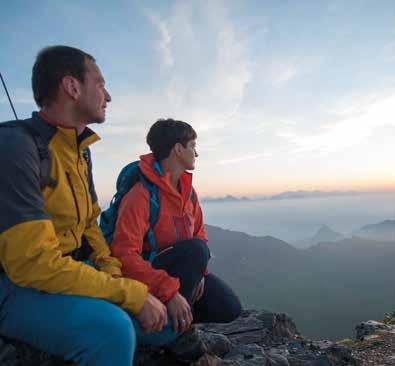
51 E STATE / SOMMER / REMMUS \
EN/
20.© 19.©
KINDERFREUNDLICHKEIT SIEGT

Von Pyramix, Toni und anderen Maskottchen.
Am Rittner Sonnenplateau sind die kleinen Gäste mit ihren größeren Begleitern herzlich willkommen, seit Jahrzehnten.
52 KIDS
Kaum ein Gebiet hat wie der Ritten solch ideale natürliche Voraussetzungen: Spazier- und Wanderwege im Flachen, die kinderwagentauglich und mit den Kleinen gut begehbar sind, eine Schmalspurbahn durch Wald und Wiese wie das Rittner Bahnl, das zum Abenteuer aufruft, außerdem das geologische Phänomen der Erdpyramiden, einen See wie den Wolfsgrubener See zum Schwimmen im Sommer und Eislaufen im Winter. Kurzum, ein natürliches Umfeld im Mittelgebirge, eine traumhafte Aussicht, Aktiv-Möglichkeiten zu allen Jahreszeiten, geeignet für einen entspannten Familienurlaub. Und darauf bauen die Bemühungen des Tourismusvereins Ritten, der bestrebt ist, weitere interessante Angebote zu schaffen, wie den ” Wald-Wild-Wunderweg“ in Oberbozen und die ”sagenhafte Welt des Adlers Toni“ am Rittner Horn.

Von Pyramix über die zwinkernde Sonne bis zum Toni
Die Geschichte der Rittner Maskottchen ist etappenreich. In den 1990er Jahren hat man sich für den Namen Pyramix entschieden, Pate gestanden hat Marius Hörner aus Leonberg in Deutschland. Der Tourismusverein Ritten hatte im Sommer 1997 alle Gästekinder dazu eingeladen, einen Namen für das Maskottchen der Familyhotels Ritten zu finden. Pyramix überzeugte mit seinem Bezug zu den Erdpyramiden und der Anleihe aus der Welt der Comicfiguren. Lange Zeit war der Clown Pyramix das Maskottchen der Familyhotels Ritten und jenes für das Rittner Kinderprogramm. 2019 hatte das Clown-Motiv ausgedient und wurde mit einer zwinkernden Sonne ausgetauscht. Parallel dazu wurde der Adler Toni geboren.
3.© 53 E STATE / SOMMER / REMMUS \
DE/
Mit Kinderprogramm am Ritten punkten
Gemeinsam mit den ”familienfreundlichen Gastgebern“ organisiert der Tourismusverein Ritten das reichhaltige Kinderprogramm, das von Ostern bis Allerheiligen angeboten wird. Es beinhaltet BauernhofNachmittage, Bogenschießen, Schnupperklettern, Schnupperreiten, Schatzsuche, Eis machen und Pizza backen, auch Naturerlebnisse mit Anleitung. Das tägliche Kinderprogramm der familienfreundlichen Gastgeber wird von Kinderbetreuerinnen begleitet – ein Anker für Familien, denn so können Eltern in diesem Zeitfenster zwischendurch auch allein etwas unternehmen oder ausruhen. Sollten besondere Bedürfnisse auftauchen, ist der Tourismusverein Ritten bei der Suche und Vermittlung eines BabysitterDienstes behilflich.

www.ritten.com/de/familien
bm hat mit Hans Holzner gesprochen, Seniorchef des Parkhotel Holzner am Ritten und Vater der Familienhotels Südtirol und der ” Familyhotels Ritten“. Er war 17 Jahre lang Präsident dieser Vereinigungen. Das Parkhotel Holzner ist eines der spezialisiertesten Betriebe der Gegend.
Wie kam es zur Idee von Familienangeboten in der hiesigen Hotellerie?
Imgrund ist auch das eine Familiengeschichte, und zwar jene meiner eigenen Großfamilie: Ende der 1970er Jahre führten meine Frau und ich ein Hotel, dessen Klientel in die Jahre gekommen war, während wir selbst sechs kleine Kinder hatten und im Parterre des Hotels wohnten. Natürlich spielten unsere Kinder u.a. im Hotelgarten und waren auch nicht immer zu bremsen, was einige der älteren Herrschaften störte.

54
21.©
Wir fühlten uns eingeengt und frustriert. Unser Betriebsberater riet uns zum Mut, neue Wege zu beschreiten, die einerseits die Vereinbarkeit Betrieb-Familie ermöglichen und andererseits, unser Hotelpublikum verjüngen sollten. In Südtirol betraten wir Neuland mit der Idee, uns auf das Segment Kinder und Familien zu spezialisieren. Damals galten uns die österreichischen Kinderhotels als Vorbild. Wir suchten sofort nach Partnerbetrieben, um in Südtirol ein Netzwerk aufzubauen und gemeinsame Sache zu machen, vor allem bei PR und Weiterbildung. Nach wenigen Monaten hatten wir eine Gruppe von 15 Betrieben beieinander, die Feuer und Flamme waren – die ersten Familienhotels Südtirols. Mittlerweile hat sich die Anzahl verdoppelt. Wir haben seitdem voneinander gelernt, uns
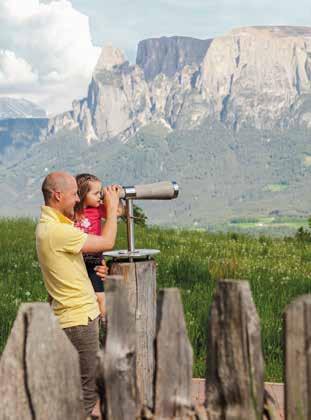
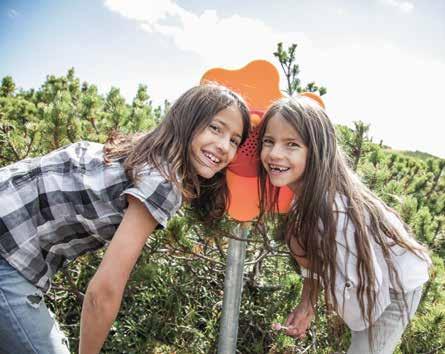
gegenseitig motiviert, einen Kriterienkatalog erarbeitet, innerhalb der Nische Kategorien etabliert, eine Marke geschaffen.
Von den Kinderhotels Ritten ist man in der Namensgebung später zu den Familyhotels und dann zu den familienfreundlichen Gastgebern gewechselt. Warum?
Das Sonnenplateau ist geradezu prädestiniert als familienfreundliche Urlaubsdestination. Wir waren eigentlich immer schon bestrebt, mehr für Familien mit Kindern anzubieten und hatten die ” Kinderhotels Ritten“ gegründet. Schließlich hat uns der Namen gestört, weil wir weniger spezialisiert waren als die ” Kinderhotels“ in Österreich, und so haben wir diese Betriebe in Familyhotels Ritten umgetauft. Inzwischen nennen sich diese zwölf Rittner Betriebe ”familienfreundliche Gastgeber“, weil wir vom 4SterneS-Hotel bis zum Bauernhof viele Arten von Beherbergungsbetrieben mit ins Boot geholt haben. Es geht ja weder um die Kategorie noch um Standards, sondern vielmehr um eine Einstellung, um gelebte Werte. Für die Gäste dieser Betriebe gibt es den Sommer über an fünf Wochentagen ein von uns gemeinsam erarbeitetes Kinderprogramm. Für alle anderen Gästekinder,

55 E STATE / SOMMER / REMMUS \
3.©
21.©
3.©
aber auch für Rittner Kinder gilt das Angebot dreimal wöchentlich. Vieles hat sich verselbstständigt.
Ein Vergleich zwischen früher und heute?
Zu Beginn waren wir Vorreiter, und die Neuigkeit wurde sehr positiv aufgenommen – die Gäste waren mit wenig begeistert, die Familien suchten diese Art von Hotels, um einen entspannten Familienurlaub zu genießen – alle zusammen. Heute sind die Erwartungen klarerweise gestiegen, vieles ist zur Normalität geworden und gehört auch in anderen, nicht spezialisierten Betrieben zum Standard-Angebot. Und im Vergleich von vor 30-40 Jahren sind die Kinder heute kaum zu bändigen, die Betreuung ist manchmal gar nicht so einfach.
Wie sehen Sie die Zukunft dieser Nische?
Ich bin überzeugt, sie hat ein großes Potential. Das Familienmodell mag sich geändert und auch geöff-
net haben, die herkömmliche Familie ist Vergangenheit, doch die Sehnsucht nach Zusammenhalt und nach einer gemeinsam verbrachten guten Zeit ist groß. Alle sollten vom Familienurlaub profitieren, Kinder wie Eltern und Erziehungsberechtigte.
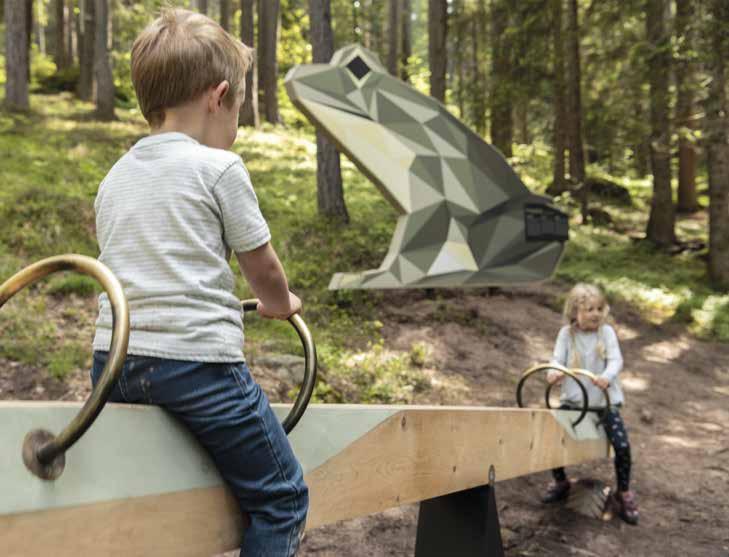
Haben Sie Tipps, wie man kleinen Gästen am besten begegnet?
Für uns im Betrieb sind die Kinder die ersten Gäste, die wir bei der Ankunft willkommen heißen, und zwar auf Augenhöhe. Das ist durchaus wörtlich zu verstehen, denn das Personal wird sich bücken, bzw. wir haben an der Rezeption eine Stufe angebracht, die unsere kleineren Gäste erhebt, damit sie genauso am Tresen stehen und sich am Gespräch beteiligen können. Beim Essen erhalten Kinder den Vorrang, werden schneller bedient, damit sie ihrem Bewegungsdrang folgen und nach dem Essen rasch wieder zum Spielen kommen. Aber wir pflegen auch
56
23.©
eine Gewohnheit für das Eltern-Wohl: Unsere Kinderbetreuung im Haus wird bis 21 Uhr gewährleistet und beinhaltet – fakultativ - auch das Abendessen an einem großen Kindertisch. Damit ermöglichen wir den Eltern, das Abendessen in Ruhe genießen zu können und den Tag gut abklingen zu lassen. (ar)
ZWEI AUSFLUG-TIPPS FÜR FAMILIEN mit Einkehrmöglichkeiten
In die sagenhafte Welt des Toni am Rittner Horn
Hoch oben am Rittner Horn liegt der Horst von Adler Toni. Von dort betrachtet er die Welt und erlebt sie als König der Lüfte auf seinen vielen Abenteuern.
Start in Pemmern auf den Spuren von Toni mit der Bergbahn Rittner Horn auf die Schwarzseespitze hinauf. In wenigen Schritten erreicht man den Panoramaturm, wo der Adlerblick ausprobiert werden kann. Auf dem Parcours liegt ein riesiges Adlernest zum Herumklettern, aber auch eine Wasserwelt mit Kneippbecken und Wasserrinnen zum Planschen und Spielen. Während die Kinder Tonis Abenteuerreich erleben, gibt es für Eltern Rastplätze zum Genießen des Panoramas und zum Sonnenbaden und Mitspielgelegenheiten. Der Familien-Rundweg ist ca. 2 Kilometer lang. Er startet an der Bergstation der Bergbahn Rittner Horn auf 2.060 m und führt über das Untere Horn zurück (kinderwagentauglich). Nachlese: Kinderbüchlein, erhältlich in den Tourismusbüros in Klobenstein und Oberbozen und an der Talstation der Bergbahn Rittner Horn zum Ausflugs-Auftakt.
Auf dem Wald-Wild-Wunder-Weg in Oberbozen

Mit dem Maskottchen Pyramix den Spuren der Wildtiere am Sonnenplateau Ritten folgen. Der Naturerlebnispfad mit der Markierung Nr. 16 führt von Oberbozen durch Wald und Wiesen übers Zagglermoos zum Lobishof und dessen Mühle. Vom Fuchsbau der Fiona über das Versteck vom stacheligen Ivo, zur Höhle des fleißigen Buntspechts Walter bis zum Nest der Sissi, des emsigen Eichhörnchens, das im Sommer seine Vorräte für den Winter sammelt. Die Stationen laden zum Spielen und Lernen ein.
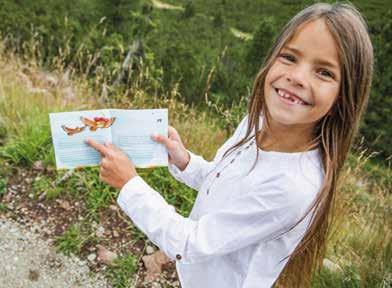
57 E STATE / SOMMER / REMMUS \
21.©
21.©
VINCE L’ATTENZIONE AI BIMBI
SULL'ALTOPIANO
SOLEGGIATO DEL RENON, I PICCOLI OSPITI E I LORO ACCOMPAGNATORI PIÙ GRANDICELLI SONO ACCOLTI CALOROSAMENTE DA DECENNI.
Condizioni naturali ideali come quelle del Renon sono introvabili: sentieri per passeggiate ed escursioni in pianura, adatti alle carrozzine e facili da percorrere con i più piccoli, una ferrovia a scartamento ridotto che attraversa prati e boschi invitando all’avventura grazie al trenino del Renon; inoltre il fenomeno geologico delle piramidi di terra, un lago come quello di Costalovara per nuotare in estate e pattinare sul ghiaccio in inverno. In breve, ecco un ambiente naturale montano da raggiungere comodamente in funivia dalla città, con un panorama da sogno, possibilità di attività in tutte le stagioni, adatto per una rilassante vacanza in famiglia. L’Associazione Turistica del Renon si sta impegnando a creare ulteriori offerte invitanti, come “il sentiero selvaggio delle meraviglie” a Soprabolzano e “il mondo favoloso di Toni l’aquila” sul Corno del Renon.
Ricco programma per bambini sul Renon e la mascotte dei Family Hotels
Pyramix
L’Associazione Turistica del Renon, insieme alle strutture alberghiere per le famiglie, organizza un programma giornaliero per bambini, che viene proposto da Pasqua a Ognissanti. Il programma comprende pomeriggi al maso, tiro con l'arco, arrampicata, equitazione, caccia al tesoro, preparazione di gelati e pizza, nonché esperienze naturalistiche guidate. Le uscite guidate da babysitter competenti sono un'occasione preziosa per tutta la famiglia, perché in questo modo anche i genitori possono intraprendere qualche attività per conto proprio o riposare in pace per qualche ora. In caso di esigenze particolari, l’Associazione Turistica aiuta a trovare e organizzare un servizio di babysitting individuale.
www.ritten.com/it/famiglie
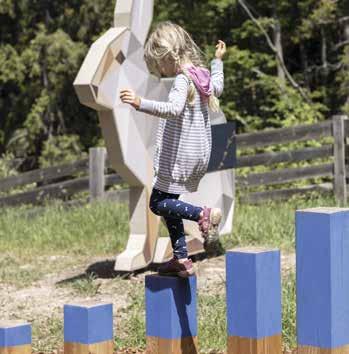
2 CONSIGLI PER LE ESCURSIONI IN FAMIGLIA con luoghi di sosta per fermarsi a mangiare un boccone
Nel favoloso mondo di Toni al Corno del Renon
Il nido dell’aquila Toni si trova in alto sul Corno del Renon. Da lì osserva il mondo e lo domina come re dei cieli nelle sue innumerevoli avventure. Partite da Pemmern sulle tracce di Toni con la cabinovia che porta alla Cima Lago Nero sul Corno del Renon. In pochi passi si raggiunge la torre panoramica, dove si può provare la vista dell’aquila. Sul percorso c'è un enorme nido d’aquila su cui arrampicarsi, ma anche uno spazio acquatico con vasche Kneipp per sguazzare e giocare. Mentre i bambini si immergono nel regno dell'avventura di Toni, i genitori hanno a disposizione aree di sosta per godersi il panorama, prendere il sole oppure giocare con i loro bimbi. Il percorso circolare per famiglie è lungo circa 2 chilometri. Si parte dalla stazione a monte della funivia del Corno del Renon a 2.060 m e si torna indietro per il sentiero panoramico (adatto ai passeggini).
Sul sentiero selvaggio delle meraviglie a Soprabolzano
Seguite le tracce degli animali selvatici sul soleggiato altopiano del Renon con la sua mascotte Pyramix. Il sentiero didattico contrassegnato con il n. 16 conduce da Soprabolzano attraverso boschi e prati, passando per Zagglermoos, fino al maso Lobishof e al suo mulino. Dalla tana della volpe Fiona al nascondiglio del riccio Ivo, alla grotta del laborioso picchio Walter, al nido di Sissi, il diligentissimo scoiattolo che in estate raccoglie le provviste per l’inverno… le stazioni invitano a imparare giocando.
58
IT/ 23.©
A CHILD-FRIENDLY TRIUMPH
ON THE SUNNY RITTEN PLATEAU, YOUNGER GUESTS AND THEIR OLDER COMPANIONS HAVE BEEN WARMLY WELCOME FOR DECADES.
The Ritten idyll is blessed with an almost unparalleled natural setting, with hiking paths on the flat suitable for prams and a delight to walk with little ones in tow. For kid-friendly adventure, the Rittner Bahnl narrowgauge railway winds through woods and meadows; the earthen pyramids are there to be explored; and not forgetting lakes like Wolfsgrubener - for swimming in summer and ice skating in winter. In short, the natural environment of the low mountain range has a dreamlike panorama and activities for all seasons: all making for a relaxing family getaway. The Ritten Tourism Association is always seeking to build on this, striving to offer more on the Ritten Horn, such as the “Forest-Wilderness-Wonder Path” in Oberbozen and the “Legendary World of Toni the Eagle”.
Superb activity programmes for kids
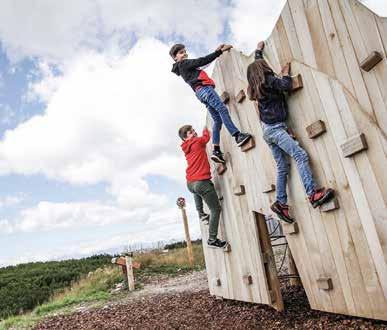
Together with family-friendly hosts, the Ritten Tourism Association organises a wide-range of kid's programmes, offered from Easter to All Saints’ Day. They include farm afternoons, archery, horse riding or climbing for beginners, treasure hunts, ice cream making and pizza baking, and of course guided nature experiences. The daily children’s programme with family-friendly hosts includes childminders – a welcome addition for families, allowing parents to do
TWO EXCURSION TIPS FOR FAMILIES With refreshment stops!
Into the fabulous world of Toni at the Rittner Horn High on the Rittner Horn lies the eyrie of Toni the eagle. From here, he watches over the world as king of the skies and from here he starts his adventures.
If you’re on the tracks of Toni, start in Pemmern and head up to Schwarzseespitze with the Rittner Horn mountain railway. Very close by is the panorama tower, where you can experience the eagle’s view. There’s a huge eagle's nest to climb around and Kneipp pools and water troughs for splashing and playing around in. While the children experience Toni's realm of adventure, there are also areas for parents to enjoy the panorama, sunbathe and even play themselves. The circular family trail is about 2 km long. It starts at the mountain station of the Rittner Horn cable car - at 2,060 m - and leads back via the Untere Horn (suitable for prams). Ask for the children's brochure, available at the tourist offices in Klobenstein and Oberbozen, or the valley station of the Rittner Horn mountain railway, where you start the route.
On the Woods-Wild-Wonder Way, Oberbozen
Follow the tracks of wild animals on the sundrenched Ritten plateau with the mascot Pyramix The no. 16 nature discovery trail (see sign markings) leads from Oberbozen through woods and meadows, via Zagglermoos to Lobishof and its mill.
From Fiona's foxhole to the hiding place of the prickly Ivo, or the cave of Walter, the industrious woodpecker, to the nest of Sissi, the busy squirrel, who spends her summer gathering her winter supplies. Each checkpoint stage invites you to play and learn.
something alone or just rest up while the kids are occupied. For individual needs, the Ritten Tourist Association can also help find and arrange babysitters.
www.ritten.com/de/familien
59 E STATE / SOMMER / REMMUS \
EN/
21.©
L’ELEGIA DEI MULINI AD ACQUA
Canto di una civiltà da riscoprire sull’altopiano di S. Genesio a pochi minuti da Bolzano.
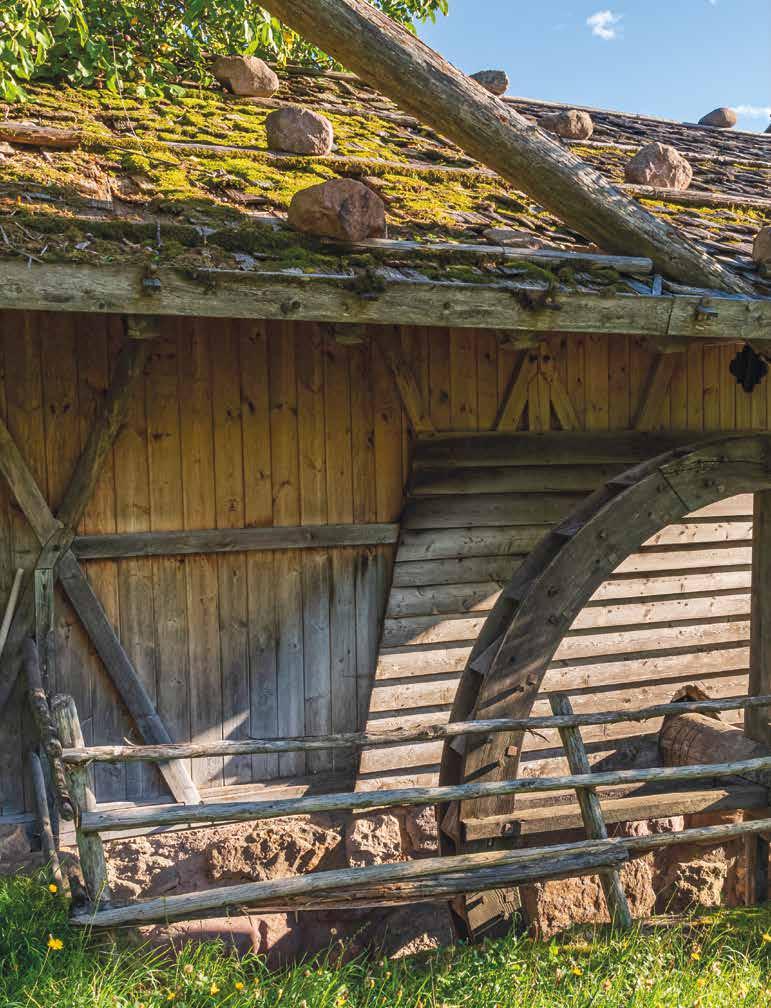
60
EXPERIENCE
cqua, vento e muscoli: sono le principali forze motrici che l’uomo ha imparato a sfruttare nei secoli per attivare i dispositivi necessari alla macinazione del grano. L’acqua, in particolare, rappresenta l’elemento naturale più antico che i contadini hanno saputo convertire in energia preziosa. Resti di mulini sono stati rinvenuti dagli archeologi lungo la valle del Giordano e risalgono addirittura all’8.000 a.C. I romani, successivamente, coniarono il termine “molina”, da cui deriva la parola odierna applicata a tutte le apparecchiature che ottengono il loro movimento rotatorio attraverso la forza muscolare, il vento o l'acqua. Si parla infatti di mulino per cereali, frantoio o segheria.

In tempi in cui le risorse idriche sono al centro di un dibattito che non riguarda più soltanto l’ecologia ma il sostentamento di comunità locali colpite dalla siccità, uno sguardo al passato del nostro territorio e al suo legame vitale con la tradizione dei mulini ad acqua potrebbe essere un ottimo spunto di riflessione sull’attualità, oltre che un modo alternativo di riscoprire percorsi in una realtà ormai dimenticata.
Testimonianze assai più recenti come articoli di giornale della Seconda Guerra Mondiale confermano la presenza ancora viva sull’altopiano di S. Genesio di molti insediamenti rurali che fondavano la loro autosussistenza sul mulino. Possedere un proprio mulino consolidava l'indipendenza del contadino e garantiva l'autosufficienza. Quando le autorità militari durante la Prima Guerra Mondiale sigillarono i mulini dei contadini (“Mühlensperre”), quest’ultimi furono privati dei requisiti per la produzione del pane, nonostante le possibili scorte di grano nascoste.
I mulini nel territorio comunale di S. Genesio erano situati (e in parte lo sono ancora oggi) sui ruscelli Talvera e Avigna o sui rivi Alten e Haggen, che rendevano possibile la macinazione solo per poche ore in primavera e in autunno. L’acqua veniva inoltre raccolta in stagni e laghetti (“Locken”) per garantire la trazione.
Gli appezzamenti di terreno su cui sono stati costruiti i mulini, spesso lontani dai masi, sono tutti registrati nel catasto. Anche questo conferma l'enorme importanza del mulino. Non tutti i contadini o i piccoli proprietari avevano un proprio mulino o il diritto di utilizzare quello del
4.© 61 E STATE / SOMMER / REMMUS \ IT
/A
vicino. Per questo motivo, separandoli dalla fattoria, si svilupparono i mulini dei macellai (“Lohnmühlen”). Nel corso del tempo, i proprietari trasformarono la loro piccola proprietà in un'azienda agricola indipendente con un modesto allevamento e ampliarono così le loro proprietà terriere.

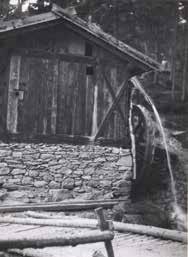
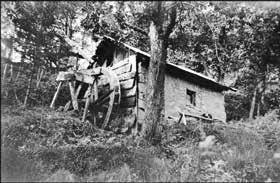
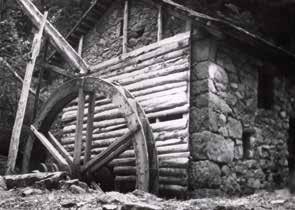
Una visita ai luoghi dove un tempo esisteva un mulino può essere anche un’occasione per ricostruire la vita quotidiana di una civiltà che contava sull’avvicendarsi delle stagioni e sulla reciproca collaborazione: i ritmi della natura coincidevano con quelli del lavoro. Un caso interessante lo offre il maso Hinterbrunner. Fino a qualche decennio fa, la fattoria aveva ancora un mulino nel-


le vicinanze. L'acqua veniva raccolta nel laghetto adiacente e alimentata nel mulino sul pendio sottostante. Nell'Archivio di Stato di Bolzano è conservato un documento relativo all'approvazione di un mulino domestico da parte dell'allora proprietario Anton Mayr nel lontano 1829. Il suo progetto ricevette una valutazione positiva dall'Imperial Regio Ufficio Distrettuale di Bolzano, dopo essere stato esaminato dall'ingegnere distrettuale responsabile dell'Adige. Il piano fu depositato presso il tribunale distrettuale di Karneid a Bolzano, a cui apparteneva il comune di S. Genesio.

Chi non aveva il mulino vicino al proprio maso, come la famiglia Hinterbrunner, a volte doveva percorrere lun-

62
24.©
ghe e faticose distanze. Ad esempio, i Moar di Avigna avevano originariamente il mulino sull’omonimo torrente, sotto i Dorner. Oppure i contadini di Alta Avigna (Hinterafingen) dovevano portare il grano al mulino sul Talvera. Ma anche i contadini di S. Genesio dovevano fare il viaggio fino al rivo Alten. Naturalmente, i cavalli erano di grande aiuto. I sacchi di cuoio destinati al grano erano chiamati bulgn. “Bulg” ha a che fare con il mantice, una pelle di animale spellata. Negli inventari delle fattorie se ne trovano diversi, quindi erano preziosi e necessari. Chi non aveva un cavallo portava il macinato nello “Stübich”, un recipiente di legno per il trasporto, oppure lo riempiva in sacchi di tela e lo trasportava su una cesta fino al mulino. Josef Gamper, che è cresciuto al maso Willele, racconta che doveva scendere dalla fattoria di casa con il grano caricato sulle spalle fino ai mulini della “Eselstatt” sul torrente Avigna, per poi risalire la ripida montagna con la farina.
Parole elegiache sui mulini di S. Genesio sono state spese in diverse occasioni in passato, nel ricordo e nella celebrazione di una civiltà – quella contadina – la cui presenza ha sempre ispirato sia la penna dei poeti che quella dei giornalisti. A tal proposito, vale la pena citare quanto scritto in un prezioso articolo del “Bozner Tagblatt” datato 27 dicembre 1943: “Il vivace rumore del mulino è stato spesso cantato e descritto in canzoni e poesie. Gli amanti della natura amano fermarsi innanzi a esso e osservare con interesse gli ingranaggi […]. Ciò che è piantato nel terreno come seme e che poi matura in grano viene macinato in farina dalla stessa mano. Questi mulini testimoniano l'indipendenza dei contadini. Dalla semina alla macinazione del grano, tutto il lavoro necessario è svolto dal contadino. Il contadino è il nutrimento del popolo”.
Di recente è apparso un libro dal titolo evocativo, Mit der Kraft des Wassers (“Con la forza dell'acqua”), che tratta la storia, la tecnologia di mulini, fucine e segherie, con particolare attenzione al ruolo che questi edifici e impianti hanno svolto nel plasmare il paesaggio. La Società del Museo di San Genesio ha pubblicato l'opera insieme all'autore Richard Furggler nell’ottobre 2022. Le immagini di Hugo Atzwanger sono state organizzate dal Museo del Folclore di Dietenheim in val Pusteria. La forza evocativa di queste foto, così come l’occasione offerta dai percorsi guidati alla scoperta dei mulini di S. Genesio (vedi box), rappresentano ancora oggi un controcanto all’oblio di una civiltà preziosa e non ancora del tutto meccanicizzata. Se è vero, infatti, che il mulino alimentato dalla corrente elettrica non evoca più la poesia di un tempo, possiamo sempre ascoltarne l’eco nell’intima voce di un ruscello.
(rm)
VISITE GUIDATE AI MULINI DI S. GENESIO
nei giovedì di giugno e luglio, in compagnia di Reinhard Vigl, ex professore di storia e geografia
Punto d'incontro: Ufficio turistico di S. Genesio alle ore 10, durata circa 5-6 ore, tempo effettivo di cammino stimato: 1 ora
Itinerario:
dal Museo contadino dei cavalli Haflinger si prosegue verso un tipico insediamento con forno e rovine del mulino. Da lì escursione fino al maso Köstenbaumer a Pittertschol per ammirare un mulino ancora in funzione e godere di una pausa ristoro curata dal contadino Plattner. Infine, escursione attraverso i prati e i campi fino al mulino Pichler (anchʼesso ancora in funzione) con ritorno a S. Genesio in bus.
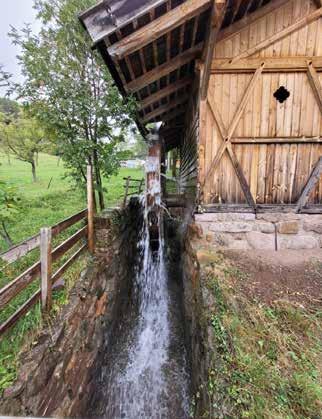
Numero minimo di partecipanti: 6.
Iscrizioni presso la proloco di S. Genesio
63 E STATE / SOMMER / REMMUS \
+39 0471 354 196 o info@jenesien.net 24.©
tel.
GESCHICHTEN VON BAUERNMÜHLEN
HINTERLASSENSCHAFTEN EINER ZIVILISATION, DIE ES AM HOCHPLATEAU VON JENESIEN, NUR WENIGE MINUTEN VON BOZEN ENTFERNT, WIEDERZUENTDECKEN GILT.
Wasser, Wind und Muskelkraft: Das ist der Antrieb, das sind die Kräfte, die sich der Mensch im Laufe der Jahrhunderte zunutze gemacht hat, um die für das Mahlen von Getreide notwendigen Gerätschaften zu betreiben. Vor allem das Wasser ist das älteste natürliche Element, das die Bauern schon sehr früh in wertvolle Energie umwandeln konnten. Überreste von Mühlen wurden von Archäologen im Jordantal gefunden und stammen aus der Zeit um 8.000 v. Chr.
Die Römer prägten später den Begriff “molina”, von dem sich die heutige Bezeichnung für Mühlen ableitet. Wir sprechen also von Getreidemühlen, Ölmühlen und auch von wasserbetriebenen Sägewerken.
Jüngere Zeugnisse wie Zeitungsartikel aus dem Zweiten Weltkrieg belegen, dass es auf dem Hochplateau in Jenesien noch viele bäuerliche Siedlungen gab, die ihren Lebensunterhalt mit einer Mühle bestritten. Der Besitz einer eigenen Mühle festigte die Unabhängigkeit der Bauerfamilie und sicherte deren Selbstversorgung. Als die Militärbehörden während des Ersten Weltkriegs die Mühlen der Landwirte versiegelten (“Mühlensperre”), wurde diesen der Bedarf für die Brotherstellung und damit die Lebensgrundlage entzogen.
Ein Besuch an den Orten, an denen sich einst eine Mühle befand, kann eine Gelegenheit sein, den Alltag einer Zivilisation zu rekonstruieren, die auf den Wechsel der Jahreszeiten und den Gemeinsinn angewiesen war, auf den Zusammenhalt in der Gemeinschaft: Die Rhythmen der Natur fielen mit denen der menschlichen Arbeit zusammen.
BUCHTIPP
„Mit der Kraft des Wassers‟ von Richard Furggler, hrsg. vom Museumsverein Jenesien, EFFEKT!BUCH, 2022
Das Buch befasst sich erstmals mit der Geschichte, der Technik und v.a. mit der Bedeutung von Mühlen, Stampfen, Schmieden und Sägewerken. Dass diese Infrastruktur die Landschaft geprägt hat, zeigen die vielen Bilder. 176 Seiten mit über 100 historischen Mühlen-Bildern.
GEFÜHRTE MÜHLEN-WANDERUNGEN
jeden Donnerstag im Juni und Juli, in Begleitung von Reinhard Vigl. Der Dorfkundige war früher Deutsch-, Geschichte und Geografie-Lehrer. Treffpunkt: Tourismusbüro Jenesien um 10 Uhr. Dauer: 5-6 Stunden, geschätzte tatsächliche Gehzeit: 1 Stunde.
Wegverlauf: vom Haflingermuseum Jenesien zu einer typischen Siedlung mit Backofen und Mühlenruine. Wanderung zum KöstenbaumerHof in Pittertschol mit Besichtigung einer noch in Betrieb befindlichen Mühle und Einkehr bei Bauer Plattner. Abschließend Wanderung über Wiesen und Felder zur Pichlermühle (ebenfalls noch in Betrieb) und Rückfahrt nach Jenesien mit dem Bus. Mindestteilnehmerzahl: 6. Anmeldung im Tourismusbüro Jenesien

Tel. +39 0471 354 196 oder info@jenesien.net

64
DE/
24.© 24.©
TALES FROM THE PEASANT MILLS
THE LEGACIES OF A CIVILISATION TO BE REDISCOVERED ON THE JENESIEN HIGH PLATEAU - ONLY MINUTES FROM BOLZANO.
Water, wind and muscle power: these are the forces that people have harnessed over the centuries to operate the equipment necessary for grinding grain. Water in particular is the oldest natural element that farmers were able to convert into valuable energy very early on. Remains of mills have been found by archaeologists in the Jordan Valley and date back to around 8,000 B.C. The Romans later coined the term “molina”, from which our name for mills is derived. So we are talking about grain mills, oil mills and also water-powered sawmills.
More recent evidence, such as newspaper articles from the Second World War, show that there were still many rural settlements on the high plateau in Jenesien that made their living with a mill. Owning your own mill consolidated the independence of the farming family and ensured their self-sufficiency. When the military authorities sealed off the farmers’ mills (“Mühlensperre”) during the First World War, they were deprived of the means for bread production and thus of their livelihood.
A visit to the places where a mill was once located can be an opportunity to reconstruct the past. The everyday life of a civilisation can be imagined, one that depended on the change of seasons and on public spirit, on community cohesion: the rhythms of nature coincided with those of human labour.
GUIDED MILL WALKS

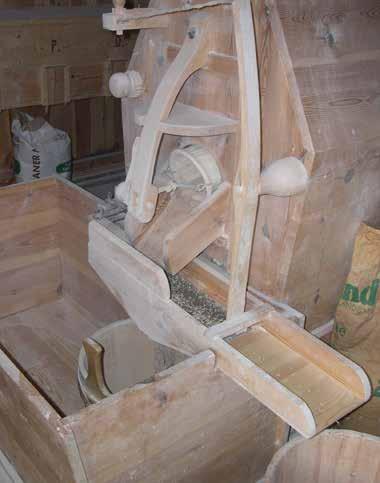
Every Thursday in June and July, accompanied by local expert Reinhard Vigl, a retired teacher of German, history and geography.
Meeting point: Jenesien tourist office at 10 am.
Duration: 5-6 hours.
Estimated actual walking time: 1 hour.
Route: from the Jenesien Haflinger Museum to a typical settlement with baking oven and mill ruins. Then a hike to the Köstenbaumer farm in Pittertschol, with a visit to a mill that is still in operation, followed by a stop at Plattner farm. Finally, a hike across meadows and fields to the Pichler mill (also still in operation), returning to Jenesien by bus.
Minimum number of participants: 6.
Bookings at the Jenesien Tourist Office
Tel. +39 0471 354 196 or info@jenesien.net
65 E STATE / SOMMER / REMMUS \
EN/
24.© 24.©
RUDYS GROSSES FEST
Im deutschsprachigen Raum ist er ein Ass im Ärmel des Schlagerkarusells: Der Leiferer Tenor Rudy Giovannini. Ende Juni wird in seiner Heimatstadt zu seinen Ehren das 20. Köfelefest ausgetragen.
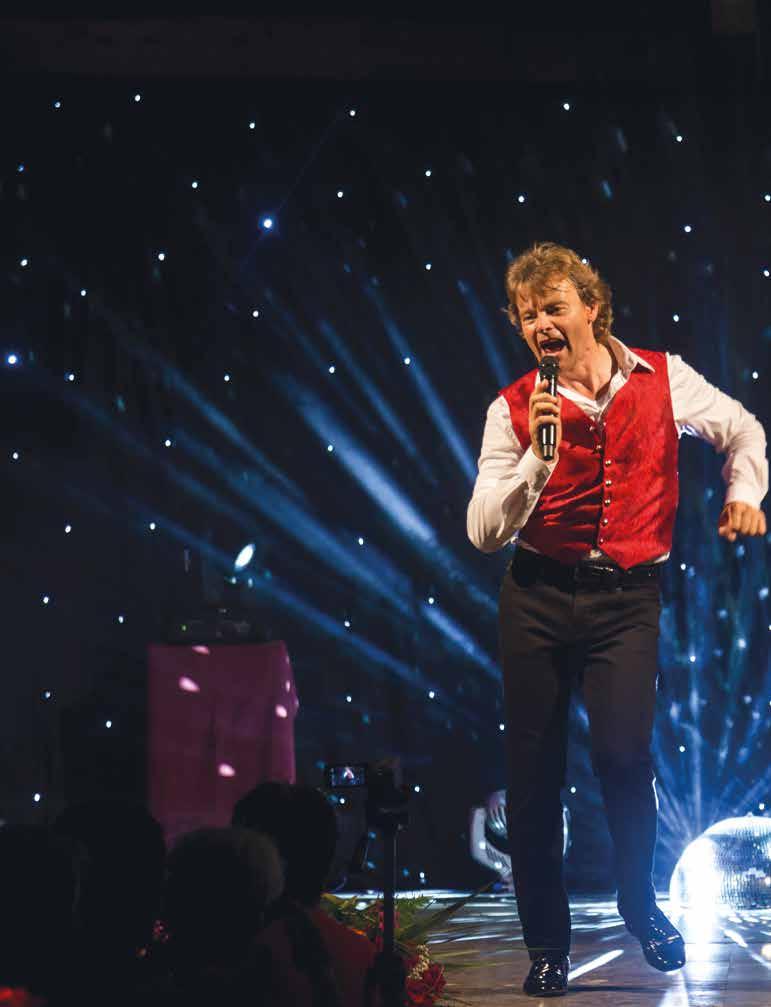
66
BACKSTAGE
23 Jahre sind seit seinem großen Karrieredebüt vergangen. Seitdem ist die Fangemeinde um den charmanten Musiker und Publikumsliebling exorbitant gewachsen, doch der harte und älteste Kern, der erste Fanclub, kam in Leifers zusammen, um dem Sänger nach seinem Erfolg beim Grand Prix der Volksmusik 2000 eine triumphale Rückkehr nach Hause zu ermöglichen – der Auftakt des Leiferer Köfelefestes, das 2001 ins Leben gerufen wurde. Nach einer pandemiebedingten Pause kommt es heuer Ende Juni zur großen Jubiläumsausgabe.

Eigentlich ist das Fest gar zwei Großen gewidmet, neben Musikstar Rudy Giovannini auch dem Kirchlein St. Peter am Kofel, dem sog. ”Peterköfele“, hoch über Leifers. Beides sind Wahrzeichen der jüngsten Stadt Südtirols (1985 von Marktgemeinde zur 18.000 Einwohner-Stadt erhoben). Rudys Auftritt beim alljährlichen Köfelefest zieht Fans und Freunde der internationalen volkstümlichen Musikszene nach Südtirol, letzthin Menschen aus sieben Nationen. Die Begegnungen mit seinen Fans gleichen einem riesengroßen Freunde-Treffen mit Rudy als Mittelpunkt, als Entertainer und Stimmungsmacher, der sich selbst am meisten freut, nach den großen TV- und Konzertbühnen Deutschlands die Bühne seiner Heimatstadt Leifers zu bespielen, und zum Mitsingen und Tanzen zu animieren, denn: ”Das Köfelefest ist kein einfaches Konzert, das Köfelefest ist eine Party“, an der halb Leifers mitarbeitet.
RUDY GIOVANNINI
in Leifers aufgewachsen und immer noch dort wohnhaft.
Absolvierte eine klassische Gesangsausbildung an den Konservatorien von Bozen und Verona, zuletzt in Modena bei Maestro Arrigo Pola, der auch Lehrer von Luciano Pavarotti war. Seinen Durchbruch feierte er 2000, als er mit dem Titel Amore, Amore beim Grand Prix der Volksmusik in der Schweiz als Neuling auf Anhieb den dritten Platz erreichte. 2006 siegte er beim Grand Prix der Volksmusik in Begleitung von Belsy und vom Leiferer Chor Monti Pallidi mit dem Lied Salve Regina. Mit je drei Bergkristallen als Sänger und Autor ist er der erfolgreichste Teilnehmer in der 24-jährigen Geschichte des Wettbewerbs. Im Februar 2023 landete seine Doppel-CD ”Das Beste“ auf Platz 2 der deutschen Album-Charts. Sein letztes Album ” Hast du Zeit “ ist im April erschienen. www.rudy-giovannini.com
5.© 67 E STATE / SOMMER / REMMUS \
DE/
bm hat Rudy Giovannini auf seiner Frühjahrstour in Deutschland telefonisch erreicht, in Baden Baden, als er sich gerade auf seinen TV-Auftritt bei der Aufzeichnung von ”Schlager-Spaß mit Andy Borg“ vorbereitet. Er hat als routinierter Live-Künstler die Ruhe weg, gibt zu, dass er Adrenalinschübe braucht, um richtig gut zu sein, und dass er das Wechselspiel von Spannung und Entspannung als Lebenselixier betrachtet.
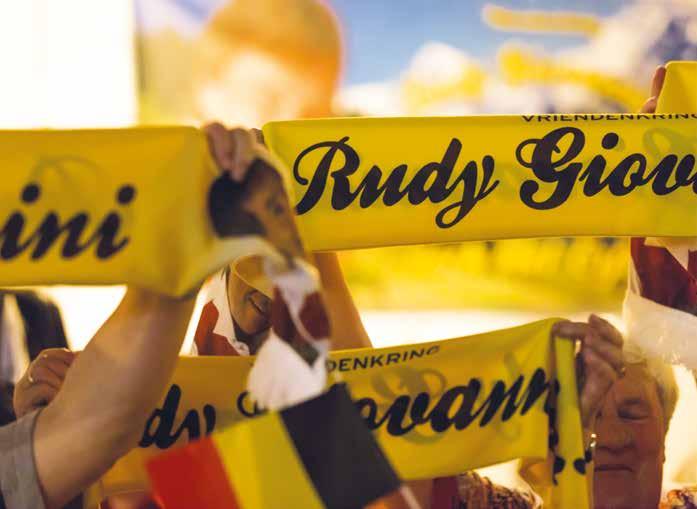
Hat der Lorbeerkranz, den dir die Deutschen Charts im Frühjahr beschert haben, deinen Alltag verändert?
Dass ”Das Beste“ aus meinen letzten fünf Alben mich so weit nach oben katapultierte, hat einen Sturm ausgelöst: Seitdem flattern Einladungen ins Haus, der PREffekt war enorm, neue Plattenfirmen sind auf mich aufmerksam geworden und auch TV-Sender. Ich habe zahlreiche handgeschriebene Briefe von Freunden meiner Musik erhalten, eine Riesen-Anerkennung. Seitdem fühle ich mich wie neugeboren. Mit meinem neuen Schlager-Album ”Hast du Zeit“ besinge ich die
Liebe, die uns durch das Leben begleitet. Die Melodien sind klassischer angehaucht als in den letzten Jahren, und das Werbevideo, das ich in Südtirol gedreht habe – beim Valentinskirchlein bei Meran – kommt sehr gut an. Das Album war ein gänzlich neues Projekt, eine Zusammenarbeit mit dem Musikproduzenten und Komponisten Alfons Weindorf aus München. Ich hatte mir diese Kooperation schon lange gewünscht. Alle 14 Lieder stammen aus seinem Kopf und Musikverständnis – wir haben uns sehr gut ergänzt, finde ich.
Dein musikalischer Werdegang begann im Leiferer Kirchenchor. Aber wie kamst du zur Volkstümlichen Musik?
Über Umwege und Schlingen, der Zufall hat in meinen Leben immer eine außerordentliche Rolle gespielt. Als Teenie sang ich im Kirchenchor, aber auch für eine Rockband, die Doors-Lieder coverte. Ich machte das mit Leidenschaft. Freunde überredeten mich zu einem Kurzurlaub in Neapel. Dort gingen wir ohne jede Er-
25.© 68
wartung erstmals in die Oper: Wir sahen uns Verdis Rigoletto im Teatro di San Carlo an, und ich war auf der Stelle hin und weg. Das war ein Wendepunkt in meinem Leben. Ich hab in der Folge im Bozner Konservatorium vorgesungen, und in Verona tatsächlich klassischen Gesang studiert. Gegen Ende vom Studium kam es zu einer internen Aufführung im Konservatorium, und mein Maestro Arrigo Pola machte mich dort mit seinem bekanntesten Schüler, dem Weltstar Luciano Pavarotti bekannt, der sich von mir begeistert zeigte. Von ihm persönlich erhielt ich den letzten Schliff, nicht nur gesanglich, denn Pavarotti machte mir Mut, meinen eigenen Weg zu gehen und keinen Unterschied zu machen zwischen E-Musik und U-Musik, genreübergreifend zu denken, die sogenannte leichte Musik nicht zu verschmähen. Es gebe nur gute und schlechte Musik. Über die Südtiroler Jodelkönigin Anneliese Breitenberger und ihre Kontakte kam ich zum ZDF-Sonntagskonzert und 2000 dann zum Grand Prix der Volksmusik, für mich ein Experiment. Es blieb nicht dabei.
DAS 20. KÖFELEFEST MIT RUDY GIOVANNINI AM FREITAG, 23. UND SAMSTAG, 24. JUNI 2023

Programm am 23. Juni
Einlass um 18 Uhr
Mario & Christoph ab 19 Uhr
Rudy Giovannini ab 20 Uhr Grußworte und Konzertpause um 21.15 Uhr
Rudy Giovannini von 22 bis ca. 23.15 Uhr
Programm am 24. Juni
Einlass um 18 Uhr
Geri, der Klostertaler ab 19 Uhr
Rudy Giovannini ab 20.00 Uhr
Pause um 21.15 Uhr
Rudy Giovannini von 21.45 bis ca. 23 Uhr
Bescheidenheit sagen dir jene nach, die mit dir zusammenarbeiten. Stargehabe und Allüren liegen dir fern. Bist du mit dieser Beschreibung einverstanden? Wenn das die Leute sagen, dann freut’s mich. Ich finde, Bescheidenheit ist das Tor zum Erfolg. Alles andere ist Unfug oder Vermessenheit. Wenn ich höre, dass man mich ”Caruso der Berge“ nennt, dann bin ich natürlich bewegt, aber ich hab auch Bauchschmerzen. Vor dem großen Caruso würde ich auf die Knie fallen. Gemeinsam haben wir zwei die Tenorstimme, OK, und dass wir beide als Sänger gearbeitet haben. Aber Caruso war der Größte. Zurück zur Bescheidenheit: Sie hilft mir authentisch zu bleiben, verwurzelt, ungekünstelt, mit beiden Füßen am Boden. Und das ist auch der Grund, warum mir das Köfelefest so nah ist, nicht nur, weil’s daheim ist, weil ich von hier aus ausschwirre, meine Familie mir immer den Rücken deckt. So hat mich auch mein mittlerweile verstorbener Vater stets ermutigt, meinen eigenen Weg einzuschlagen. Das vergesse ich ihm nie.
(ar)
5.© 69 E STATE / SOMMER / REMMUS \
LA GRANDE FESTA DI RUDY
NELL’AREA TEDESCOFONA È UN ASSO NELLA MANICA: IL TENORE RUDY GIOVANNINI. ALLA FINE DI GIUGNO, NELLA SUA CITTÀ NATALE LAIVES, SI TERRÀ IL 20° KÖFELEFEST IN SUO ONORE.
Sono passati 23 anni dal suo grande debutto. Da allora, la comunità di fan intorno all’affascinante musicista e beniamino del pubblico è cresciuta in modo esorbitante, ma lo zoccolo duro, il primo fan club, si è riunito a Laives per regalare al cantante un trionfale ritorno a casa dopo il successo al Grand Prix der Volksmusik del 2000 - il preludio del Köfelefest di Laives, lanciato nell’anno seguente. Dopo una pausa dovuta alla pandemia, quest'anno l’edizione del grande anniversario del festival si terrà il 23 e 24 giugno (dalle ore 18 in poi).
In realtà, la festa è dedicata a due grandi personaggi: la star della musica folclorica tradizionale Rudy Giovannini e la chiesetta di San Pietro, la cosiddetta “Peterköfele”, sopra Laives. Entrambi sono diventati punti di riferimento della più giovane città dell’Alto Adige (elevata da paese a città di 18.000 abitanti nel 1985). L'esibizione di Rudy all'annuale Köfelefest attira in Alto Adige fan e amici della scena folk internazionale, recentemente provenienti da sette nazioni. Gli incontri con i suoi fan sono come un grande raduno di amici con Rudy al centro dell'attenzione, come intrattenitore e cantante, molto contento di salire sul palcoscenico della sua città natale, Laives, dopo i grandi successi televisivi e concertistici in Germania, e di incoraggiare la gente a cantare e ballare insieme.

Rudy, la tua carriera musicale è iniziata nel coro della chiesa di Laives. Ma come sei approdato poi alla musica folclorica?
In modo indiretto, il caso ha sempre giocato un ruolo straordinario nella mia vita. Da adolescente cantavo nel coro della chiesa, ma anche in un gruppo rock che faceva cover di canzoni dei Doors. La cosa mi appassionava. Alcuni amici mi convinsero a fare una breve vacanza a Napoli. Lì andammo per la prima volta all'opera senza alcuna aspettativa: vedemmo il Rigoletto di Verdi al Teatro di San Carlo, e fui subito entusiasta. Fu un punto di svolta nella mia vita. In seguito, ho fatto un’audizione al Conservatorio di Bolzano e ho studiato canto classico a Verona. Verso la fine dei miei studi, ci fu un’esibizione interna al
conservatorio e il mio maestro Arrigo Pola mi presentò al suo allievo più famoso, la star Luciano Pavarotti, che fu molto entusiasta di me. Da lui personalmente ho ricevuto gli ultimi ritocchi, non solo vocali, perché Pavarotti mi ha incoraggiato ad andare per la mia strada e a non fare distinzione tra musica “seria” e musica di intrattenimento, a pensare in modo trasversale ai generi, a non disdegnare la cosiddetta musica leggera.
è cresciuto a Laives dove tuttora vive. Ha completato la formazione vocale classica presso i conservatori di Bolzano e Verona, e più recentemente a Modena. La svolta è avvenuta nel 2000, quando ha vinto il terzo posto al Grand Prix der Volksmusik in Svizzera, come esordiente con la canzone Amore, Amore. Nel 2006 ha vinto il Gran Prix accompagnato da Belsy e dal coro Monti Pallidi di Laives. Nel febbraio 2023, il suo doppio CD “Das Beste” (il meglio) ha scalato le classifiche tedesche raggiungendo il secondo posto. Il suo ultimo album “Hast du Zeit” è stato pubblicato in aprile.
www.rudy-giovannini.com
70
RUDY GIOVANNINI
IT/
5.©
/
RUDY'S BIG PARTY
THISPREDOMINANTLY GERMAN-SPEAKING AREA HAS AN ACE UP ITS SLEEVE: TENOR RUDY GIOVANNINI. AT THE END OF JUNE, IN HIS HOMETOWN OF LAIVES, THE 20TH KÖFELEFEST FESTIVAL WILL BE HELD IN HIS HONOUR.
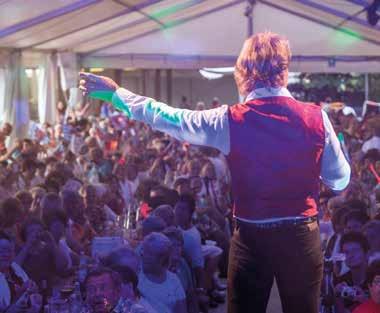
It’s been 23 years since his big debut. Since then, the fan base around this charming musician and audience favourite has grown enormously. But the hard core, the first fan club, gathered in Laives to give the singer a triumphant homecoming after his success at the Grand Prix der Volksmusik in 2000. This was the prelude to the Köfelefest in Laives, launched the following year. After a break due to the pandemic, this year's big anniversary edition will be held on 23rd and 24th June (from 6pm onwards).
In fact, the festival is dedicated to two great local “personalities”: traditional folk music star Rudy Giovannini and the little church of St Peter, known locally as Peterköfele, above Laives. Both have become landmarks of South Tyrol's youngest town (elevated from village to a town of 18,000 inhabitants in 1985). Rudy's performance at the annual Köfelefest attracts fans and friends from the international folk scene to South Tyrol, most recently from seven countries. Meetings with his fans are like a big gathering of friends. Rudy is centre of attention as entertainer and singer. After his great TV and concert successes in Germany, he is very happy to take the stage in his hometown of Laives, and to encourage people to sing and dance together.
RUDY GIOVANNINI
Rudy grew up in Leifers where he still lives. He completed his classical vocal training at the conservatories in Bolzano and Verona, and more recently in Modena. The turning point came in 2000, when he won third place at the Grand Prix der Volksmusik in Switzerland as a debutant with the song Amore, Amore. In 2006, he won the Grand Prix accompanied by Belsy and the Monti Pallidi choir from Leifers. In February 2023, his double CD ‘Das Beste’ (The Best) topped the German charts, reaching number two. His latest album ‘Hast du Zeit’ (Do You Have Time) was released in April.
www.rudy-giovannini.com
Rudy, your musical career started with the church choir. But how did you then come to folk music?
In an indirect way, chance has always played an extraordinary role in my life. As a teenager I sang in the church choir, but also in a rock band that did covers of Doors songs. I was passionate about it. Then, some friends convinced me to take a short holiday in Naples. There I went to the opera for the first time without any expectations: I saw Verdi's Rigoletto at the San Carlo Theatre, and I was bowled over. It was a turning point in my life. Later, I auditioned at the Bolzano Conservatory and studied classical singing in Verona. Towards the end of my studies, there was an internal performance at the conservatory and my teacher Arrigo Pola introduced me to his most famous pupil, the star Luciano Pavarotti, who was very enthusiastic about me. From him I personally received the finishing touches, not only vocally, because Pavarotti encouraged me to go my own way and not to make a distinction between “serious” and “entertainment” music - to think across genres and to not disdain so-called “light” music.
E STATE / SOMMER / REMMUS \ 71
EN
5.©
EINKAUFSMEILE IM FESTKLEID
Laue Sommerabende im Freien sind das Symbol für die Leichtigkeit dieser Jahreszeit schlechthin. In den Gassen von St. Michael-Eppan hat sich seit 1997 eine Tradition etabliert: der Lange Mittwoch.

72 PLEASURE
Abendshopping mit Dorffestcharakter, Flanieren, geselliges Miteinander von Jung und Alt, den Rhythmen von live-Bands lauschen, den Kindern beim Spielen und Ausprobieren zuschauen: Die Mittwochabende mit langen Ladenöffnungszeiten bis 22 Uhr im Juli und August gehören zum Sommer-Stelldichein in Eppan.

Oft reichen die Tagesstunden nicht, um alles zu schaffen: Beruf, Haushalt, Ämtergänge, Besorgungen. Und auch im Urlaub gibt es so viel zu sehen und zu tun. Da bleibt mitunter gar nicht genügend Zeit, um das reichhaltige Angebot der Eppaner Kaufleute in Augenschein zu nehmen, geschweige denn die vielen kleinen, feinen Läden zu durchstöbern. Umso besser, wenn die Geschäfte auch nach dem üblichen Ladenschluss noch geöffnet haben. Dies ist immer am Langen Mittwoch der Fall, der insgesamt neun Mal in den Monaten Juli und August veranstaltet wird. Mittlerweile erstreckt sich das Konzept über viele Südtiroler Gemeinden, doch die Überetscher Kaufleute waren die allerersten, die das Potenzial des Abendshoppings erkannten: Und so sperrt Eppan mittwochs erst um 22 Uhr die Läden zu. Für die Kaufleute ist es eine wunderbare Möglichkeit, sich und ihr vielfältiges Angebot zu präsentieren. Beim gemütlichen Schlendern am Abend ist das Bummeln, Kramen und Erwerben umso entspannter. Aber es geht keineswegs ”nur“ ums Einkaufen!
bm hat mit zwei der Organisatoren im Hintergrund gesprochen, mit Julia Sinn vom Eppaner Tourismusvereins-Team und mit Patrick Peruzzo, dem Obmann des örtlichen hds-Wirtschaftsverbands. Der Verband schließt die Unternehmer im Handel in Südtirol zusammen, vertritt also die Interessen der Wirtschaft, indem er lokale Kreisläufe ankurbelt.


Was kann man sich unter dem gepriesenen ” Dorffestfeeling“ der Langen Mittwoche in Eppan vorstellen?
PP: Persönlich fiel mir das während der Ausgabe 2022 so richtig auf: Das war die erste ohne Einschränkungen nach den durchwachsenen Pandemiejahren. Und die Menschen lechzten nach Zusammenkommen,
73 E STATE / SOMMER / REMMUS \ 26.©
DE/
Leichtigkeit, gemeinsamen Aktivitäten, erst recht im Freien. Das war jedes Mal ein Fest: Einheimische wie Gäste waren gutgelaunt, die Jugend gesellte sich zur Jugend, die Kinder kamen mit vielen eigenen Stationen auf ihre Kosten, die Erwachsenen trafen sich zum Aperitif, zum Essen, zum Musik-Erlebnis, zum Quatschen, ließen sich verwöhnen und genossen das geschäftige Treiben wie selten zuvor. Die Klangwolke und die einfallsreiche Dekoration und Beleuchtung schufen die besondere Atmosphäre und fröhliche Ausgelassenheit.
Woher kam der Antrieb für die Langen Mittwoche?
PP: Die Idee kam vom hds (Handels- und Dienstleistungsverband Südtirol) im Zuge der OrtskernBelebung. Wir experimentieren gern und arbeiten verschiedene Strategien aus, z.B. gerade mit der Kinderbetreuung am Samstagvormittag in St. Pauls und St. Michael, mit Modeschauen. Dass gerade Eppan (mittwochs) und Kaltern (donnerstags) die Vorreiter sein sollten für eine Bewegung, jene der Langen Ein -
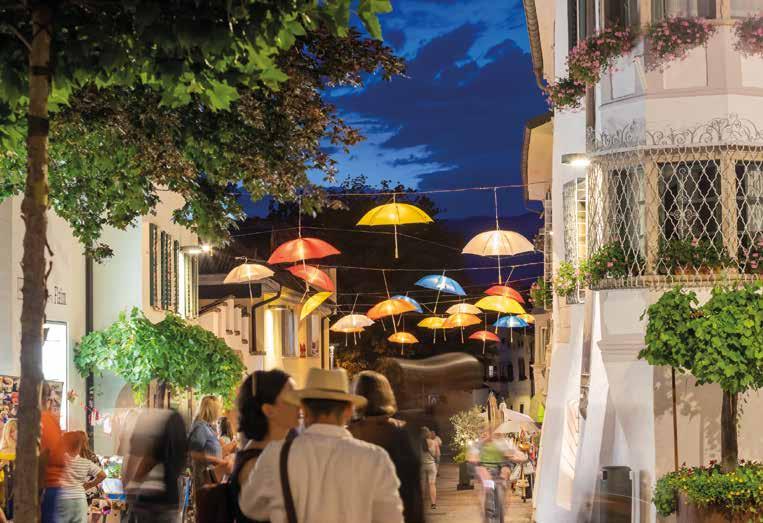
kaufsabende mit Festcharakter, die mittlerweile auf so viele Südtiroler Gemeinden übergeschwappt ist, das hätte man vor 25 Jahren nicht gedacht. Auch haben wir es mit dieser Initiative geschafft, übergemeindlich zu kooperieren. Mittlerweile haben die Langen Mittwoche einen derart guten Ruf, dass Leute von auswärts eigens nach Eppan kommen.
Welches Rahmenprogramm wird geboten?
JS: Das Angebot in den Gassen geht weit über die Öffnung der Geschäfte hinaus. So tragen verschiedene Musikgruppen mit ihren Darbietungen zu einer besonderen Stimmung bei, an jedem Langen Mittwoch gibt es eine andere Musikband an einem festen Platz und eine mobile Band, die ihren Standort wechselt und mit den Menschen mitgeht. Tische raus: Restaurants tischen meist zusätzlich im Freien auf, und gar manches Lokal realisiert kulinarisch eigene Ideen. Besondere Einfälle werden aber auch auf der Ebene der Dorfverschönerung verwirklicht. Für kleine und große Kinder heuern wir Straßenkünstler:innen an, auch Zirkusartisten. Was uns besonders macht,
74
9 lange Mittwoche im Juli und August 2023 in St. Michael/Eppan bis jeweils 22 Uhr
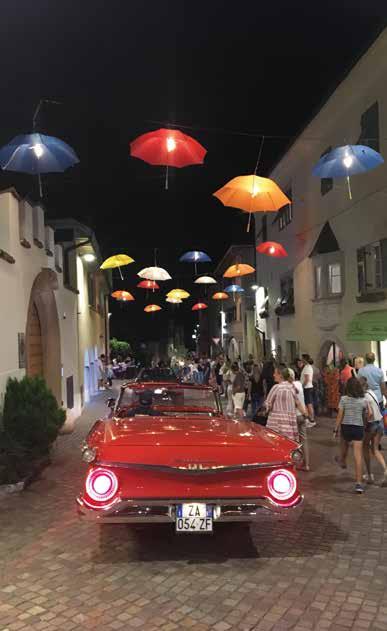
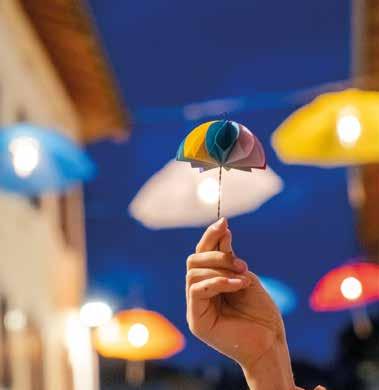
mit offenen Geschäften, live-Musik, Gastronomie, interaktivem Parcours für Groß und Klein
19 Kaufleute
8 Gastronomiebetriebe
48 Vereine
www.eppan.com
sind die Themenabende, die unsere reiche Vereinswelt stemmt: Neun Sommertermine sind’s, und jedes Mal steht der Abend unter einem anderen Stern, z.B. jener der Traditionen mit der Bauerjugend und den Bäuerinnen, die eigene Stationen und Aktivitäten anbieten, zum Schauen: Volkstanz und Schuhplattler, wie zum Kosten und Verkosten: mit Schmankerln aus der Bauernküche. Oder jener der Sicherheit mit Organisationen aus dem Zivilschutz-Bereich: Bergrettung, Feuerwehren, Weißes Kreuz, Hundestaffel und Taucher, die ihr Können zum Besten und Einblicke in ihr Tun geben, zum Austesten, oder aber Eppan active, an dem sich Sportvereine beteiligten, mit Ballspielen oder kurzen Lauf-Wettkämpfen. Das Angebot ist ungeheuer facettenreich und wächst von Ausgabe zu Ausgabe.
Ein zusätzlicher Grund, um die Langen Mittwoche in Eppan zu besuchen?
JS: In Eppan findet sich jeden Mittwoch so etwas wie ein großes gemütliches Wohnzimmer unterm Sternenhimmel mit alten und neuen Freunden, die vorbeischauen.
(ar)
75 E STATE / SOMMER / REMMUS \
MIGLIO DELLO SHOPPING
LE
MITI SERATE ESTIVE SONO IL SIMBOLO DELLA LEGGEREZZA DI QUESTA STAGIONE. DAL 1997, NEI VICOLI DI S. MICHELE/APPIANO È NATA UNA TRADIZIONE: IL MERCOLEDÌ LUNGO.
Shopping serale con il carattere di una festa di paese. Passeggiare, socializzare con giovani e meno giovani, ascoltando musica dal vivo, osservando i bambini che giocano e si cimentano nelle sfide e avventure proposte: fanno parte del carnet di appuntamenti estivi di Appiano i vivaci mercoledì sera con apertura prolungata proposti a luglio e agosto. Nel frattempo, il concetto si è diffuso in molte comunità altoatesine, ma i commercianti dell’Oltradige sono stati i primi a riconoscere il potenziale dello shopping serale. E così, il mercoledì, Appiano apre i battenti anche la sera, ovvero non li chiude prima delle ore 22. bm ha parlato con Julia Sinn dell’associazione turistica di Appiano e con Patrick Peruzzo, presidente della zona dell’Oltradige dell’Unione commercio turismo servizi Alto Adige.
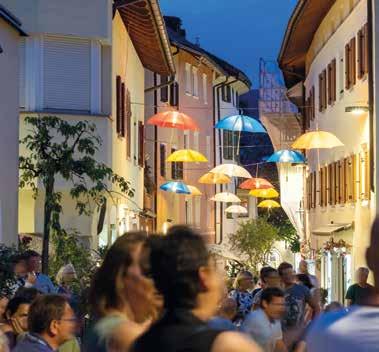
Da dove nasce l’idea dei mercoledì lunghi?
PP: L’idea è nata dall’Unione commercio turismo servizi Alto Adige nel corso della rivitalizzazione dei centri storici dei paesi. Ci piace sperimentare ed elaborare strategie diverse, ad esempio ora con il servizio assistenza ai bambini il sabato mattina a S. Paolo e S. Michele, oppure con le sfilate di moda che organizziamo. Con questa iniziativa siamo riusciti a collaborare, a creare una rete di paesi. Nel frattempo, i mercoledì lunghi godono di un’ottima reputazione, questa stima si traduce in visite assidue anche da Bolzano e dintorni.
Che tipo di programma di intrattenimento viene offerto?
JS: Il programma proposto nei vicoli di paese va ben oltre l'apertura dei negozi. Per esempio, vari gruppi musicali contribuiscono a creare un'atmosfera speciale con le loro esibizioni. Ogni mercoledì lungo proponiamo un gruppo musicale diverso in una postazione fissa oltre a una band mobile che cambia posizione e si muove insieme alla gente creando palchi improvvisati. I ristoranti di solito servono il cibo anche all'aperto e alcuni locali
9 MERCOLEDÌ LUNGHI a luglio e agosto a S. Michele/Appiano fino alle ore 22
con negozi aperti, musica dal vivo, gastronomia, percorsi interattivi per grandi e piccini
19 esercizi commerciali
8 locali
realizzano le proprie idee culinarie sorprendendo anche i paesani. Ma le idee speciali si realizzano anche a livello di abbellimento del centro storico. Per grandi e per piccini ingaggiamo artisti di strada e persino artisti circensi. Ciò che ci rende speciali, poi, sono le serate a tema organizzate dal nostro ricco tessuto di associazioni. C’è la serata delle tradizioni con la gioventù contadina e le donne nell‘agricoltura, che propongono le loro attività: danze popolari e arcaiche quali lo Schuhplattler, oltre a degustazioni e assaggi di prelibatezze della cucina contadina. Oppure c’è la serata dedicata alla sicurezza con le organizzazioni della protezione civile che si esercitano e mostrano le loro abilità: soccorso alpino, vigili del fuoco, Croce Bianca, unità cinofile e sommozzatori. Oppure c’è Appiano active, la serata a cui partecipano le società sportive, con giochi al pallone o brevi gare di corsa.
76
IT/ 26.©
48 associazioni www.eppan.com
THE SHOPPING MILE IN FESTIVE DRESS
BALMY SUMMER EVENINGS IN THE OPEN AIR EXEMPLIFY THE LIGHTNESS OF THIS SEASON PAR EXCELLENCE. LONG WEDNESDAYS: A TRADITION IN THE LANEWAYS OF EPPAN’S ST. MICHAEL, SINCE 1997.
Evening-time shopping with the feel of a village festival – whether strolling, socialising with young and old, listening to the rhythms of live bands, or watching the children playing and trying things out. In July and August, the Long Wednesday late-night opening and shopping are part of the summer Stelldichein in Eppan, with shops open till 10 pm. Since it began, the concept has spread to many other South Tyrolean communities, but the Überetsch merchants were the very first to recognise the potential of evening shopping.
bm Magazine spoke with Julia Sinn from the Eppan Tourism Association team and with Patrick Peruzzo, chairman of the local hds – the South Tyrol Trade and Services Association.
Where did the impetus for the Long Wednesdays come from?
PP: The idea came from the hds, in the course of the town centre revitalisation project. We like to experiment and explore different strategies. For example, just now with childcare on Saturday mornings in St. Pauls and St. Michael. We’ve also managed to cooperate across parishes with this initiative. Since they began, Long Wednesdays have become so well-known that people from out of town come to Eppan especially.
9 LONG WEDNESDAYS in July and August 2023 in St. Michael/Eppan until 10 p.m.

With shops open, live music, gastronomy and an interactive trail for young and old.
19 traders
8 restaurants
What else is on offer on Long Wednesdays?
JS: The programme in the laneways doesn’t just include late-night opening. For example, music groups create a special atmosphere with their performances. On every Long Wednesday, there’s a different band at a fixed location, then a mobile band that changes its location and moves with the people. Restaurants usually also serve food outdoors, with some even serving their very own culinary creations. But special ideas are also put into practice on the level of village beautification. For children small and big, we hire street artists and even circus performers. What makes us special is the themed evenings that our community puts on. There are nine summer dates, with each evening having a different theme, e.g. the traditions of rural youth and women, who have their own spots and activities to be watched. Folk dancing and Schuhplattler, as well as tasting and sampling local rustic delicacies from the farmers' kitchens are a few examples. There is also local safety awareness and information, with organisations from the field of civil protection, including mountain rescue, fire brigades, the White Cross, the dog squad and divers. They demonstrate their skills and give an insight into their work. Eppan active is another, in which sports clubs participate, organising ball games or short running competitions.
77 E STATE / SOMMER / REMMUS \
EN/ 26.©
48 associations www.eppan.com
WEIN HOCH DREI
Die Hoch-Zeit für die uralte lokale Weinkultur im Großraum Bozen ist der Sommer, mit einem Veranstaltungsreigen, der an Archaischem und Astronomischem andockt.
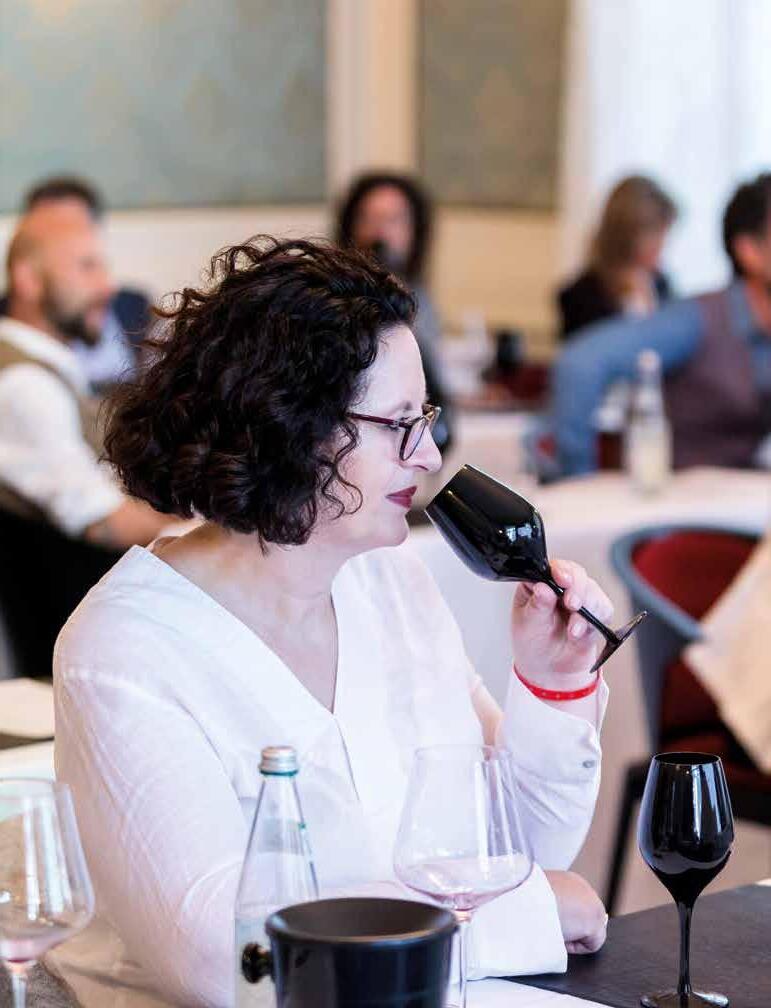
78
GOURMET
Drei Bozner Wein-Veranstaltungen geben den Sommer-Takt an: das WeinEvent Ende Juni am Matteottiplatz, die Lorenzinacht unter den Lauben im August und das Magdalener Culinarium Anfang September. Freilich, im Herbst steht die große Arbeit an: die Weinlese (Südtirolerisch ”das Wimmen“), das Keltern, die Kellerarbeit mit ihren vielen Stationen. Der Bozner Talkessel ist von 500 Hektar Weinbergen umringt, in denen gut 200 Familien seit vielen Generationen mit Hingabe arbeiten und deren kostbare Früchte in zwanzig Privatkellereien und einer Genossenschaftskellerei behutsam verarbeitet werden. So werden Besichtigungen und Wein-Spaziergänge mit Verkostungen angeboten, u.a. die Tour Bacchus Urbanus – vorwiegend im Sommer vor der Weinlese. Auch diese Tradition reiht sich ein in die Bozner Wein-Kultur.
Den Anfang macht das Wine Event an einem der weniger touristischen Stadtplätze im Bozner Stadtviertel Europa-Neustift im Süden des Zentrums, auf dem Matteottiplatz. Zwei Dutzend Kellereien bieten dort ihre Weine zum Verkosten an, während sich die umliegenden Lokale ein Wettrennen beim Zubereiten von schmackhaften Häppchen für den kleinen Hunger liefern. Der Abend bietet einen Einblick in die facettenreiche Welt der Bozner Qualitätsweine, ermöglicht Gespräche, önologische Entdeckungen, Plaudern unterm Sternenhimmel bei den Rhythmen italienischer live-Sommermusik.
Wein & Kometenstaub in der Lorenzinacht
Weinbegeisterte von nah und fern sollten sich den Abend des 10. August 2023 freihalten und unterm Himmelszelt die besten Tropfen von rund 20 Bozner Privatkellereien und der Großkellerei Bozen verkosten, allen voran die autochthonen Rotweine St. Magdalener und Lagrein. Schauplatz dieser beliebten städtischen Weinveranstaltung sind die Bozner Lauben und der Ratshausplatz. Produzent:innen kommen mit Weinliebhaber:innen ins Gespräch, es locken passende gastronomische Spezialitäten,
viele Restaurants der Innenstadt bieten eigene Lorenzinacht-Menüs unter Food&Wine, und Klassische Konzerte werden im Rahmen des Bozner Kultursommers Bolzano Festival Bozen den Abend versüßen.
Schenkt man der alten Weisheit Glauben, ist der Blick nach den Sternen in den Nächten um den 10. August ein Muss. Warum? Die Nacht des heiligen Lauretius ist dafür bekannt, Sterne vom Himmel fallen zu lassen. Der Sternschnuppenregen tritt tatsächlich fast jedes Jahr ein und hat eine wissenschaftliche Erklärung: Wenn Kometenstaub mit hoher Geschwindigkeit in die Erdatmosphäre eintritt, verglüht er leuchtend. Die Sternschnuppen um diese Zeit stammen vom Kometen Swift-Tuttle, der auf seiner Sonnen-Bahn kleine Teilchen verliert – sein Kometenschweif. Anfang August kreuzt die Erde diesen Meteoritenschweif, und sorgt damit für das Sternenspektakel. Das perfekte Himmelszelt für die eine Weinverkostung im Freien, die heuer zum 24. Mal in Bozen erfolgt und als Bozner Lorenzinacht bekannt ist. Sie ist zum Publikumsmagneten geworden, das Konzept ist eindeutig aufgegangen, neue Jahrgänge vorzustellen und sie mit alten zu vergleichen. So funktioniert die Verkostung: An den Kassen werden gegen eine Kaution von 2 Euro Gläser ausgegeben und Tickets verkauft. Die Tickets im Wert von je 1 Euro sind so etwas wie die LorenzinachtWährung, mit der an den Ständen bezahlt wird. Jede Kellerei bietet eine Auswahl von lokalen Rot-, Weiß- und auch Schaum-Weinen an, die für ein, zwei oder drei Tickets verkostet werden können. Dazu verraten die Mitarbeiter:innen der Kellereien Wissenswertes zum Weg des Weins von der Rebe bis ins Glas. Der Fokus auf diese heimischen Sorten, auf das breite Spektrum von Bozner Qualitätsweinen weckt zunehmend Interesse. Während der Prokopf-Konsum in den letzten Jahren drastisch gesunken ist, ist die Qualität in der Flasche gestiegen, und wird auch honoriert, nicht nur von den Wein-Profis, sondern eben auch vom großen Publikum. Was sich
79 E STATE / SOMMER / REMMUS \
DE/
5b.©
in den meist ausgebuchten Sommelierkursen widerspiegelt und in der Freude an gutem Essen und edlen Tropfen, auch bei den Jungen. Es steht vermehrt für Lebensqualität.


Viel Glück auf dem Nachhauseweg, denn bei Schönwetter sieht man den Sternschnuppenregen mit bloßem Auge, auch ohne tief ins Glas geblickt zu haben!
Den Zauber des Bozner Weins vor Ort erleben, zwischen den Weinreben, das ermöglicht die Veranstaltung Magdalener Culinarium am St. Magdalener Hügel im Norden der Stadt, wo das Pergola-Anbausystem noch vorherrschend ist. Der Hügel mit den
sonnenzugewandten Terrassen, gestützt von alten Steinmauern, gehört zu den fotografischen Hotspots Südtirols und liefert zu jeder Jahreszeit eindrucksvolle Bilder der bewegten und bewegenden Kulturlandschaft. Dieser Hügel verrät auch einiges über das harte Leben der bäuerlichen Welt im südlichen Alpenraum und symbolisiert die tiefe Verbundenheit der Südtiroler Landeshauptstadt mit dem Wein, dem eleganten roten DOC-Wein der Stadt Bozen: Die autochthone Rebsorte wird bereits seit dem Mittelalter an den Hängen um St. Magdalena im Stadtteil Rentsch angebaut. Der entsprechende Wein wird aus Ver-
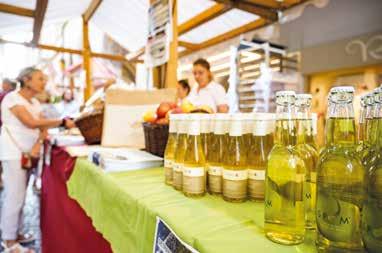
80
29.© 5b.©
1.©
natsch-Trauben gewonnen und mit einem kleinen Anteil von Lagrein verfeinert, der den frischen Wein mit Eleganz ausstattet. Das Ergebnis, der St. Magdalener, ist als ehrlicher Wein bekannt; man sagt über ihn, er sei ”unkompliziert wie die Menschen, die ihn produzieren“ und er sei ein unaufdringlicher Botschafter der Bozner Weintradition. Jedes Jahr werden hier an die zwei Millionen Flaschen produziert. Das ”Schutzkonsortium St. Magdalener“ besteht seit 1923 und vertritt die Interessen dieses für das Gebiet so typischen Weins. Motor der Entwicklung und heutiger Anerkennung waren junge Winzer der Gegend, die an die Kraft des St. Magdalener glauben. 90% der Produzenten sind heute noch Familienbetriebe, die ihre Weine ab Hof verkaufen. Sie widmen dem Weinanbau ihr Leben und freuen sich über Besuch und Austausch, auch zeigen sie anlässlich von Verkostungen gern ihre Weinkeller her.
WINEEVENT AM FREITAG, 30. JUNI
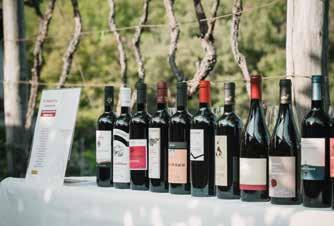
Verkostungen am Matteottiplatz von 19 bis 23 Uhr
LORENZINACHT
AM DONNERSTAG, 10. AUGUST in den Straßen und Gassen der Bozner Altstadt – Rathausplatz und Lauben von 18 bis 24 Uhr
+ Konzerte im Rahmen von Bolzano Festival Bozen
www.bolzanofestivalbozen.eu
um 19 Uhr auf Schloss Maretsch
„Baroque Arabesque“ von Fiori Musicali Austria mit Werken von Kevser Hanim, Giulio Caccini, Athanasius Kircher, Georg Friedrich Händel, Barbara Strozzi, Francisco Tarrega (Eintritt: 10 und 15 Euro)
um 20, 21 und 22 Uhr Kammermusik-Konzert der Gustav Mahler Academy im Merkantilgebäude Paris 1890-1920 mit Werken von Debussy, Ravel, Strawinsky, Poulenc (Eintritt frei)
MAGDALENER CULINARIUM AM FREITAG, 1. SEPTEMBER Aperitif auf den Weinterrassen von St. Magdalena von 17.30 bis 23 Uhr (Shuttle-Service, Anmeldungen und Tickets für den Aperitif beim Verkehrsamt der Stadt Bozen)
www.bolzano-bozen.it
Zum Magdalener Culinarium gehören neben der Wein-Verkostung passende Fingerfood-Kombinationen aus der gehobenen regionalen Küche. Die teilnehmenden Kellereien sind die historischen St. Magdalener-Produzenten der Gegend. (ar)

81 E STATE / SOMMER / REMMUS \
29.©
1.©
ETICHETTE DA SCOPRIRE
L’ESTATE È IL MOMENTO DI MASSIMA
ESPRESSIONE DELL'ANTICA CULTURA ENOLOGICA LOCALE NELL'AREA DI BOLZANO, CON UNA SERIE DI EVENTI CHE SFIORANO L'ARCAICO E L'ASTRONOMICO.

La conca di Bolzano è circondata da 500 ettari di vigneti. Ben 200 famiglie ci lavorano con dedizione da molte generazioni, coltivando i preziosi frutti che vengono poi lavorati in venti cantine private oltre a una cantina sociale. Sono tre i grossi eventi enologici che scandiscono il ritmo dell'estate a Bolzano: Il primo è il Wine Event in una delle piazze meno turistiche della città, nel quartiere Europa-Novacella di Bolzano, a sud del centro, in piazza Matteotti, venerdì 30 giugno (dalle 19 alle 23). Due dozzine di cantine offriranno i loro vini in degustazione, mentre i bar circostanti faranno a gara per preparare gustosi spuntini. La serata offre uno spaccato del multiforme mondo dei vini di qualità di Bolzano, permette scoperte enologiche, chiacchiere sotto le stelle al ritmo di musica estiva dal vivo.
Vino & polvere di stelle alla manifestazione Calici di Stelle: gli appassionati di vino sono invitati a tenersi liberi la sera del 10 agosto (dalle 18 alle 24) e a degustare sotto la volta stellata le migliori gocce di una ventina di cantine private di Bolzano e della Cantina Produttori di Bolzano, soprattutto i vini rossi autoctoni St. Magdalener e Lagrein. La sede di questo popolare evento enologico sono i Portici di Bolzano e piazza Municipio. I produttori incontreranno gli amanti del vino, molti ristoranti del centro città offriranno i loro menu per la sera di Calici di Stelle e i concerti di musica classica addolciranno la serata nell'ambito del Bolzano Festival Bozen (vedi pag. 24-25).
Se credete ai vecchi detti, nelle notti intorno al 10 agosto è d'obbligo guardare le stelle. Perché? La notte di San Lorenzo è nota per la caduta di stelle dal cielo. La pioggia di stelle cadenti si verifica in realtà quasi ogni anno e ha una spiegazione scientifica: quando la polvere di cometa entra ad alta velocità nell'atmosfera terrestre, brucia in modo luminoso. Le stelle cadenti di questo periodo provengono dalla cometa Swift-Tuttle,
che durante la sua orbita solare perde piccole particelle mostrando la sua coda cometaria. All'inizio di agosto, la Terra attraversa questa coda di meteore, dando vita allo spettacolo stellare. È la cornice perfetta per una degustazione di vini all'aperto, che quest'anno si svolge a Bolzano per la 24a volta.
Vivere la magia del vino di Bolzano sul posto, tra le vigne, è possibile grazie all'evento Magdalener Culinarium che si terrà venerdì 1° settembre sul colle di Santa Maddalena, a nord della città, dove domina ancora il sistema di coltivazione a pergola. La collina è uno degli hotspot fotografici sudtirolesi più amati e offre in ogni periodo dell'anno immagini suggestive di questo antico paesaggio culturale. Il vitigno autoctono è coltivato su questi pendii fin dal Medioevo. Il vino corrispondente è ottenuto da uve Vernaccia, affinato con una piccola quantità di Lagrein. Il risultato, il St. Magdalener, è conosciuto come un vino onesto; si dice che sia "semplice come la gente che lo produce" e che sia un ambasciatore discreto della tradizione vinicola di Bolzano. Ogni anno qui si producono circa due milioni di bottiglie. Un aperitivo, dunque, sul terrazzo naturale di questo magnifico vino dalle 17.30 alle 23: servizio navetta, iscrizioni e biglietti presso l'Azienda di Soggiorno e Turismo della Città di Bolzano:
82
www.bolzano-bozen.it IT/
WINE TIMES THREE WITH
Around 500 hectares of the Bolzano basin is vineyards, tended with dedication by some 200 families. Many having been doing so for generations, with the precious fruit of their labour processed in the twenty private and one cooperative wineries here. Three wine events in Bolzano frame the summer: the first is the Wine Event, at Piazza Matteotti, Friday, 30 June (from 7-11 pm). This is one of the more local, less touristy piazzas, found in the Europa-Novacella district, south of the city centre. Two dozen wineries will be offering their wines for tasting, while the surrounding bars will be competing to prepare freshly-made, delicious local street food. The evening offers insights into the multifaceted world of Bolzano's quality wines, full of oenological discoveries during a summer evening under the stars – all to the rhythms of live Italian music.

The night of St Lawrence: wine & stardust . If you have an eye for fine wine, make plans for the evening of 10th August (from 6 pm to midnight). Around 20 of Bolzano’s private wine producers, including the Großkellerei Bozen Winery, will have their best on offer – all under a canopy of shooting stars. Look out especially for our autochthonous red wines: St. Magdalener and Lagrein. The venues for this ever-popular city event are the Bolzano porticoes and Piazza Municipio, with opportunity for wine lovers to meet producers. Local gastronomic specialities will be there to seduce you, with many city-centre restaurants offering their own Lorenzinacht menus. As a bonus, the Bolzano Festival Bozen classical concerts in this period will round off a perfect evening (see p. 29).
According to the Catholic legend of St Lawrence, people look to the night skies around 10th August. This is the night of falling stars, once said to be the tears of the martyr-saint, although today science teaches us differently. The scientific explanation for the (almost) annual “showers” is that when comet dust enters the Earth's atmosphere at high speed, it burns up luminously. The St Lawrence shooting stars are from the Swift-Tuttle comet, which loses small particles of its tail on its solar orbit. At the beginning of August, the
Earth and meteor tail cross paths, creating this starry spectacle. It provides the perfect firmament for our open-air wine event, now in its twenty-fourth year!
To experience the magic of Bolzano wine where it begins, among the vines, head to the Magdalener Culinarium event on Friday, 1st September. It’s set on the St. Magdalener hill, in the north of the city, where the pergola cultivation system is still predominant. The hill is one of South Tyrol's photographic hotspots, boasting impressive panoramas of this ancient cultural landscape, at any time of year. On these slopes, the autochthonous grape variety has been cultivated since the Middle Ages. The wine is predominantly from Vernatsch grapes, refined with a small amount of Lagrein, with around two million bottles of the resulting St. Magdalener produced each year. It’s known as an honest wine - “as uncomplicated as the people who produce it” - it is said, and has quietly become the unpretentious ambassador of Bolzano's wine tradition. So, an aperitivo perhaps, on the wine terraces of St. Magdalena, from around 5.30 to 11 pm. For shuttle service, registration and tickets, see the Tourist Office of the City of Bolzano: www.bolzano-bozen.it
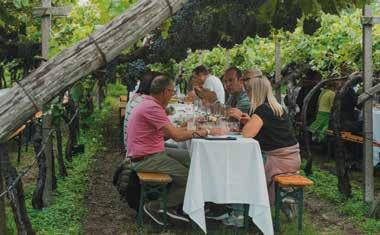
83 E STATE / SOMMER / REMMUS \
A SERIES OF EVENTS THAT TOUCH ON THE ARCHAIC AND THE ASTRONOMICAL, SUMMER IS THE PEAK TIME FOR THE ANCIENT LOCAL WINE CULTURE IN AND AROUND BOLZANO.
EN/ 1.© 1.© 29.©
Ricetta
Canederli di albicocca
(in tedesco “Marillenknödel”, tradizione della cucina asburgica)
Per l’estate in corso bm ha scelto una ricetta per un piatto che non può mancare nei mesi di luglio-agosto come dessert oppure, in alcune famiglie sudtirolesi, anche come piatto unico la sera. A proporcela è il Ristorante Anita, un’antica trattoria bolzanina in pieno centro, piazza delle Erbe 5 - zona a traffico limitato. Lo chef Lucio Marco Guardo, originariamente siciliano, ma anche il cuoco Saqib Ali, originario del Pakistan, si trovano entrambi a proprio agio con gli aromi speziati della cucina tirolese e hanno dato prova di eccellenza nel preparare il piatto che moltissimi bolzanini amano assaporare proprio da Anita.
Ingredienti per 8 canederli
• 8 albicocche lavate e private del nocciolo
• 4 zollette di zucchero spezzate a metà
• 500 gr di patate bollite e schiacciate finemente
• 200 gr di farina 00
• 4 tuorli d'uovo
Per la panatura:
• 240 gr pane grattugiato
• 400 gr zucchero
• 120 gr burro fuso
• 60 gr cannella in polvere
• 1 cucchiaino di scorza di limone grattugiata
Procedimento
Impastare le patate con la farina e i tuorli fino a ottenere un impasto omogeneo, far riposare al coperto per 30 minuti. Inserire dentro le 8 albicocche le mezze zollette di zucchero. Nel frattempo, mettete a sciogliere il burro dolcemente, mescolate in una ciotola il pane grattugiato, lo zucchero e la scorza di limone. Appena il burro è fuso, aggiungete la panatura e mescolate bene fino ad assorbimento. Passati 30 minuti, stendete la pasta fino a circa 1,5 centimetri di spessore, ricavate 8 quadrati di ca. 10 cm x 10 cm, posizionate al centro l’albicocca e chiudete bene formando il canederlo. Fate cuocere i canederli in acqua salata a bollore dolce per 10/12 minuti. Appena pronti, passate i canederli nel pane grattugiato condito con zucchero e cannella e servite il piatto ben caldo.
Consiglio: il dolce tipico è perfetto in combinazione con un bicchiere di vino Pfefferer della zonaservito freddo. Il “Pfefferer” (Pfeffer significa pepe) è un’icona della scena vitivinicola altoatesina per il suo gusto particolarmente speziato e aromatico. Il vino prende il nome dall'uva Pfefferer, una varietà speciale di moscato dorato che tradizionalmente cresce attorno a Bolzano.
84


85 E STATE / SOMMER / REMMUS \
1.© 1.©
Lo chef Lucio Marco Guardo con l'oste Aldina Prousch
MARIA TERESA DI CALCUTTA A BOLZANO

86
INSIDE OUTSIDE
Chiesa e centro pastorale nel nuovo quartiere Firmian.
Sorprendentemente sobria, spaziosa, luminosa e piena di simboli in un contesto residenziale fra i più moderni e agevoli, la chiesa ha voluto ispirarsi alla transizione, ad una cultura di trasformazione a portata di uomo (e donna). L’intento è riuscito anche per il complesso sacrale, uno dei più recenti in provincia. Progettato dall’architetto brissinese Siegfried Delueg nei primi anni 2000 in seguito alla vittoria del concorso di progettazione internazionale da parte della Diocesi indetto nel 1997, e costruito in soli due anni a partire dalla primavera 2010, la chiesa è stata consacrata nel 2012 alla “donna dell’umiltà” Madre Teresa di Calcutta.

Chi ci passa ne percepisce la straordinaria energia anche dall’esterno, al primo sguardo poco maestoso ma nonostante ciò di una solennità sorprendente. Chi, invece, si prende il tempo di entrare, ne ammirerà subito l’atmosfera di pace e il silenzio. Lo fa notare con grande soddisfazione Giovanni Novello (foto a pag. 88), curatore bolzanino ed esperto di arte sacra che ci fa da guida in una giornata soleggiata: “Nasce in un tessuto urbano molto fluido, con edilizia libera e popolare in equilibrio, e nasce contestualmente al quartiere, quindi Chiesa di Dio a fianco della Chiesa degli uomini. L’impronta che si è voluto dare è quella orientata al vivere bene, lasciando ampio spazio alla spiritualità ma in un’isola di servizi alla persona: complesso scolastico (asilo-elementari-medie), centro anziani, circoscrizione comunale, bar, negozi. A simboleggiare questo centro di raccolta per la comunità c’è il sagrato che si innesta nella piazza, c’è l’orizzontalità del complesso che si presenta con una semplicità disarmante, ci sono gli elementi terra, acqua, aria e luce.”
La facciata che si sviluppa per ca. 38 metri è molto semplice, i corpi sono tre e formano una sorta di fortezza. La scelta dei materiali corrisponde ai codici espressivi di leggerezza e ariosità da un lato e di stabilità dall’altro: con lastre di roccia calcarea di Sellenberg (D), venate di oro in una pietra grigiastra che cambia a seconda dell’età e dell’esposizione alle intemperie, con spazi non delimitati, con grandi vetrate (due colorate da Cristoph Hofer, con una tonalità di blu che esalta il contrasto tra luce e tenebre, e una tinta rossa che simboleggia le stimmate, entrambe con testi biblici in ebraico e greco: rispettivamente in latino e greco, testi che si sovrappongono e tessono una superficie strutturata), con giardini di pietra per la comunità parrocchiale formata dai singoli fedeli - insomma, con un’infinità di dettagli molto simbolici. Altri esempi? L’altare, l’ambone e il fonte battesimale sono di marmo bianco di Lasa, lastroni incastonati che formano numeri precisi, oppure la di-
87 E STATE / SOMMER / REMMUS \
IT/ 1.©
sposizione di banchi a raggiera attorno all’altare. Stupisce la dimensione volumetrica generata da una trave in acciaio a grandi dimensioni a forma di croce che copre uno spazio di 38x26 metri. Lungo tutto l’asse della croce corrono i nastri di luce indiretta che viene dall’alto, riversando la luminosità all‘interno e creando un gioco di luce e ombra che cambia a seconda dell’ora del giorno e della stagione. L’opera è stata scelta dalla Fondazione Architettura per la sua interpretazione poetica con il Premio Architettura Alto Adige nel 2013 per il suo equilibrio tra utilità, solidità ed estetica, un’estetica che si ispira alla dottrina teologica. Viene spesso rimarcata la sua dote più grande, quella di riuscire a rappresentare il tempo rimanendo “fuori dal tempo”. (ar)



CHIESA
piazza Nikolaus Firmian 1 (accanto alla scuola dedicata a Alexander Langer)
bus linea 5 + 10A + 10B
88
1.©
1.©
1.©
E CENTRO PAROCCHIALE MARIA TERESA DI CALCUTTA
La luce viene dall’alto, da sopra la trave in acciaio in forma di croce
L'esperto di arte sacra Giovanni Novello
CHURCH AND PARISH CENTRE IN THE NEW FIRMIAN QUARTER
This is architect Siegfried Delueg’s winning project from an international planning competition. The church was consecrated in 2012 and handed over to the new neighbourhood. It’s located together with other services including a school, support centre, senior day centre, bar and shops. The aim is to emphasise the human dimension of the sacred building along with the spiritual. The symbolic component in the building's structure, choice of materials, incidence of light, dimensions, is of utmost importance. A gigantic steel support cross generates the four-part church interior and its complex natural lighting.
Architecture Foundation South Tyrol Prize, 2013
Piazza Nikolaus Firmian 1; bus line 5 + 10A + 10B
KIRCHE UND PFARRZENTRUM IM NEUEN VIERTEL FIRMIAN
Umsetzung des Siegerprojekts eines internationalen Planungswettbewerbs von Architekt Siegfried Delueg. Die Kirche wurde 2012 geweiht und dem neuen Stadtviertel übergeben, sie befindet sich inmitten des Dienstleistungszentrums zusammen mit Schule, Gemeindeschalter, Senioren-Tagesstätte, Bar, Geschäfte. Und sie will so die humane Dimension des Sakralbaus neben der spirituellen hervorheben. Die symbolische Komponente in Baukörper, Materialwahl, Lichteinfall, Dimensionen, ist von größter Bedeutung. Ein gigantisches Trägerkreuz aus Stahl generiert den vierteiligen Kirchen-Innenraum und dessen komplexe natürliche Belichtung.
Preis der Architekturstiftung Südtirol 2013
 Nikolaus Firmian Platz 1; Bus Linie 5 + 10A + 10B
Nikolaus Firmian Platz 1; Bus Linie 5 + 10A + 10B
EVENTS BOLZANO/BOZEN
VISITE GUIDATE STADTFÜHRUNGEN GUIDED TOURS
L’Azienda di Soggiorno e Turismo di Bolzano propone un ricco programma di visite guidate della città e dei suoi dintorni, alla scoperta delle principali attrazioni storico-artistiche. Il programma è disponibile presso l’Ufficio Informazioni.
Auf Entdeckung gehen: Das Verkehrsamt Bozen bietet ein dichtes Programm an geführten Rundgängen zu den wichtigsten kunsthistorischen Schätzen der Stadt Bozen. Das Programm-Heft ist im Informationsbüro erhältlich.
The Tourism Board of Bolzano Bozen organizes a rich programme of guided walking tours of the historic town.

INFO:
Azienda di Soggiorno e Turismo
Verkehrsamt Bozen - Tourism Board, via Alto Adige / Südtiroler Straße 60
T. +39 0471 307 000
www.bolzano-bozen.it
PROGRAMMI SPETTACOLI TEATRALI E CONCERTI
THEATER- UND KONZERTPROGRAMME
THEATRE PERFORMANCES & CONCERTS
www.konzertverein.org
www.kulturinstitut.org
www.theater-bozen.it
www.teatrocomunale.bolzano.it
www.teatrocristallo.it
www.carambolage.org
www.teatro-bolzano.it
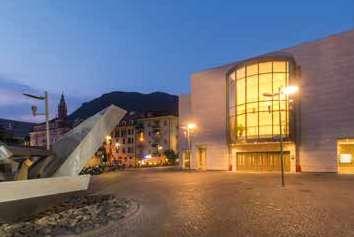
www.theaterimhof.it
www.haydn.it
90
5.©
34.©
EVENTS BOZEN/BOLZANO

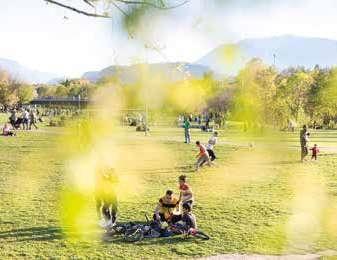




Scannen Sie den QR-Code, um in unserem Online-Veranstaltungskalender mit allen Aktualisierungen zu stöbern.

Consulti il nostro calendario degli eventi con tutti gli aggiornamenti scansionando questo codice.
View our events calendar with all updates by scanning this code.
www.bolzano-bozen.it
91 E MMER / REMMUS \
1.©
5.© 30.©
29.©
30.©
5.©
EVENTS EPPAN/APPIANO

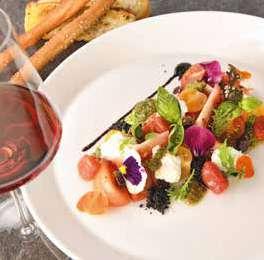
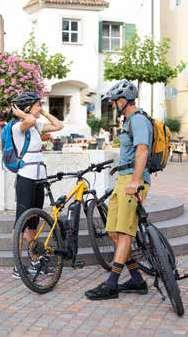

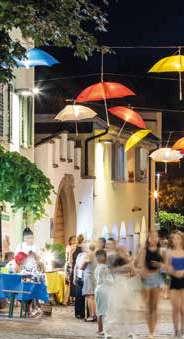

Scannen Sie den QR-Code, um in unserem Online-Veranstaltungskalender mit allen Aktualisierungen zu stöbern.
Consulti il nostro calendario degli eventi con tutti gli aggiornamenti scansionando questo codice.
View our events calendar with all updates by scanning this code.
www.eppan.com

92
32.©
7.©
33.©
5.©
31.©
27.©
EVENTS LEIFERS/LAIVES


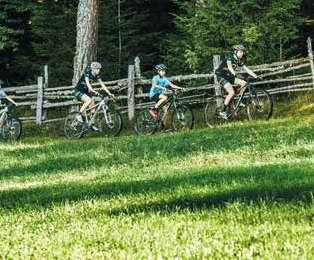


Scannen Sie den QR-Code, um in unserem Online-Veranstaltungskalender mit allen Aktualisierungen zu stöbern.

Consulti il nostro calendario degli eventi con tutti gli aggiornamenti scansionando questo codice.

View our events calendar with all updates by scanning this code.
www.suedtirols-sueden.info/de/leifers/
93 SOMMER / REMMUS \
25.©
25.©
5b.© 25.©
35.©
25.©
EVENTS RITTEN/RENON

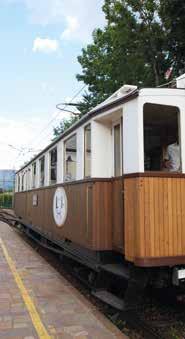

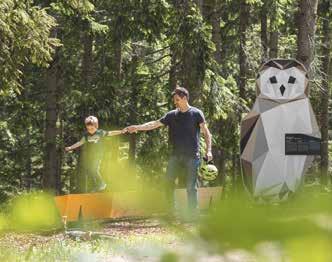
Scannen Sie den QR-Code, um in unserem Online-Veranstaltungskalender mit allen Aktualisierungen zu stöbern.
Consulti il nostro calendario degli eventi con tutti gli aggiornamenti scansionando questo codice.
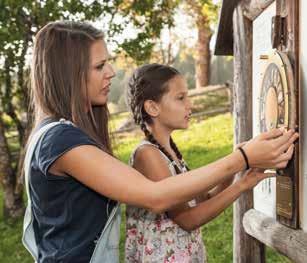
View our events calendar with all updates by scanning this code.

www.ritten.com
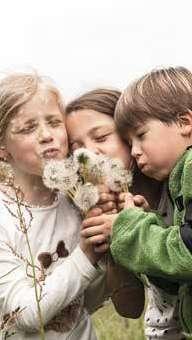
5.©
23.©
3.©
94
36.©
3.©
37.©
EVENTS JENESIEN/SAN GENESIO
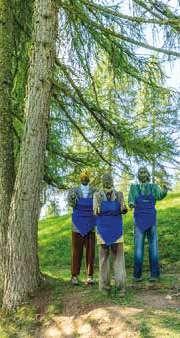

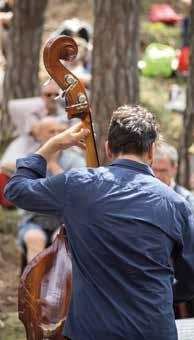

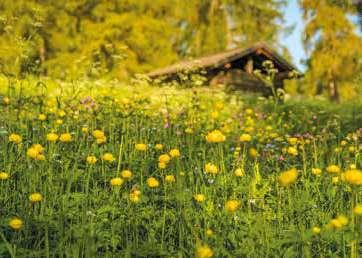
Scannen Sie den QR-Code, um in unserem Online-Veranstaltungskalender mit allen Aktualisierungen zu stöbern.

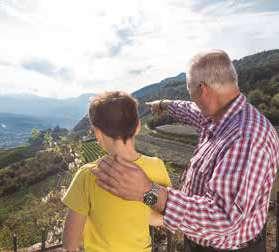
Consulti il nostro calendario degli eventi con tutti gli aggiornamenti scansionando questo codice.
View our events calendar with all updates by scanning this code.
www.jenesien.net
95 E SOMMER / REMMUS \
24.© 24.©
16.©
5.©
5b.©
24.©
EVENTS SARNTAL/VAL SARENTINO

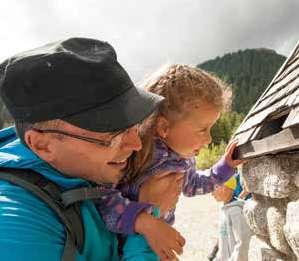



Scannen Sie den QR-Code, um in unserem Online-Veranstaltungskalender mit allen Aktualisierungen zu stöbern.

Consulti il nostro calendario degli eventi con tutti gli aggiornamenti scansionando questo codice.
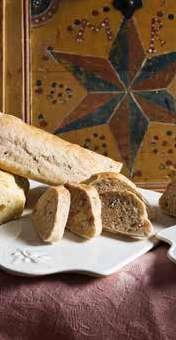
View our events calendar with all updates by scanning this code.
www.sarntal.com
96
19.©
18.©
20.©
20.©
19.©
38.©
ALTO ADIGE


STILE DI VITA MADE IN
UNO
ww w . a l p i tz . c o m
Das nächste bm Heft – die Herbstausgabe - erscheint Anfang September 2023. Die Ernte ist in vollem Gang: Trauben & Kastanien. Handarbeit und Handwerk spielen im Hintergrund eine Rolle, doch die Königsrolle spielt der Wein, der junge Most und der alte Edle: Weinklänge in altem Gemäuer entlang der Südtiroler Weinstraße. Außerdem Kastanien und die Törggele-Tradition. Fotografisch und im Text festgehalten als sinnlicher Vorgeschmack. Daneben Porträts, Eindrücke der städtischen Museen, Ausflugsideen und Insidertipps.
Il prossimo bm – l’edizione autunnale - esce i primi di settembre 2023. La vendemmia è in pieno svolgimento: uva & castagne. Il lavoro manuale e l'artigianato fanno da sfondo, ma il ruolo principale spetta al vino, dal primo mosto al nobile invecchiato. Inoltre, Suoni di Vini in antiche mura lungo la Strada del Vino dell’Alto Adige. E poi castagne e la tradizione del Törggelen. Fotografie e testi offrono un’anticipazione sensoriale. Inoltre, ritratti, impressioni dei musei cittadini, idee per escursioni e consigli pratici.
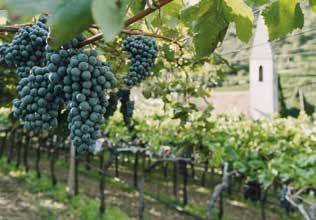
The next bm - the autumn edition – is out early September, 2023. The harvest is in full swing, with grapes & chestnuts galore! Manual labour and handicrafts provide the backdrop, but wine is centre stage: from the season’s first youthful musts to cask-aged wonders. In addition, there are the sounds of wine in ancient walls along the South Tyrolean Wine Road. Then of course chestnuts, and the tradition of Törggelen. The photographs and articles entice, to create a sense of anticipation. In addition, there are interviews, impressions of city museums, ideas for excursions and many practical tips.
QUIZ: Solution from page 11
c) The Messner Mountain Museum Firmian at Sigmundskron Castle, on the southern edge of Bolzano, is described by its creator as the “centrepiece” of his six-part museum chain. In the MMM Firmian, the extreme mountaineer, border hopper and all-rounder Reinhold Messner has been thematising the relationship between man and mountain since 2006. The fortress complex is also an important political symbol for South Tyrol: in 1957, a huge protest rally took place here under the leadership of Silvius Magnago. The demand “Leave Trento” was part of the march for autonomy.
bm
Bolzano Bozen Magazine
Registrazione al Tribunale di Bolzano
Registereintragung Landesgericht Bozen
Nr. 11/99 - 19.7.1999
Edition: 8.000 bm 2/2023
Online-Magazine: www.bolzano-bozen.it
facebook: @visitbolzanobozen
instagram: @bolzanobozen
Editor
Azienda di Soggiorno Bolzano
Verkehrsamt Bozen
Tourist Board Bolzano via Alto Adige 60 – 39100 Bolzano
Südtiroler Straße 60 – 39100 Bozen
Tel. +39 0471 307000 info@bolzano-bozen.it www.bolzano-bozen.it
Managing Editor
Roland Buratti Director
Anita Rossi
Editorial staff
Anita Rossi (ar), Raoul Melotto (rm), Roberta Agosti, Elena Cortese, Martina Spinell, Monika Hellrigl, Doris Wieser, Martina Gamper, Evi Innerhofer, Nina Walterscheid-Müller, Walter Perkmann, Verena Gamper
Layout & art design ma.ma promotion
Marion Maier, Valentina Cincelli
Photography
Manuela Tessaro
Translation
Peter Brannick (pb)
Print
Sudtirol Druck Snc, Tscherms- Cermes BZ
Foto Credits
Cover: Thomas Roetting / Sylvia Pollex
1.©Manuela Tessaro 2.©Fanni Fazekas; 3.©Tiberio Sorvillo; 4.©Michael Guggenberg; 5.©Luca Guadagnini; 5b.©Luca Guadagnini, Tiberio Sorvillo; 6.©Alberto Campanile; 7.©Guenther Skuk; 8.©Giada Tuffanelli; 9.©Premio Agitu Preis/Gregor Khuen Belasi; 10.©TV/HGV Jenesien; 11.©Thomas-Stankiewicz.de; 12.©Achim Meurer; 13.©Petunia Vista; 14.©Kathrin Reider; 15.©Helga Salchgger; 16.©AndreaMacchia; 16.©Guenther Pichler; 17.© Rijeka Ballet, Foto: Fanni Tutek Hajnal; 18.© Carmen Moser; 19.©helios.bz-Martin Rattini; 20.©Reinswalder Bergbahnen AG; 21.©Sophie Pichler; 22.©Tourismusverein Ritten; 23.©Oliver Jaist Tourismusverein Ritten; 24.©Tourismusverei Jenesien/Associazione turistica S.Genesio; 25.©KLOTZ ANDREW; 26.© Eppan Tourismus_LIVE-STYLE Agency; 27.©LIVE-STYLE Agency - daniel mair; 28.©Eppan Tourismus; 29.©Daniele Fiorentino; 30.©Thomas Roetting / Sylvia Pollex; 31.©Helmuth Rier; 32.©andreas.marini photographie; 33.©WWW.FOTOGRAFIELAFOGLER.IT; 34.©Othmar Seehauser; 35.©Thomas Monsorno; 36.©Katharina Bauer -TV Ritten; 37.©Tourismusverein Ritten- Ploner Hannes; 38.©Ollerhond-Selbergmochts-Buch Graphic elements: Designed by Freepik
98
29.©




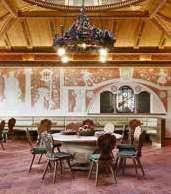
E STATE / SOMMER / REMMUS \

Via Galvani Straße 29, Bolzano Sud / Bozen Süd


























































































































































 Nikolaus Firmian Platz 1; Bus Linie 5 + 10A + 10B
Nikolaus Firmian Platz 1; Bus Linie 5 + 10A + 10B




















































